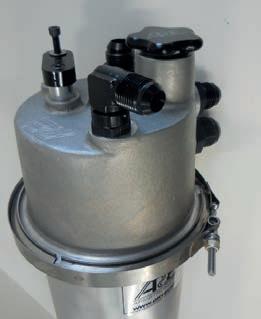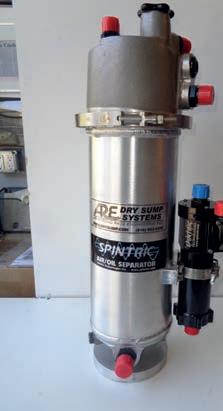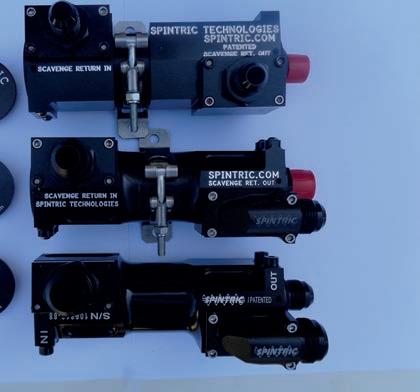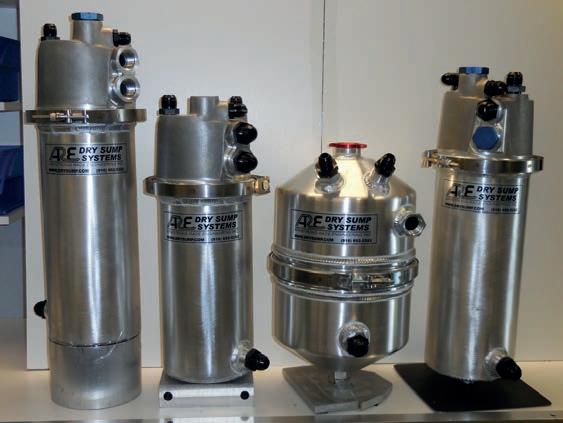The latest developments from the FIA on future powertrain technology
Formula 1 2023

In-depth technical insight as new Grand Prix season gets underway
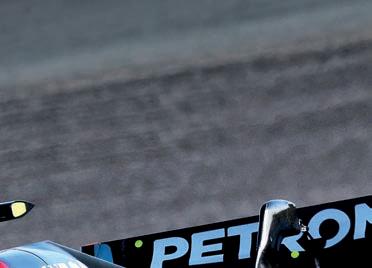



CHEVROLET’S NASCAR DREAM Camaro wins at Daytona

LE MANS HYPERCAR Toyota GR010 updated
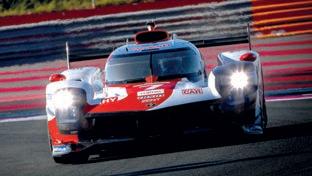
WORLD RALLY CHAMPIONSHIP Hybrids dance on ice
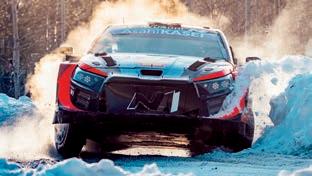
71 SERIES - Our largest capacity filters. Large 2.47" diameter; Two lengths. Reusable SS elements: 10, 20, 45, 60, 75, 100 or 120 micron; High-pressure core. Choice of AN style or Quick Disconnect end caps. Options include: differential pressure by-pass valve; auxiliary ports for temp probe, pressure regulator, etc.; Outlet caps with differential pressure gauge ports to measure pressure drop.
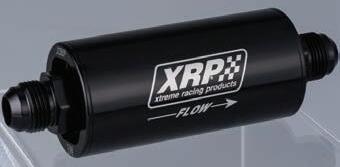
71 SERIES MULTI-STACK - FAILSAFE STAGED FILTRATION
Multi-Stack adapter sections allow the stacking of two or more 71 Series bodies, long or short, so you can combine a variety of filtration rates or backup elements. Use a coarse micron screen element to filter out large debris upstream, followed by a tighter micron second-stage element to get smaller contaminants. Options include: adapters with take-off ports to facilitate the use of a differential pressure gauge which monitors contamination levels in all stages of the filter assembly.
SPACE SAVER SERIES - OUR MOST COMPACT FILTERS




3 Body Styles - 7 Choices of Screens

About 1 1/8” diameter, they fit everywhere and they do the job right for so many applications! 2 sets of O-Rings for a variety of racing fluids. Choose from 10, 20, 40, 60, 75, 100, or 120 micron screens suit all needs.





72 SERIES - Same large-capacity, 2.47” diameter body as our 71 Series but with a 2-piece body that couples together with a Clamshell Quick Disconnect for quick service. 72 Series uses the same stainless steel elements, mounting hardware and end fittings as 71 Series.
SPACE SAVER DRY SUMP - Same space-saving size, these dry sump filters include a coarse-screen #16 mesh filter that protects your pump in high-volume race applications.


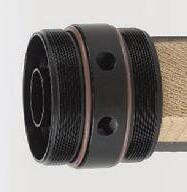

and Stage For Maximum Protection On Race Day
INTRODUCING THE NEW 70 SERIES
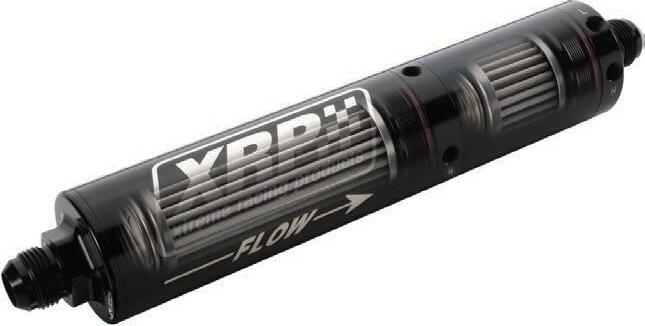

Compact 1.97" diameter body features a springless design to maximize filtering area in tight spaces. 70 Series filters are ideal for applications where space and weight are of primary concern. Bodies are available with AN-style end cap sizes -4 through -12, in heavy or lightweight wall versions. 70 Series filter elements come in two varieties: pleated cellulose (10 or 20 micron) or reusable pleated stainless steel wire (10, 20, 45, 60, 75, 100, or 120 micron). Undercut inlet end caps (sizes -4 through -10) offer maximum weight savings and modern look.
70 SERIES Pleated Stainless Steel or Cellulose Elements





COVER STORY
6 F1 powertrain
Honda’s ongoing development of the RBPTH001 engine
COLUMN


5 Dieter Rencken on the value of attending F1 testing

FEATURES
12 F1 2026 power units
Where politics and technology will converge in the future
20 Matt Harman Alpine technical director on the race for glory in 2023
28 WRC 2023
How teams coped with the first season of hybrid racing
36 Land Speed Racing
Recalling the trials and success of the JCB Dieselmax project
TECHNICAL
50 Steel appeal
Exploring the ongoing case for tube frame chassis
58 NASCAR
Why GM’s Camaro ZL1 was the perfect base for its Gen 7 racer
70 WEC Toyota unveils evolutionary updates to the GR010 LMH
74 Danny Nowlan
The basic requirements for successful data acquisition

BUSINESS
78 News

F1 wets out in the cold, McLaren GT3 EVO and three-phase safety protocol for Le Mans
81 Chris Aylett
Tomorrow’s World of Motorsport
82 Bump stop







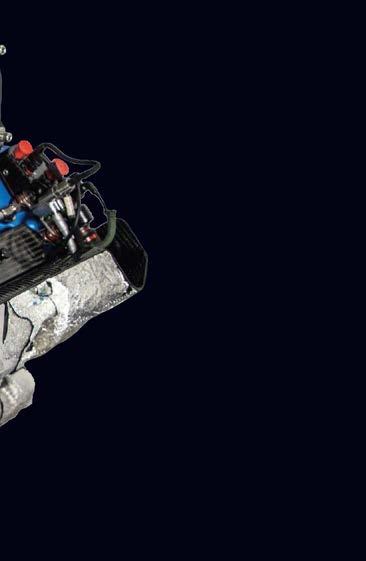







Diminishing returns
The value in attending F1 testing may have changed, but it’s still there
Going trackside during Formula 1 testing is undoubtedly great fun, particularly for my inner fan, but in real terms the activity creates much ado about very little, given that on every lap all teams are on different run schedules.
Unless finer details are known (which are invariably kept well hidden), a rapid Williams catching an unwieldy Red Bull is likely to be in qualifying trim, while the current Constructor Champion car is on a full race simulation.
True, there are telltale signs here and there, but these can usually be better picked up via track TV channels and the wall-to-wall global broadcasts that are now a fixture of testing. Gone are the days of private tests. Fans now have full access to all three days of running. The flipside to this is that the more ignorant amongst them then complain about a lack of continuous nail-biting action! That is clearly generation Netflix talking.
The upshot of this is the value of travelling to Bahrain for the full three days of testing – make that a dozen days as I needed to arrive the day prior, and then stay through to the race given the cost ineffectiveness of returning to Europe for just two days at home – lies not in heading for turns one or 11 on a regular basis, but in having full paddock access, and with it the direct interaction with team bosses, drivers and engineers.
Best of the rest
Still, whenever and to whoever one spoke of Max Verstappen and RB19, the combination was accepted as being in a class of their own, so much so that talk rapidly turned to ‘best of the rest’.

Although Monégasque driver, Charles Leclerc, told Racecar Engineering his Ferrari was quick in a straight line but paid the price in corners, the red car was generally reckoned to be next in line with particularly strong slow corner traction. As per 2022.
In those three words lies the key to the season. Bar changes to floor design due to rule amendments to reduce porpoising, the ‘new’ cars are fundamentally evolutions of what went before. As such, they look and sound similar, and no doubt feel similar to those behind the wheel.
True, weight has been shaved off here and there, and a few pointy bits made pointier, only seasoned observers can tell the differences between 2022 and ’23 cars at a glance.
That said, there is one glaring exception – and there always is one in F1 – in that the Aston Martin is more than simply an evolution of what appeared here a year ago at the dawn of the ‘new era’ for two reasons. Firstly, having introduced what was basically a new car that aped Red Bull’s heavily sculpted sidepods at last year’s Spanish GP, the ‘green team’ has taken the concept to the extreme with the AM23.
It showed, too. Paddock sages suggested the car could give Mercedes a real run for its money, particularly in the relentless hands of Fernando Alonso, and might even give Ferrari a headache. That should amuse the car company’s main board in Gaydon, as most members were recruited from Maranello after incoming Ferrari CEO, Benedetto Vigna, had a clear out.
the word ‘most’ seems accurate. At full chat, the 2023 car displayed some, but not all, of the bouncing that blighted its predecessor, and seemed slightly unwieldy, yet during a ‘glory run’ before the close of business on Saturday the seven-time champion briefly topped the times. An eighth title, however, seems some way off.
The back six
Of the remaining six teams, Alpine impressed with its superbly integrated A523. Could the team give Mercedes a headache? On test evidence, the answer is yes, but whether the Anglo-French outfit sustains the challenge over the season remains to be seen. Certainly, as with Aston Martin, long run pace was impressive.
Alfa Romeo (Sauber) also put up an impressive showing, much as per 2022 testing, but with less of the unreliability driven at the time by an obsession with weight saving. Indeed, the car was the only one on the 2022 limit, so it proved the C43 is user-friendly and, if the car’s cooling issues are resolved, it will be a strong midfield contender.
Up there with the red / white / black team was the black / red / white outfit using the same Ferrari powertrain and hydraulics / electronics, namely Haas. A lot more financially bullish this year after cutting a deal with Moneygram, Kevin Magnussen reckons the effect is already noticeable, and the team’s new-found consistency bears that out.
It would be flippant to suggest that AM technical director and aero guru, Dan Fallows, controversially recruited last year from Red Bull, had simply cut and pasted his Milton Keynes expertise before swapping green wrap for blue as the word is that the car’s major strength lies in ultra-low tyre degradation, particularly on long stints on softs. That points to more than simply aerodynamics, and some serious work by the vehicle dynamics team.
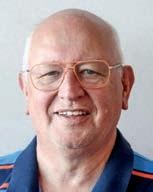
Lewis Hamilton suggested Mercedes had corrected most of W13’s ills, and his choice of
Which brings me to the final three: McLaren, whose performance over the three days was seriously concerning; AlphaTauri, ditto, albeit word is the team focused on race pace, not qualifying runs, and Williams. The latter tailed the times throughout, has a new (inexperienced) team principal in James Vowles and no technical director at time of writing.
McLaren’s issues are twofold. The floor regulation changes hit the team harder than most due to its original ‘edgy’ design, while Covid delayed the team’s facilities upgrade programme, so it is still using Toyota’s Cologne wind tunnel, despite being based in the UK. By the time you read this, the season will be under way, but the three days in Bahrain sure were fun while they lasted.
Gone are the days of private tests, [via track TV channels and global broadcasts] fans now have full access to all three days of running
Optimal evolution
As the 2023 season gets underway, Racecar spoke to Tetsushi Kakuda, F1 project leader at Honda Racing Corporation, to nd out how the team approached the development of the 2022 Red Bull Powertrain power unit
By STEWART MITCHELLThe Red Bull RB18, which won the 2022 F1 Constructors’ and Drivers’ Championships, was powered to its dominant success by a Red Bull Powertrains (RBPT) RBPTH001. This power unit is a derivative of the Honda RA621H, used by the Japanese manufacturer during the 2021 F1 World Championship campaign.
Red Bull Powertrains was created in 2021 to supply power units to Oracle Red Bull Racing and Scuderia AlphaTauri for the 2022 F1 season and beyond, after Honda announced it would exit F1 at the end of the 2021 season. Although Honda’s participation
in F1 was officially over, the 2022 Oracle Red Bull Racing and Scuderia AlphaTauri power units were Honda-produced, assembled, maintained, and trackside supported, despite their RBPT designation.
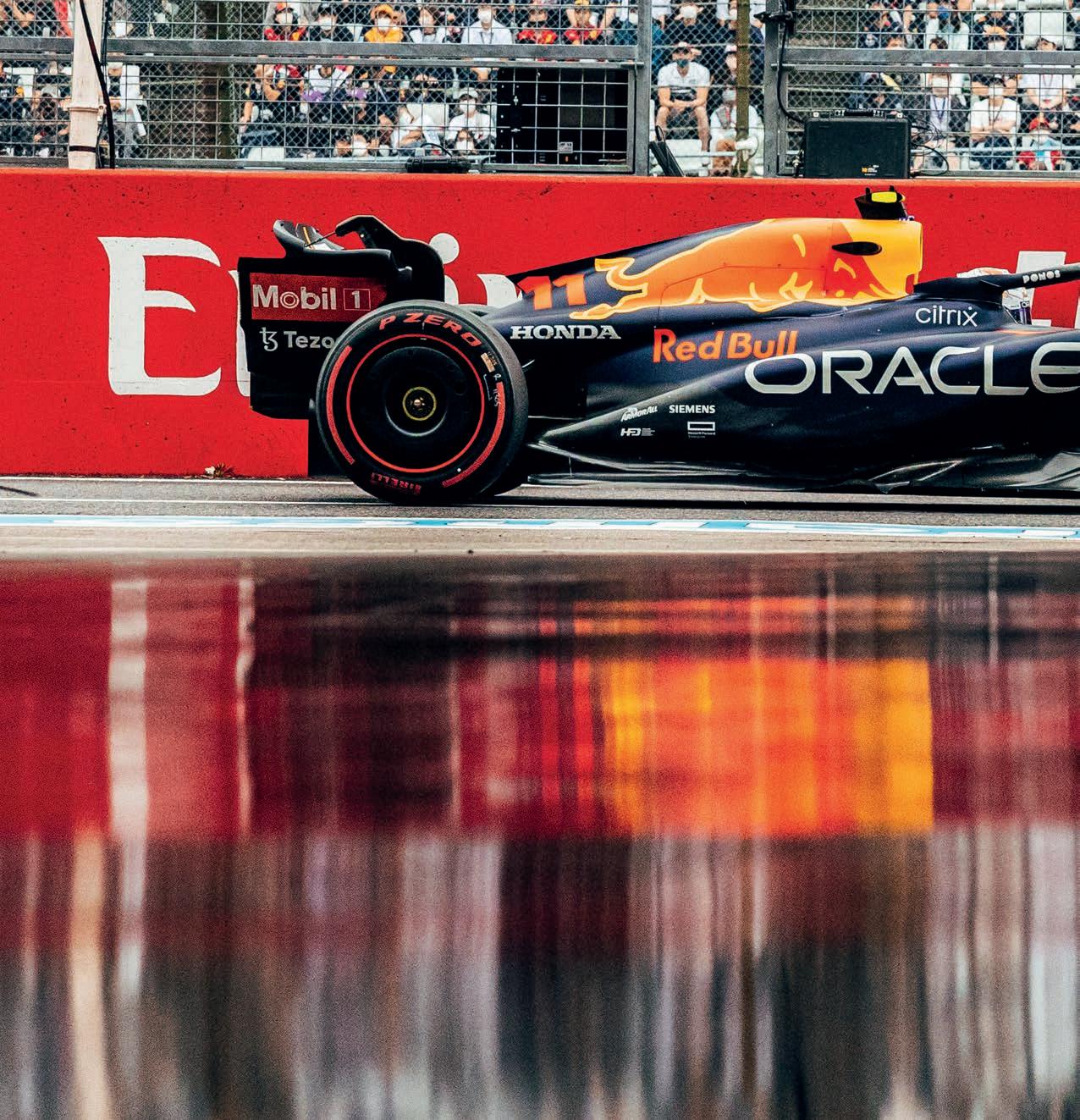
Between 2021 and 2022, there were significant FIA-implemented development restrictions in place for the power unit manufacturers, limiting the spec changes for the 2022 season ahead of an internal combustion engine (ICE), MGU-H, turbocharger, fuel and oil freeze from 1 March 2022, and the MGU-K, energy store and control electronics freeze from 1 September.

After these dates, power unit specifications were frozen until the end of the 2025 season, before a new power unit era starts in 2026.
Detail in design
Despite the limited development scope, Honda engineers in Japan were busy making detailed but essential design changes to the RA621H to produce its successor’s specifications. Without Honda’s commitment, Red Bull would have started the new era at a significant disadvantage, as the other manufacturers developed their power units before those freeze dates.
Honda developed the 2022 RBPTH001 power unit at its research and development centre in Sakura City, Tochigi prefecture, run by Honda’s racing subsidiary, HRC (Honda Racing Corporation). In charge of the development there is Tetsushi Kakuda, executive chief engineer, automobile racing development division and F1 project leader.
The E10 issue
The most significant development area for the 2022 Formula 1 power unit specification was around the new fuel introduced for 2022, which includes 10 per cent ethanol, up from the previous 5.75 per cent bio-content.

There are pros and cons to running any engine on E10. The construction of the ethanol molecule means it carries a lower quantity of joules per kilogram as a combustible vapour compared to the equivalent volume of petrol, making the combustion process less potent. However, engineers can adjust several elements of the engine configuration, as well as running parameters, to exploit some beneficial characteristics of the higher ethanol content. For example, compression ratio, if permissible by regulation, can increase and drive combustion efficiency higher.
Honda tested several E10 formulations proposed by its fuel partner, ExxonMobil, before choosing the one with the most desirable characteristics.
‘Because E10 has very different characteristics from the previous fuel generation, we had to develop the combustion-related elements to work with that,’ Kakuda explains. ‘The calorific value of E10 is lower than the previous fuel, which
would reduce engine output if we could not address it. We adjusted the ignition timing for the 2022 engine compared to 2021, and peak cylinder pressure is higher in the 2022 engine.’
There was no change to the pre-chamber ignition systems coinciding with the fuel evolution, though the MGU-H ERS was tuned to the E10 exhaust gas entropy.
Honda and ExxonMobil conducted detailed investigations into the fuel and lubricant interaction with combustion chamber geometry. Not all the fuel injected into the combustion chamber burns to generate power, thanks to crevice losses around the pre-chamber ignition, valve seats and piston top land. Formula 1 engines typically have low crevice volumes, but still roughly two per cent of the injected fuel escapes combustion by residing in them.
Top secret
Kakuda would not be drawn to expose the details of the changes, calling them ‘top secret’. However, he does admit that
‘we explored many different paths in the development of this area and tried many different configurations. We have also developed very accurate simulations to prove our concepts before implementing them into a mechanical system.’
The RBPTH001 takes advantage of a significant amount of additive manufactured (AM) parts. Kakuda emphasises the fact that additive manufacturing allows engineers to create components with structure only where load transfers through the part, which is obviously efficient.
‘Additive manufacturing has allowed us to optimise many components, including pistons and the turbocharger housing,’ he says. ‘Although Formula 1 has many restrictions on the materials teams are allowed to use, we have tried many different materials and combinations that fit within the regulations to give us the performance we want for our additive manufactured components.’
Honda also adjusted the crankshaft and cylinder block geometry to ensure reliability with the new E10 combustion conditions, while a specialised cylinder liner coating was applied at Honda’s Kumamoto factory.
‘We developed the whole combustion loop to exploit E10 in the most profitable way, including the injection system, exhaust system and turbocharger compressor and turbine efficiencies,’ Kakuda notes. ‘The RBPTH001 power unit weighed more than the RA621H [2021 version] thanks to beefedup components to aid reliability, but the dimensions are almost identical in terms of the outside shape and volume.
Honda and ExxonMobil conducted detailed investigations into the fuel and lubricant interaction with combustion chamber geometry
RBPTH001 POWER UNIT
‘However, several points of the chassis installation are different. For example, the exhaust and intake pipework and the electrical system loom layout.’

Close collaboration
Of note is the fact the RBPTH001 power unit was not solely a Honda F1 department venture. The broader Honda company was involved in various activities. The Honda aircraft division, which developed the HF120 turbofan engine in conjunction with GE, the motorcycle division and the automotive division assists wherever necessary.
‘If the F1 division would like expertise from any others then the working relationship is there, and vice versa,’ Kakuda explains. ‘We collaborated closely with the jet engine division to develop our compressor and turbine for the Formula 1 project.

‘The jet engine division also has very efficient and precise manufacturing processes that we were able to exploit in Formula 1, including additive manufacturing.’

‘Additionally, we reached out to the motorcycle division to implement the cylinder wall coating. The engine life would be significantly reduced if we wanted to run this high cylinder pressure without using the specialised coating.’
The investigation into the cylinder wall coating was triggered by Technical Directive 37, implemented in September 2020, which forces teams to only use one power mode for the power unit during the race weekends. Some teams decided to sacrifice reliability for outright performance as they could come back and improve reliability during the season as the regulations allowed for reliability improvements within the specification freeze. In contrast, Honda’s power units from late 2020 onwards have focussed equally on reliability and output.
‘With the implementation of Technical Directive 37, it meant we couldn’t run our qualifying mode any more, and at the time our engine wasn’t strong enough to run that mode throughout the whole race weekend,’ Kakuda says. ‘This is when we started to focus on developing reliability for a higher average output from the power unit.’
Reliability target
‘The RBPTH001’s reliability target is to cover eight grands prix with a single power unit, as it has been for the last few years. That is a base position. It’s a fine balance to strike but, ultimately, we want to achieve the three power unit regulation without incurring penalties.
‘The 2022 power unit achieved a higher thermal efficiency than in 2021, even with the lower calorific value of the E10 fuel. I can confidently say it’s well above 50 per cent, but that is all I can say. This is thanks to the
The 2022 develpment of the PU focused largely on optimising efficiency in running on E10 fuel. Ignition timing and peak cylinder pressure were both tweaked, a specialised cylinder liner coating used and crankshaft and cylinder block geometry adjusted for reliability. [Honda's 2019 PU, the RA619H illustrated here]










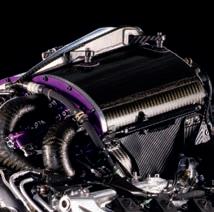


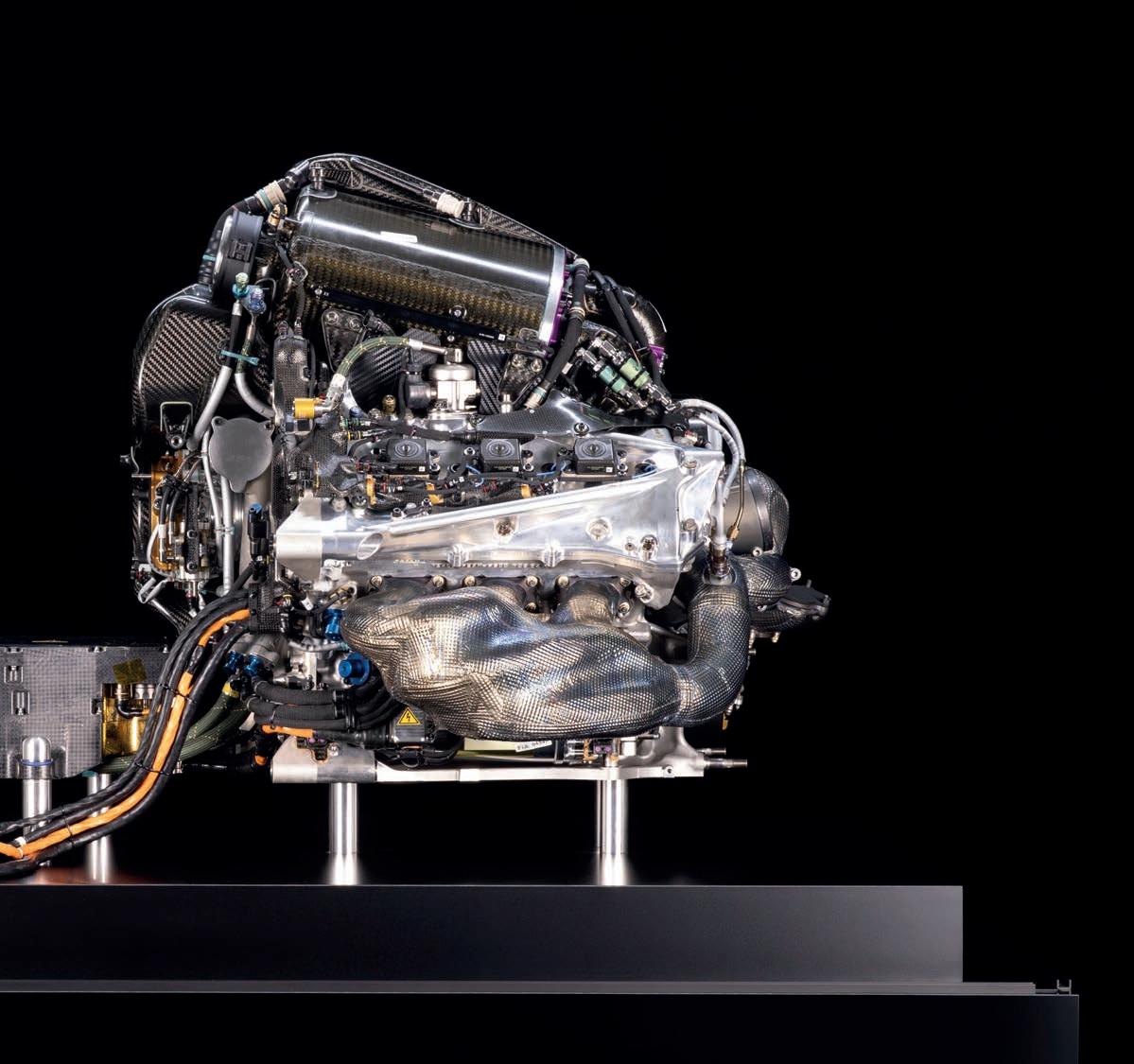
‘The 2022 power unit achieves a higher thermal efficiency than in 2021, even with the lower calorific value of the E10 fuel. I can confidently say it’s well above 50 per cent…’
Tetsushi Kakuda
many detailed changes and developments around the new combustion regime.’
Running the 2022 power unit also saw a number of significant changes made to the calibration.
‘After securing the reliability, we did some testing to see how high we could run the engine temperature,’ Kakuda says. Running the power unit at a higher temperature means it needs less cooling, which has a series of knock-on effects for other elements of the car.'
A higher nominal running temperature means the cars don’t require as much mass airflow through coolers, meaning fewer intakes, slots and louvres are required on the bodywork to extract temperature. This aids the aerodynamic department’s scope for developing the car, the most performancedependent factor in current Formula 1.
The ability of the oil to carry heat away from the engine is just one of the essential lubricant’s critical functions. The latest engine oil can withstand significantly higher temperatures than its predecessor, and that affects the design of many other parts of the car, giving Honda the scope to design a smaller, more efficient engine.
‘We studied the ambient race conditions, including moisture, oxygen content, temperature and pressure the power unit will experience during the race season so that we could optimise the calibration for everywhere we go,’ Kakuda expands. ‘We measure the ambient conditions in great detail to set up the power unit to be most performant in the conditions we see at the track during the race weekend. The level of precision we went into in 2022 is higher than ever before.
‘Throughout the season, there were several occasions where we could change the
software, as far as input from the driver and output from the power unit are concerned. We introduced new software when we had driveability challenges and to support different driving styles and circuits. This has coincided with the car finding more grip with the team developing the mechanical set-up and the drivers becoming more confident in the car.
‘Part of these software upgrades was optimising energy management. With the 2022 chassis regulations, F1 cars are significantly heavier than the previous generation, which widened the options for energy management to and from the ERS on more of the lap.’

Development scope
Kakuda says there is no change to the power band because the friction losses are still there, despite significant improvement in this area over the course of the eight years F1 has been running this power unit regime. A percentage of the chemical energy delivered to the combustion chamber in the form of fuel is lost to mechanical friction between components, most notable of which are the piston ring and cylinder interface and the connecting rod and big end bearing assemblies.
Developing an oil to provide a higher performing lubrication regime with less friction in these areas therefore offers a contribution to engine performance. Reducing friction also has a knock-on effect in other areas of efficiency, such as reducing the amount of energy required to carry out the non-firing strokes, known as pumping losses. Additionally, wear on the engine is reduced, giving it the ability to run in a higher performing mode for more miles.
In the Honda-developed RBPTH001 power unit, the friction losses are small and so have only a minor influence on the rpm range it uses. Fuel flow, on the other hand, is the limiting factor. This has been a significant influence in the useable power band since the hybrid power unit regime started in 2014. The current 100kg/h fuel flow limit means it is challenging to extract more power at a higher rpm, considering the additional fuel consumption required. For this reason, most of the power units in the Formula 1 field produce peak output at around 10,500rpm.
Kakuda says the Honda-developed RBPTH001 power unit is at 98 per cent of the absolute optimum power unit potential under the current regulations in terms of reliability, performance and driver ability.
Internal combustion engine
Type: 90-degree V6, single hybrid turbocharger plus ERS
Operation: four-stroke piston, Otto cycle
Displacement: 1.6-litres (98ci)
Bore: maximum 80mm (3.15in)
Stroke: 53mm (2.09in)
Valvetrain: DOHC, 24 valves (four valves per cylinder)
Fuel: E10
Fuel delivery: petrol direct injection <500bar
Maximum revs: approx. 13,000rpm
Engine management: McLaren TAG-320
Energy recovery system
MGU-K rpm: maximum 50,000
MGU-K power: maximum 120kW
Energy recovered by MGU-K: maximum 2MJ per lap
Energy released by MGU-K: maximum 4MJ per lap
MGU-H rpm: <125,000
Energy recovered by MGU-H: unlimited
‘Of course, there are many areas of development where we can incrementally improve, but the gains at this point are extremely small. If the fuel regulations evolve again towards an even higher bio-content, it will open up more areas of development for us to explore. We have some reliability issues that we are addressing but, from a dynamometer perspective, that won’t change anything, as we are very close to optimising most of the power unit.’
Gear change
The technical support programme between Red Bull Powertrains and Honda Racing Corporation will continue until the end of 2025. In 2026, Red Bull Powertrains will run a power unit developed in collaboration with American automotive giant, Ford, which will work with RBPT to develop the
next generation hybrid power unit and supply them to both Oracle Red Bull Racing and Scuderia AlphaTauri.
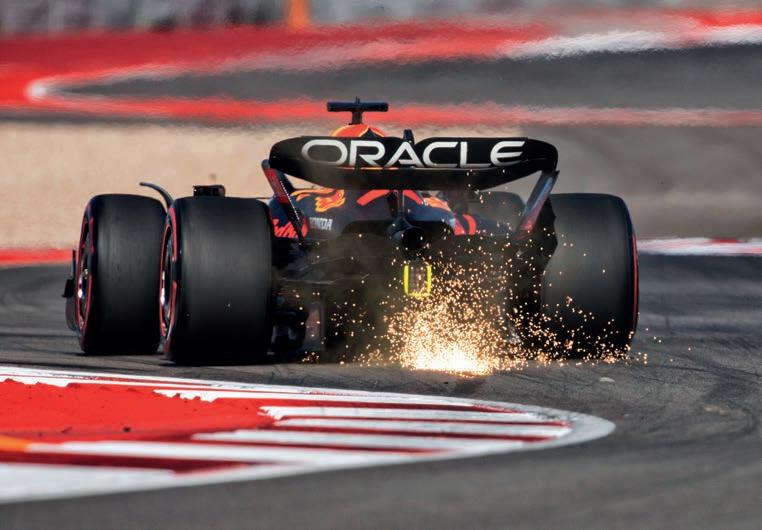
The 2026 season will see the 1.6-litre, 90-degree V6 engine architecture remain unchanged, with a similar rpm limit. However, fundamental changes to the formulae include the removal of the MGU-H, an increase in output for the MGU-K and much tighter constraints on ICE design.
The internal combustion engine will run on 100 per cent sustainable fuel by 2026, which must be sourced from non-food bio sources, municipal waste or certified carbon capture schemes. The new technical regulations specify that the fuel energy flow rate must not exceed 3000MJ/h, which equates to approximately 65kg/h, compared to the current fuel flow rate of 100kg/h. The FIA has applied this reduced fuel energy flow rate in a bid to reduce ICE output to approximately 400kW (536bhp), representing a drop of approximately 35 per cent in performance when compared to the ICE of the current era.
The MGU-H absence will necessitate a total re-design of the ICE as the combustion regime of the existing engines is permitted by the charge air control the MGU-H provides.
The next generation ICE rules will provide greater freedom for combustion system design, but will outlaw features such as variable inlet trumpets on cost control grounds. Conversely, the bottom end components – reciprocating parts, pumps and other ancillaries – will be subject to more restrictions compared to the current regime.
The FIA will also enforce standardised injectors and many other ICE sensors, as well as expanding the authorised materials list to exclude many high-cost options.
MGU-K peak output will increase to 350kW, with full power permitted up to around 300km/h. After that speed, the regulations specify the following equation for deployment: P(kW) = 1850 – [5 x car speed (km/h)] when the car speed is below 340km/h. At or above 340km/h, the rules limit MGU-K power to 150kW.
The MGU-K will also have to be mounted within the battery volume in the chassis to ensure all high-voltage cables are within the car’s main crash structure.
The Red Bull Ford deal is a long-term strategic technical partnership that will continue until at least 2030. The FIA states that the 2026 regulations are designed to increase the road relevance of the energy recovery and electrical components, with battery cell chemistry and technology open to development. This is where Red Bull Ford’s power unit will draw on Ford’s EV knowledge and depth of resources, including battery cell design, electric motor technology and power unit control software and analytics.

‘We studied the ambient race conditions, including moisture, oxygen content, temperature and pressure the power unit will experience during the race season so that we could optimise the calibration for everywhere we go’
Tetsushi Kakuda
The power of tomorrow
With the new regulations announced, the 2026 Formula 1 power unit games have begun…
 By DIETER RENCKEN
By DIETER RENCKEN
The burning question is what happens if an F1 PU brand unexpectedly departs? Who steps into the breach, and on what basis?
Schematic showing the proposed flow of energy in the Formula 1 2026 power unit regime
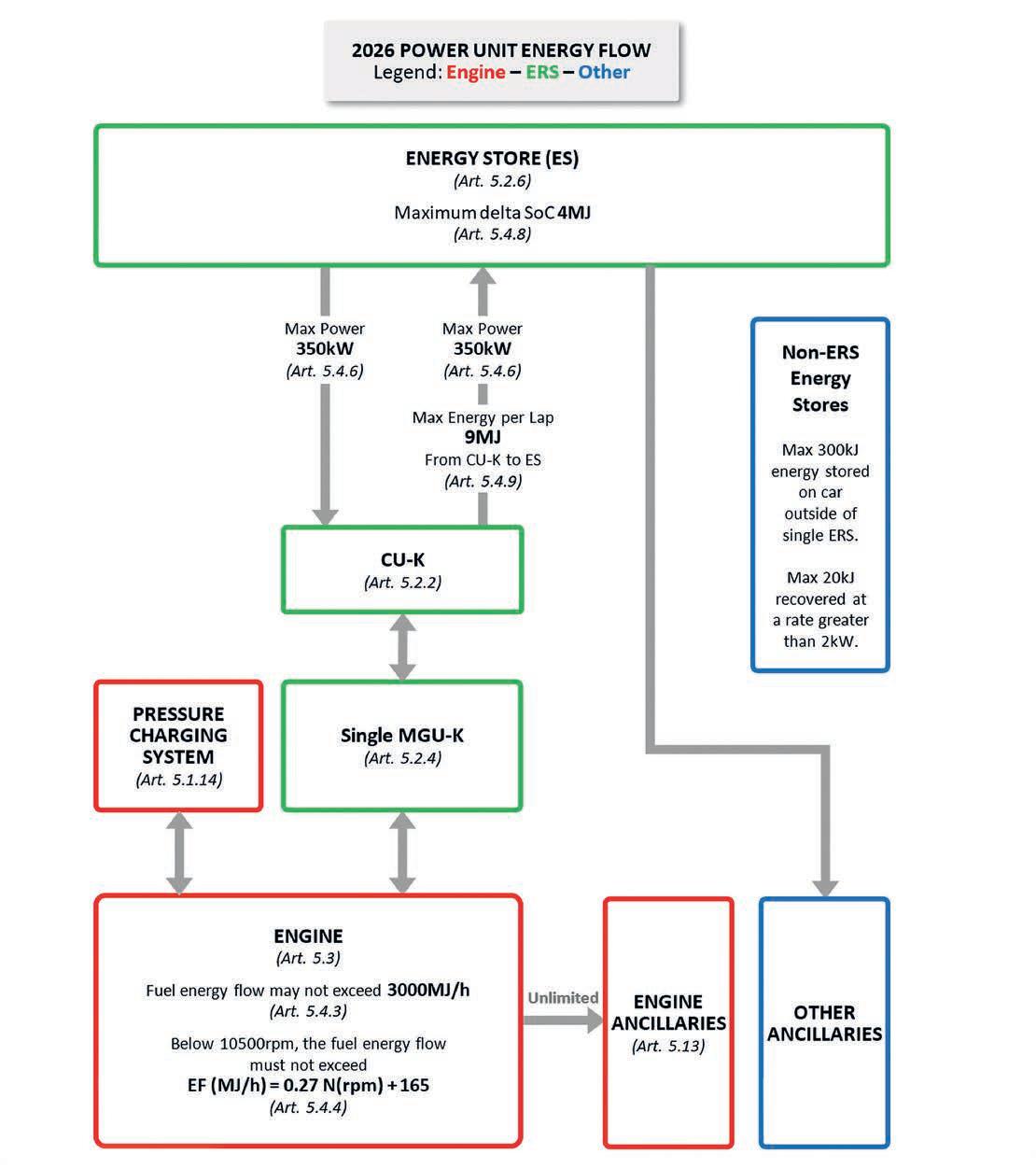
The FIA’s confirmation amidst the Red Bull launch (at which Ford announced it would partner the reigning champion team from 2026) outlined six power unit suppliers who registered for what is internally known as PU2026: Red Bull Powertrains (Ford); Ferrari; Mercedes AMG HPP; Renault (Alpine); Honda and Audi. Significantly, Porsche, who fell out with Red Bull in September, is not registered.
FIA president, Mohammed Ben Sulayem, commented: ‘The confirmation that there will be six power unit manufacturers competing in Formula 1 from 2026 is testament to the strength of the championship and the robust technical regulations that have been diligently created by the FIA in close collaboration with Formula 1 and the power unit manufacturers.

‘The power unit is at the forefront of technological innovation, making the future of Formula 1 more sustainable, while maintaining the spectacular racing.
‘I am grateful for the confidence of world-leading automotive manufacturers, demonstrated by their commitment to Formula 1.’
In addition, Cadillac is in the frame to join the sport, in conjunction with Andretti Autosport – founded by Michael, son of 1978 world champion Mario – should the US-based operation be accepted under the new team application process announced two days earlier by the governing body.
Five teams are said to have expressed interest and the outcome will announced after 30 June.
Badge of honour
‘Today is the first step in what we hope to be the historic entry of General Motors into F1. It’s never happened before in our history – it’s very, very exciting for us to be with Andretti,’ said the company’s president, Mark Reuss, during the preliminary announcement, made a fortnight before Ford confirmed its entry.
‘If [note] given the opportunity, GM and Cadillac will compete with the very best at the very highest levels, with passion and integrity
that will continue to elevate the sport for the FIA and race fans around the world,’ he continued, before confirming to Racecar Engineering that GM’s luxury brand would likely enter F1 using another company’s power units, albeit re-badged as ‘Cadillac’.
His admission attracted condemnation from fans and teams, who accused the brand of entering F1 cheaply by arranging a supply of Renault or Honda power units and not setting up an in-house operation. Yet Ford is doing exactly that by going into partnership with Red Bull and attaching the Blue Oval to Red Bull-manufactured power units, much as Porsche had planned to do before the split.

‘We wanted something more strategic [than traditional partnerships],’ said Ford CEO, Bob Farley, who is an enthusiastic amateur racer in the USA. ‘It’s a very practical approach to entering Formula 1,’ he added. ‘I can look my shareholders, [and] the Ford family, in the eyes and say we’re being very judicious and thoughtful.’
Under PU2026, which calls for a 50 / 50 split between internal combustion engine and hybrid power, accusations of ‘badge engineering’ are in any event fallacious.
Although based on the architecture of current V6 units, which produce around 850bhp, complemented by a 160bhp hybrid contribution, under the new regulations output will be evenly split at a targeted 350kW (470bhp) from each source for a total of 700kW (940bhp).
As highlighted in the Red Bull Powertrains article starting on p6 of this edition of Racecar Engineering, the 1.6-litre V6 engines will retain essentially the same layout as they appear now, with a similar rpm limit. However, the fuel flow rate will be reduced, coinciding with a fuel energy flow rate that must not exceed 3000MJ/h. That equates to around 65kg/h, compared to the current fuel flow rate of 100kg/h.
This aims to cut power to approximately 400kW (536bhp) from the current level of approximately 630kW (850bhp), with total PU output today sitting at around 750kW (1000bhp) once the 120kW contribution of the MGU-K is accounted for.
Essentially, the internal combustion portion will be substantially de-rated, rendering it clearly less important than in F1’s past, and will no longer be a major performance differentiator. Under these circumstances, does it really matter whether
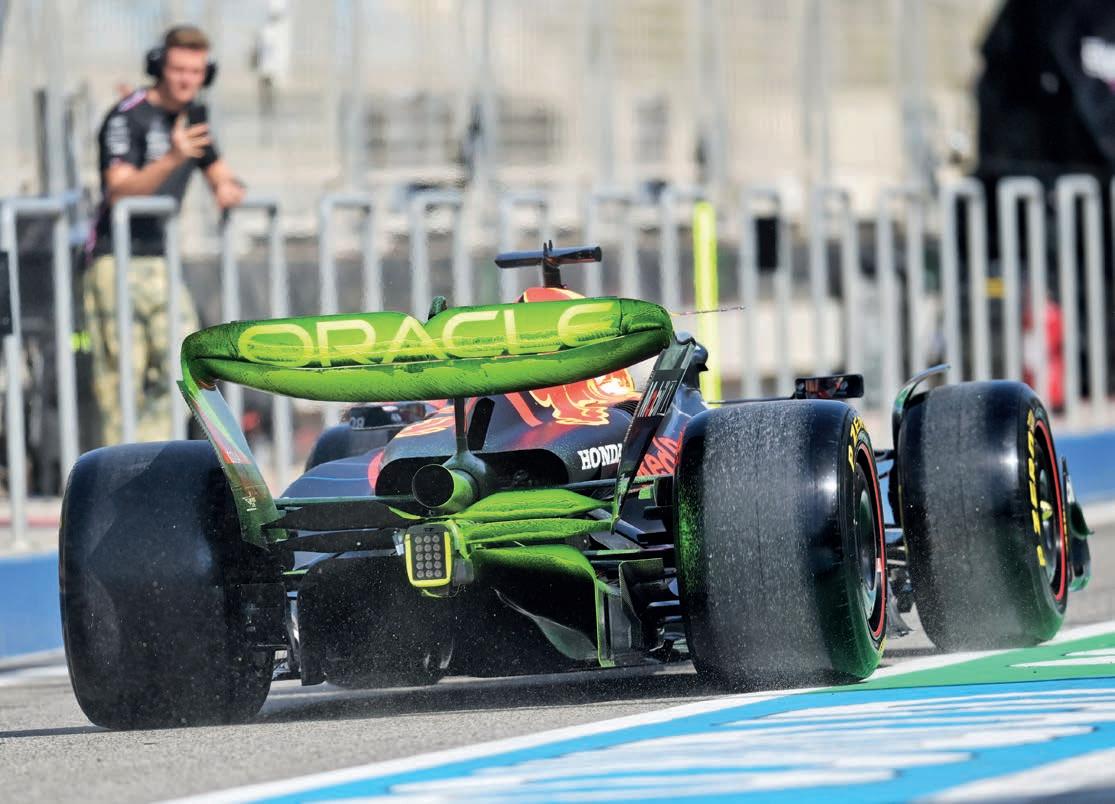
it is built in England, France, Germany, Italy or Japan and / or what it says on the valve cover?
Road relevance
Both the energy store (battery) and energy recovery systems will be uprated, countering the reduction in power of the ICE. MGU-K output will be increased to 350kW, with full power available up to around 300km/h and limited to 150kW at or above 340km/h.
The new regulations have been devised with the aim of increasing the road relevance of the ERS components and have left battery cell chemistry and technology open to development (within the framework of the legal hardware) with a non-exclusivity provision in the rules.
This leaves the ERS system and related ancillaries and energy deployment / recovery software wide open for OEMs to take F1 technology to the road. That is precisely where armies of software specialists employed by various motor companies can make a crucial performance difference to power units, in turn applying lessons in road cars, be they BEV or hybrids, be they Ferraris and Mercedes or Fords and Cadillacs.
Indeed, Reuss alluded to just such a technical involvement during his media call:
Both the energy store (battery) and energy recovery systems will be heavily uprated. MGU-K output will be increased to 350kW, with full power available up to around 300km/h and limited to 150kW at or above 340km/h
‘In just a few weeks, Cadillac will begin the journey back to Le Mans by racing in the Rolex 24 at Daytona. By racing in IMSA, WEC and F1, Cadillac will have the opportunity to showcase its innovation and technology by going up against the best international luxury brands.’
That certainly implies more than just badge deep commitment.
Asked about Ford’s technical involvement in the Red Bull project, the Blue Oval’s global director of performance and motorsport, Mark Rushbrook, said to Racecar: ‘In Milton Keynes, where Red Bull’s F1 engine is located, a great foundation has been laid and construction is already underway on the building where the power plants will be assembled, where the test benches and dynamometers are located.
‘Ford Motor Company resources can be fully involved in this process, and this will be an additional beneficial factor. We immediately decided in which areas we will work – technology for the production of batteries, electric motors and the development of control software. In particular, we are talking about optimising the power unit as a whole.’
Lessons learned will undoubtedly then flow from there into Ford’s production cars and processes.
Application process
The FIA has a strict application process, which will help the association find potential teams looking to compete in the FIA Formula 1 World Championship.

All application entrants will undergo due diligence to ensure the prospective team has the necessary technical capabilities and resources, and the ability to generate and maintain a significant amount of funding to enable participation within the top level of competitive motorsport. Each team’s experience and human resources will also be evaluated.
All candidates will be required to address how they might manage the sustainability challenge, in addition to outlining plans to achieve a net zero CO2 impact by 2030. Furthermore, each prospective F1 team will also need to illustrate how it intends to achieve a positive societal impact through its participation in the sport, to help meet the mutual aims of the FIA and Formula 1 management.
Candidates will be selected once the long-term interests of the championship (and its stakeholders) have been evaluated. Teams must also adhere to certain regulations and governance arrangements. The terms of the formal application process – consisting of the complete selection criteria, applicable deadlines, legal requirements and other conditions – will be sent to teams that submit a preliminary expression of interest to the motorsport association.
The definition of new
One potential flashpoint is the sporting and financial concessions, such as additional dynamometer hours and less stringent caps during the ramp-up phase, granted to ‘New PU Manufacturers’, defined as those ‘who have not homologated PUs at least once in the period 2014-2021, or have not received any significant recent Intellectual Property from a current PU Manufacturer.’
While Audi undoubtedly qualifies on all fronts, Red Bull Powertrain’s (RBPT) acquisition of Honda’s IP after the Japanese gave notice of exit for the end of 2021 – a decision since semi-rescinded – gave
rise to squabbles on two fronts. Although the IP was returned unused once the full implications of retaining the rights were understood, opponents argue that by having had sight of the IP at all, RBPT obtained unfair advantages.
In addition, RBPT assembles its current battery packs on behalf of Honda on the basis that it is cheaper, and safer, to do so in the UK rather than ship them, but the assembly has allegedly provided significant energy store experience ahead of 2026. While RBPT denies the charges, the counter is, ‘they would say that, wouldn’t they?’
Indeed, the matter eventually came to a head in early December when Ferrari, having refused to sign up to PU2026 unless RBPT’s concessions were reduced, was refused entry to a PU Working Group meeting on the basis that it had not registered by the end of November deadline. The Italian scuderia rapidly u-turned, but RBPT was also docked 10 per cent of the financial concessions. RBPT accepted a reduction, and Ferrari signed.
Who goes where?
Of greater interest than who integrates with whom on PUs, though, is the question of who goes where? With up to 12 teams in the running, should the FIA approve two of the five applicants for new grid slots, and six (or even seven) power unit brands as it follows that each will supply an average of two teams? That Ferrari, Mercedes, Renault-Alpine, Audi and Red Bull (Ford) will supply their respective teams is a given, but what happens thereafter?
Audi is expanding its Competence Center Motorsport at its Neuburg facility, ahead of the car maker entering Formula 1. A new 3000m2 building will
be added at the south western end of the existing building complex and will be complete with test benches to support the development of power units for Audi’s Formula 1 entry in 2026.

The German manufacturer plans to develop and build the entire power unit for its Formula 1 effort at the Neuburg site, which will consist of an energy recovery system, electric motor, battery, highly efficient internal combustion engine and transmission. To date, around 220 employees have been recruited for the Formula 1 project at the Audi Neuburg facility, which will increase to over 300 by mid-2023.
Ferrari, meanwhile, will likely extend its technical partnership with Haas, which may also inherit Alfa Romeo support once Sauber becomes Audi, while Mercedes – a significant shareholder in the Aston Martin sports car company, granted in exchange for technical cooperation – is expected to continue its current deal with the green team.
Red Bull will obviously favour its own operations: the current series champions and AlphaTauri.
‘By racing in IMSA, WEC and F1, Cadillac will have the opportunity to showcase its innovation and technology by going up against the best international luxury brands’
Mark Reuss, president at General Motors
That leaves Honda seeking partners, potentially Williams and McLaren, which has a nostalgic ring to it given serial titles won with both teams, although the former could well stick to Mercedes given its close ties, with Andretti going with Cadillac’s supply as outlined. The other new team will be left facing a choice of whoever is prepared to sign a deal. If no one volunteers, the FIA is empowered to step in.
The power of eight
Much is currently being made by F1 and the FIA of up to eight automotive brands –in alphabetical order, Alfa Romeo, Alpine, Audi, Cadillac, Ferrari, Ford, Honda and Mercedes – potentially gearing up for 2026. This is all well and good (primarily for the F1 share price), but begs the crucial question: will they all stay the distance, particularly Ford and Cadillac, who will have no real hardware in the game?
Regardless of the business plans, or modus operandi under which the car companies have entered, F1’s global reach means each will have billions of eyeballs on their heavily branded engine covers. Indeed, that is one of their major reasons
for entering the sport. On the flipside, one of their number will, by a process of elimination, partner the team destined to place last in the Constructors’ Championship.
Others are unlikely to see a podium in six years, and even fewer to win races. Championships? Even less. At which stage bean counters and marketeers will start to question whether F1 offers a wonderful return on investment, given the resulting widespread embarrassment for their brand. The next step will be damage limitation: phased exits from unsuccessful projects, particularly those where the initial cost of investment was low ie ‘badged’ or joint ventures.
F1 has been there before, as has FormulaE. After initial flurries of excitement during the early 2000s, Jaguar (Ford), BMW, Honda and Toyota all left F1 with just two victories amongst them in eight years, reducing the sport to three PU suppliers by 2010.
Where FE had 12 teams and 10 PU suppliers in 2018, it is now down to 11 and seven respectively, and likely to reduce further, despite the lower entry costs of electric racing.
The burning question, then, is what happens if an F1 PU brand unexpectedly departs? Who steps into the breach, and on what basis? Under the PU cap, the suppliers will have downsized to fulfil only their contractual commitments, so will be hard pushed to ramp up supply for another two (or four) cars. That is when the honeymoon is over, and the real wrangling starts.

power unit regulations is extraordinary. This one, for example, shows the maximum dimension of AM exhaust flange and collector components
Much is currently being made by F1 and the FIA of up to eight automotive brands potentially gearing up for 2026… [but] one of their number will, by a process of elimination, partner the team destined to place last in the Constructors’ Championship
GEARING UP FOR A NEW SEASON
We are proud of our technical partnership with the iconic Scuderia Ferrari. For over five years, Öhlins Racing has been developing and supplying suspension for the Scuderia Ferrari cars, providing advanced technical support when needed. Our goal is to ensure the drivers experience the best possible suspension performance during every race – no matter how extreme the conditions get.




Push for performance
 By DIETER RENCKEN
By DIETER RENCKEN
The Formula 1 paddock’s demographic is generally binary: folk who are in the sport because they love it above all else, and those who are attracted by the world class standards demanded from every pass holder, regardless of discipline, be it in hospitality, marketing, logistics, engineering, on the sporting side or wherever.
Occasionally, though, individuals are attracted to F1 due to its exacting demands, and then develop a deep love for the wider sport, acquiring that crucial winning ethic and with it, an unquenchable thirst for on-track success that simply does not exist outside of motorsport.
One such engineer is Matt Harman, technical director for Alpine F1 Team, effectively the chassis side of the operation, based in Enstone, Oxfordshire. Harman’s pre-F1 background was in civilian and military engines, having cut his technical teeth at Shoreham, UK-based Ricardo – the global strategic, environmental, and engineering consulting company which focuses on transportation solutions – as a test and calibration engineer
‘I absolutely loved that company, it was one of the best engineering groundings,’ the now 45-year old tells Racecar during an exclusive interview in early December at the team’s base.
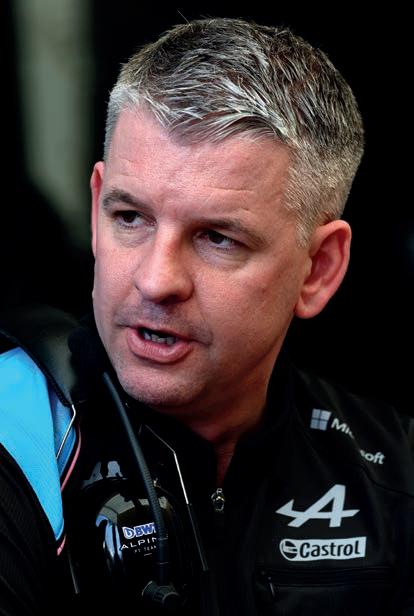
With the hectic of the team’s fight for the ‘best of the rest’ title after Red Bull, Mercedes and Ferrari done and dusted, the engineerturned-racer has time to share his journey from experimentation to Formula 1.
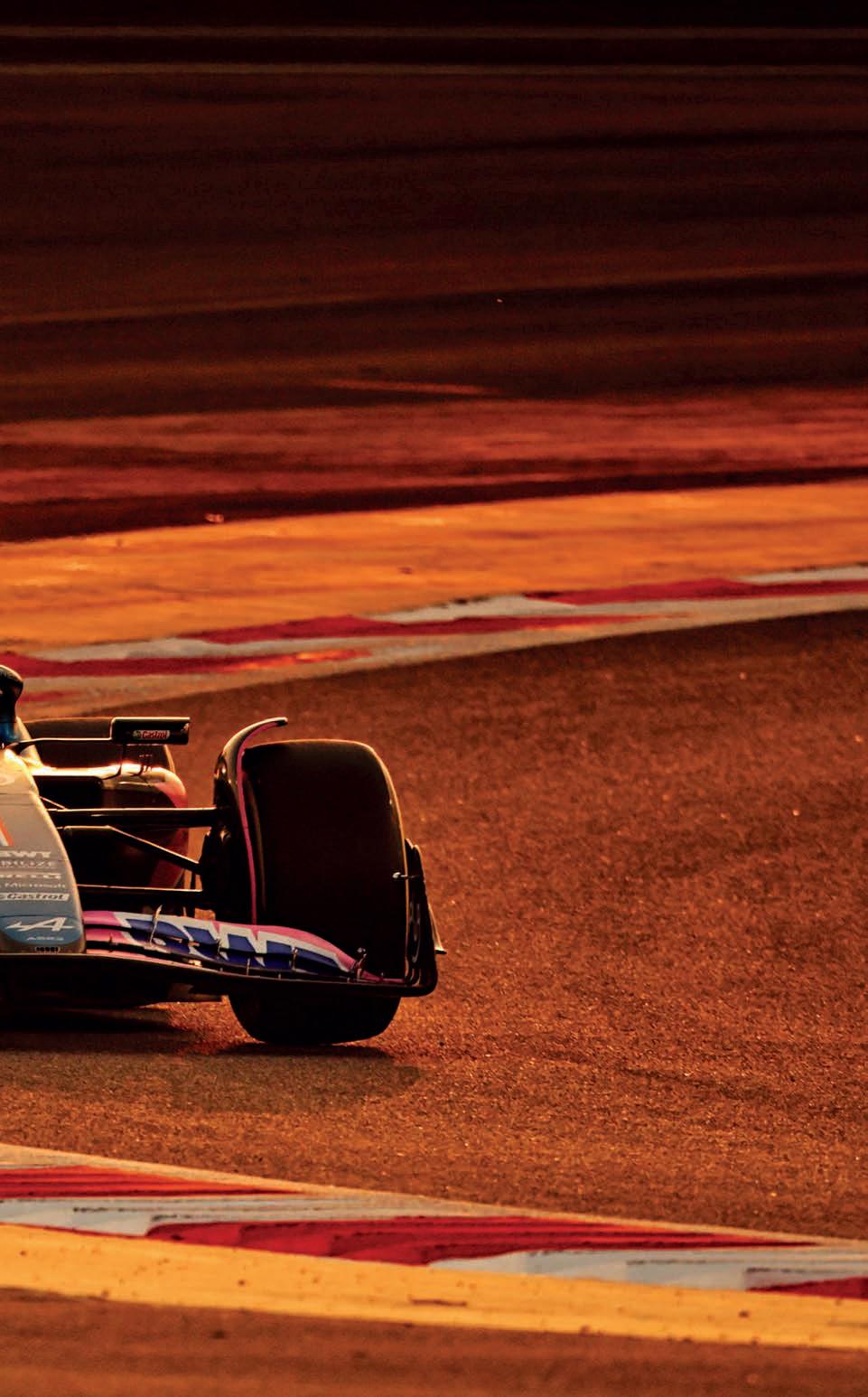
Bruno [Famin] is a highly experienced engine engineer and, between the two of us, you’ll see that [2023] will be a much better showWhile Harman is based in Oxfordshire in the UK, a large part of his strategy as technical director has been to bring Alpine’s English and French operations closer together
‘We did so many things [at Ricardo],’ he recalls. ‘Every six months you would do a new project, so anything from a Mitsubishi GDi single cylinder [test engine] to a [MotoGP] Sauber-Petronas twin – I actually ran that project on the dynamometer – to a 2000bar, 36-litre, common rail diesel tank engine for Iveco for the Italian Army.
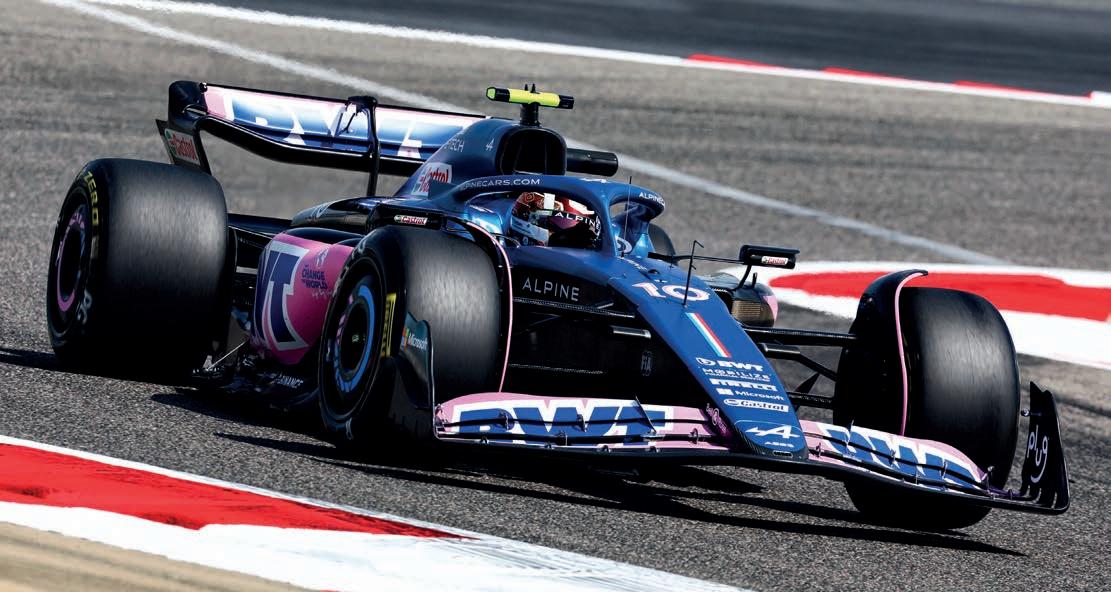

‘I learned an awful lot about the fundamentals of how things worked, particularly on the power units of that era. Then, in 2000, my boss at the time moved to Ilmor (now Mercedes High Performance Powertrains) to look after their test systems. He invited me to apply, so to speak…’
Career path
Harman actually started at Ilmor – founded by ex-Cosworth engineers, Mario Ilien and Paul Morgan – in test engineering before moving into the design office and then onto power unit development. This progression through the company exposed him to various areas, including the full spectrum of flywheel, hydraulic and electronic energy recovery and hybrid systems, which by then had become vogue in F1.
‘When Andy Cowell came in [from Cosworth] he made me in charge of valvetrain. I was lucky, I obviously had a bit of potential, so they moved me around to different areas. I stayed there until I did the installation of the Mercedes engine into the Brawn for 2009 [after the entire Honda project, minus PU, was handed over to Ross Brawn].
‘That wasn’t easy, but it was exciting, and that’s where I got to know Ross and Bob [Bell, who later returned to Renault]. After a while,

Ross called and asked whether I’d like to come over [from HPP to the Mercedes F1 Team] to look after PU and chassis integration stuff, ultimately for the hybrid 2014 car.’
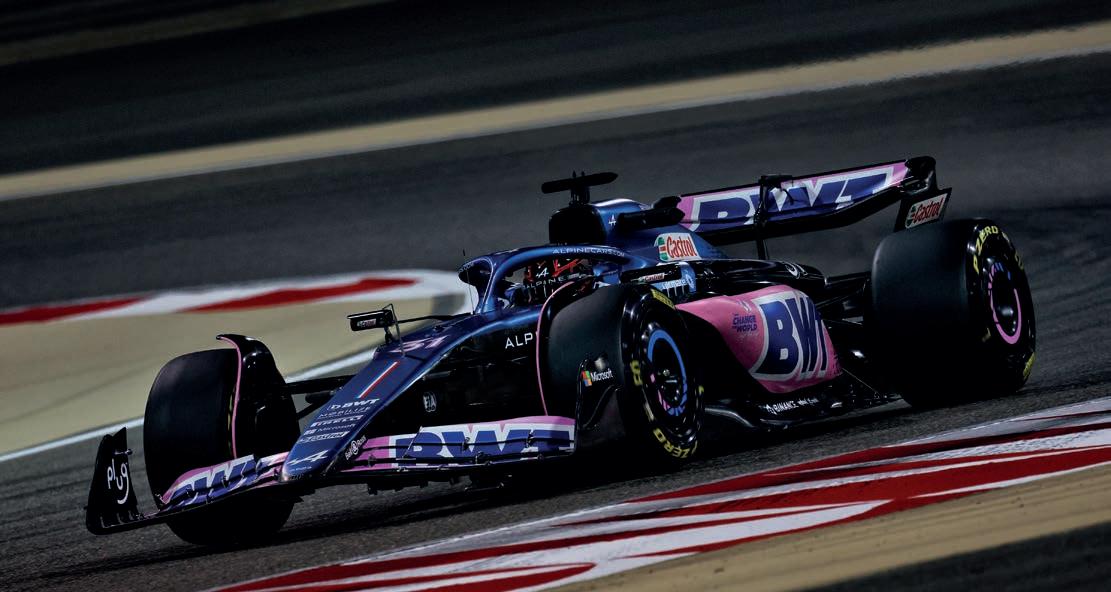


F1 politics
That period also exposed Harman to F1’s vicious politics. Virtually overnight, the PU was changed from an inline four to a V6, and its introduction pushed out a year from the original 2013 after Ferrari and Mercedes argued for V6s on the basis they would never build a four-cylinder F1 engine, while Renault dug in on the original architecture. The big guns eventually won the drawn-out battle.
‘It was a tricky time, because we put an awful lot of work in the bin,’ Harman smiles wryly. ‘My focus was the 2014 car. At the time, I was working for Aldo [Costa] who was a great supporter of mine, I owe him a lot for that. I stayed [with Mercedes] until 2018, doing lots of different projects, taking control of the front and rear ends and doing various things, basically learning the full trade.’
During his initial period at Mercedes, he held the title of engineering team leader, remaining in that position for 11 years, before becoming head of powertrain integration and transmission design for the Mercedes F1 operation between 2011 and 2018.
Given these responsibilities, it is obvious that Harman amassed a wealth of experience in integrating the main elements of a racecar, namely chassis and powertrain.
It was therefore no surprise that in 2018 he took a call inviting him to join the then Renault F1 Team, for which Bell consulted after his Mercedes spell as chief designer.
We won’t be repeating our problems, and we’re looking at having performance in both reliability and kilowatts
The team had a multi-title history with Michael Schumacher and Fernando Alonso, but had gone off the boil after a plethora of ownership changes and lack of investment.
Harman’s first project was the Renault RS21, originally planned for F1’s ‘new era’, which was in turn pushed out a year due to the pandemic. Eventually, the car took to the grid as the Alpine A522 after an internal name change of the team.
‘I did that car from September 2018, and then having come here and looked around, and actually laying out the car, I realised we needed a 100-race plan,’ he said. ‘We also needed to change our approach and our way forward, so that’s what we’ve done.
‘When I took the role of engineering director a year later, and then that of technical director in February 2022, I tried to ensure that not only have we got the right technologies going in the car and the right targets, but also looked at the architectures we’ve got, capabilities, people and the culture to be at the very front. It is all about having a culture, and we needed that. I’m proud of what we’ve done because we are moving in that direction. We’re really starting to get that more relentless, tenacious focus on driving forward, which for me is very satisfying to see.’
Clearly, these words come from a now committed F1 man, rather than the engineer who once designed diesel engines for road cars and bi-turbos for military applications.
Although Harman readily admits the power unit itself falls outside of his direct area of responsibility (that’s the domain of
Bruno Famin, previously with the FIA and Peugeot Motorsport in endurance racing before that), a successful F1 car needs the absolute best of everything, and it would be an utter waste for Alpine to not tap into the Briton’s experience in this regard.

Competitive power
Crucially, with an engine freeze looming, this meant that going the conservative route could leave Alpine short on power through to the 2026 regulation change.
‘It’s been well publicised that I’m not responsible for the power unit, [but] I set the specification for the engine and what we wanted, not only in terms of its architecture, but its overall performance.
‘In the end, we had to make a decision that we thought was right for everybody, that we would push on the performance and take the risk on reliability. Honestly, if I had my time again, I’d make the same decision, it is massively important in this homologated era that we have the performance we need. We must have a competitive power unit. In my mind, we have now got one that is close enough that we can compete. I’d like to honestly thank everybody in Viry for the hard work they did in those years because it was very difficult.’
The Viry reference is to Renault F1’s engine division situated in Viry-Châtillon, south of Paris, which gives some idea of the cultural and geographic challenges facing the team.
‘I set the architecture for that engine, and they delivered the architecture. We had
some reliability concerns and these cost us in our championships, but I don’t believe they ultimately cost us in the final [2022] position. But it did make our season more stressful.’
For the record, Mercedes finished the season 342 points ahead in third, while McLaren was 14 in arrears in fifth.
Once again, though, the racer in Harman comes to the fore: ‘We didn’t do it in the style we’d have liked to have done it, but we’ve learned a lot about that particular engine and that new architecture, and I’m pretty confident about a better 2023 from looking at all the root causes. We won’t be repeating our problems, and we’re looking at having that performance in both reliability and kilowatts.’
Given their relatively short Alpine career histories – Famin only joined the team in March 2022 – a close cooperation between the two engineers is crucial, particularly if they wish to exploit the considerable advantages of an in-house powertrain without the drag of satisfying customer teams.
If I had my time again, I’d make the same decision. It is massively important in this homologated era that we have the performance we need
Manufacturer of Embedded Sensor Solutions Since 1999

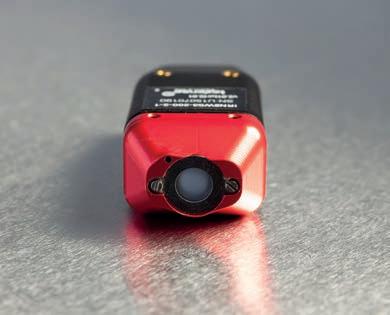
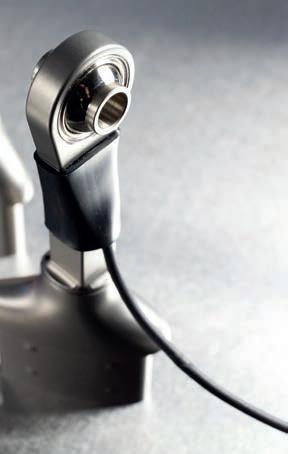


















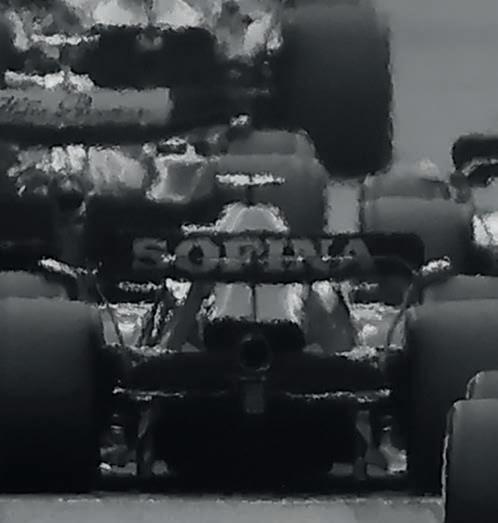







Consequently, Harman also has an office in Viry, which he regularly visits, and says one of his first priorities as chief designer was to bring the two companies closer together.
‘We need to be a full works team, not a semi-customer team,’ he stresses. ‘We can’t be a team where we’re provided with a product to put in the back of our car, we need to be creating a total product together. Now we have engineers that are connected, the engineer who does the integration of cooling system parts on the engine is totally in tune with the engineering team doing the car’s cooling systems.
‘We’ve got all of those sorts of connections happening across both companies. With the exception of geography, it feels like we’re all in the same office. That is really important.’
Equally crucial are the synergies between the two technical directors, situated either side of the English Channel. Harman is adamant they are aligned in their views and is bullish that 2023’s results will reflect that close cooperation and commitment to the project.
‘That helps a lot, we both agree on what performance is. We agree that being courageous in performance is the only way we’re going to get to where we want to go. We’re not going to get there by being risk averse, or by worrying about making courageous moves.
‘We need to make those moves and we need to put the people in place to deliver them. Bruno is a highly experienced engine engineer and, between the two of us, you’ll see that next year will be a much better show.’
Given that the team finished fourth, ahead of McLaren, in the 2022 Constructors’ Championship, that is a bold prediction, one which should them snapping at the heels of Mercedes and Ferrari if realised.
Zero distraction
While many perceive the lack of a customer team (Mercedes services its own team plus three, while Ferrari supplies one plus two) to be a disadvantage due to reduced running data, Harman points to the positive: zero contradictory demands from pesky customers.
‘That is a massive advantage in that there is no distraction. Having lived through being a works team and supplying others, and working on the engine side as well, where we would have supplied others, I know there is always an element of distraction and there are always things you have to compromise on to make sure your power unit can fairly interact with other chassis.’ Note the use of the word fairly.
‘With us, we don’t have any of that, so our conversations are all about first principles engineering, or about how we’re going to design the architecture of an engine and how it fits in a car organically. We don’t have any conversations about compromises.
‘The only disadvantage there can be is that [with customer teams] there are other engines out there and they’re all engineering a similar problem. There are some great engineers everywhere, and customer teams do bring something to the party. They may well come up with an idea and, in the act of adapting the engine to satisfy that idea, you could learn something.
‘Sometimes you miss out from some of that information, and also you miss out a little bit on reliability, but in my previous experience it’s also the case that customers haven’t always run the latest in equipment, so you don’t really benefit that much.
‘On the reliability side, it can be beneficial. You learn a lot by having more samples, and we suffered from that this year,’ he admits. ‘But the freedom of thought, and freedom of exploiting what you want to do in your car without hindrances makes up for that.’
In closing our 40-minute interview, which was preceded by a full and enlightening tour of the Enstone facility, we address the question of road relevance and Harman reveals that Alpine F1 Team is providing consultancy services to the wider Renault group via the in-house Alpine Laboratory.
‘Alpine Lab is akin to a [Mercedes] Applied Science or Red Bull Advanced Technology,’ he explains. ‘It’s a similar sort of organisation doing technology projects with certain specialisms within the wider group.
‘There are also technologies and expertise that come to the F1 environment to help us with shortfalls in our resources. It’s working for us, and it’s a nice string to our bow in that it brings Alpine Cars, Renault Group and the Enstone F1 team closer together because the projects are multi-disciplinary and need our input on top of the Formula 1 product.’
In that regard, it seems the career of this consultant engineer-turned-racecar engineer has come full circle, and in the interim has acquired that winning edge that is so crucial to success in all areas of motorsport, but none more so than Formula 1.

Harman on 2026
RE: Although the 2026 power unit regulations have essentially been approved, much work remains to be done on their chassis equivalents before these are finalised at the end of 2023. Given that Harman is one of few F1 engineers with in-depth experience across both disciplines, how does he feel about the sport’s future, particularly talk of active aerodynamics, active suspension and all-wheel drive?
MH: We have been looking at those things, but we don’t treat the regulations as a power unit thing or a chassis thing, we treat the whole project as a car.
Taking the points in bitesized chunks, I think active aero is a good thing. If it just adds more functionality on the wings it will add another dimension to driver input, how that works and how they select things.
But I think for drivers it’s a bit of a worry because it’s not going to make the cars any lighter. We should also be looking to solve the recovery issue without having to go to full recovery [via 4WD], and obviously our Viry colleagues are heavily into that with their partners.
RC: If you have active aero you need active suspension…
MH: It’s a topic that comes back every two or three years. We’ve had hydraulic suspension systems in the past, which are basically trying to mimic active suspension such as FRICS (Front-Rear InterConnected Suspension). We got rid of them because they were expensive, labour-intensive versions of active suspension. So the conversation that always comes back is, what type of active suspension do you want? Do you want high frequency, highfidelity suspension? Do you want a low frequency system? The differences in technologies between them and cost and weight is quite different. We’re going to have to have that conversation [again].
I enjoy it when it comes by every two years. It could be a standard system supplied by external suppliers, and you have to package around whatever that is with an obligatory ECU so it doesn’t become another one of those things that biases the cost gap. We will have to see what the FIA comes up with.
All the teams are inputting and looking at simulations to ensure the FIA and F1 have all the information. A lot of these issues will be down to our feel about aerodynamic development at that point, because the car will be quite similar to the current car, just with increased aerodynamic development.
[Bruno Famin and I] agree that being courageous in performance is the only way we’re going to get where we want to go
Autotel Race Radio 0044(0)1508 528837 Email sales@autotel.co.uk



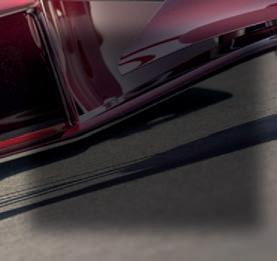


Measurement
EvoScann® miniature pressure scanner range includes:

Absolute or True-Differential measurement - 8 or 16 channels of digital data - Full-scale accuracy up to 0.1% - Scan speed up to 1000 Hz

Plug and play - Small, robust and lightweight
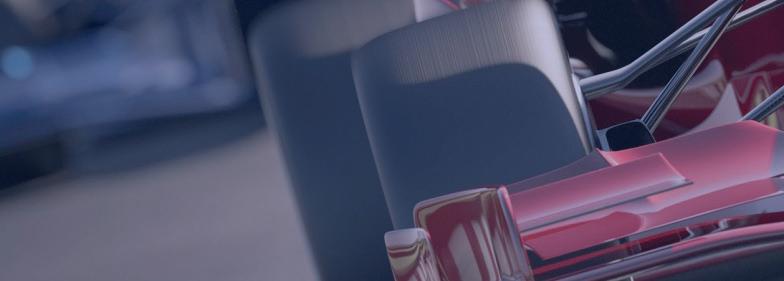
Stage craft
With hybrid development issues persisting, the leading teams in the WRC are now running closer than ever
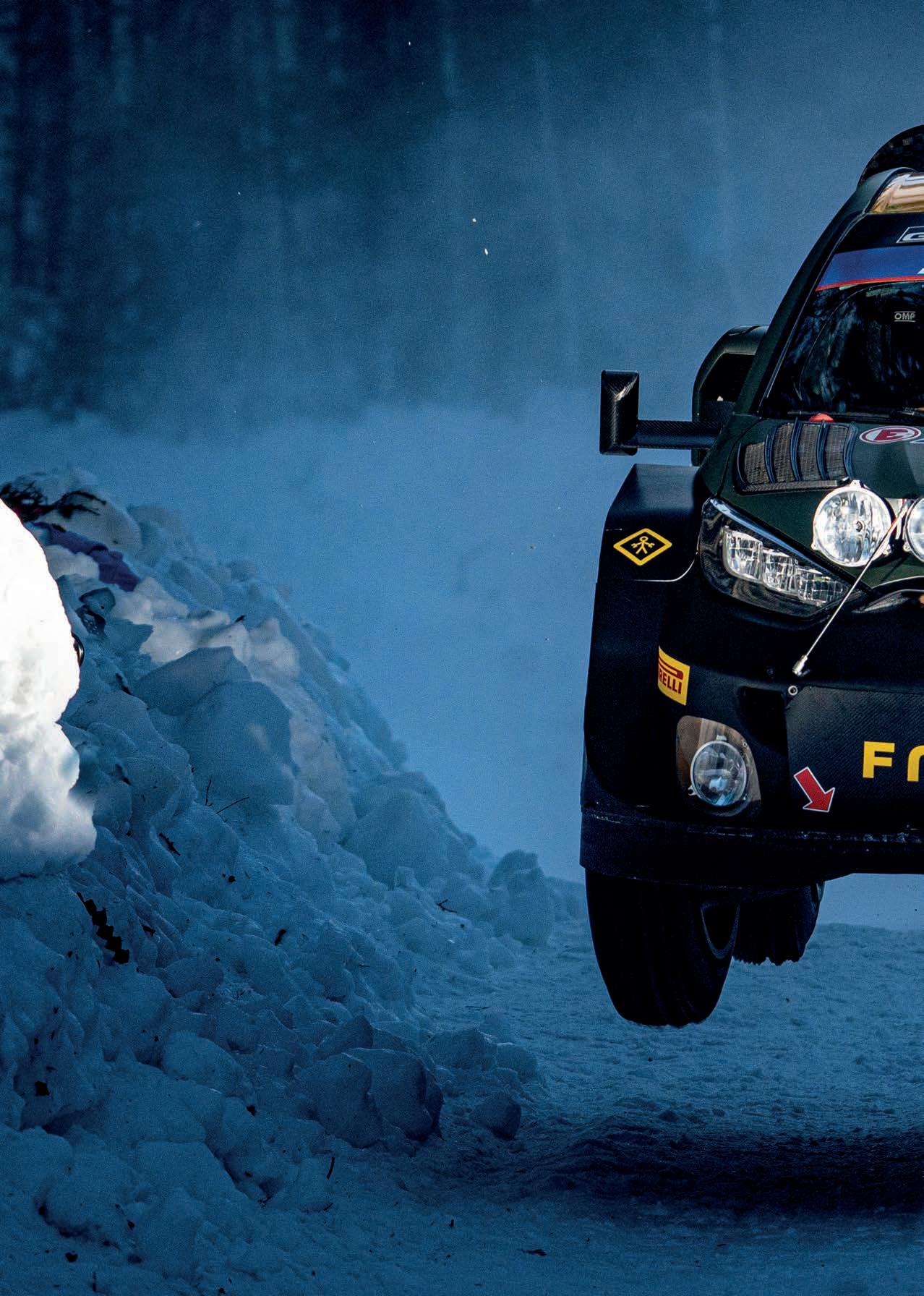 By LAWRENCE BUTCHER
By LAWRENCE BUTCHER
The 2022 WRC season saw a dominant performance by Toyota’s Kalle Rovanperä, with the 22-yearold Finn becoming the youngest champion in the sport’s history, and the first of its new hybrid era. However, over the course of the year, though Toyota remained imperious, Hyundai, in particular, made considerable performance strides with its i20, turning what looked like a disaster at the beginning of the year into a rally-winning machine.
Due to the way development works under the WRC regulations, updates must be introduced via the use of ‘jokers’, meaning manufacturers tend to add parts for the next season before the year is out, in order to make best use of their allocation. Jokers can only be added at fixed points in the year, with submissions having to be made on 1 January, 1 April, 1 July and 1 October. Though, as will be covered later, there are ways to circumvent these restrictions.


‘Quite a lot of the reliability-type improvements we’ve made have been somewhat statistical. This is not a way of engineering we would prefer to do in other areas of the car’
Tom Fowler, technical director at ToyotaToyota’s GR Yaris Rally1, with 22-year old Kalle Rovenperä behind the wheel, proved dominant in 2022, the first year the WRC ran hybrid powertrains
‘We had five jokers for 2022, which had to be used up by December [’22],’ explains Toyota technical director, Tom Fowler. ‘We used some of those during the year and then we put the last ones into place ready for Monte Carlo this year. We’ve then still got our 2023 jokers available, but used up everything that was possible in 2022 to make the ’23 car.’
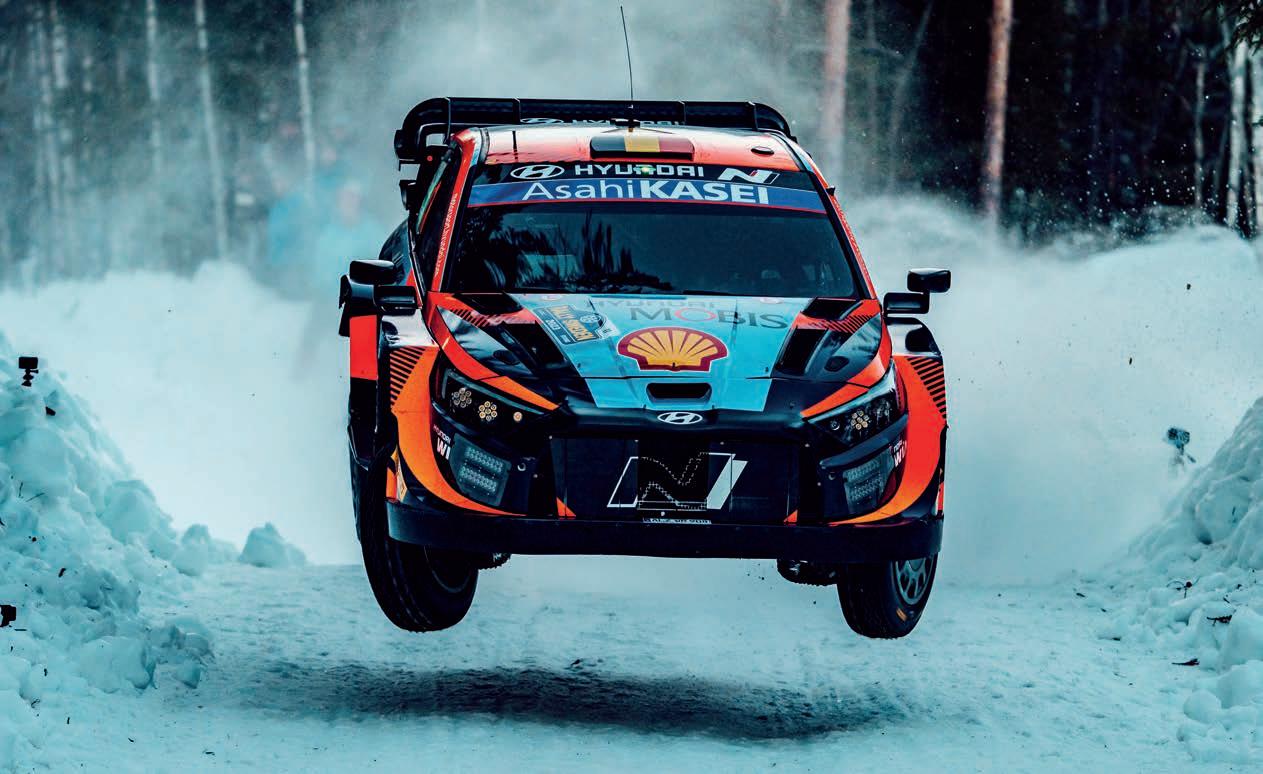
Power and control
One of the main areas teams focused their development efforts on through 2022 was control of the hybrid system. Contributing an extra 100kW of boost on top of the ICE, mapping power delivery from the MGU and, just as importantly, energy recovery under braking, it’s clearly an important topic. With road conditions constantly changing from corner to corner, rally drivers need to have supreme confidence that their throttle and brake inputs will translate to a consistent response from the car every time.
Each manufacturer was allowed to homologate three deployment and three energy recovery maps, shared across all of its drivers. These are then fixed unless a team chooses to play a joker.
The maps must work on both tarmac and gravel stages, and be flexible enough to cater to each driver’s unique style. Drivers can switch between maps over the course of a rally, but not during a stage.
Talking in late 2022, while still deputy team principal (before Cyril Abiteboul joined the team in January 2023), Hyundai’s Julien
Moncet admitted that at the start of ’22 his drivers found the hybrid hard to manage, and the power delivery was not very refined.
‘The system was not predictable, and was disturbing how they were driving,’ he explained. ‘This is what we have improved the most [in 2022]. We are not using the system at all in the same way as we used to.
‘Of course, the rules are the same, but we have learned a lot. It is not about putting the power down suddenly, you have to think about the grip, the speed and how much energy you have. We have brought a lot of updates in this area.’
He also pointed out that the banning of fresh air-based anti-lag systems for the ICE further complicated the task of keeping the cars as driveable as possible.
From M-Sport technical director, Chris Williams’, perspective, the hybrid was already well understood from early 2022.
‘Our philosophy hasn’t changed at all from the start,’ he remarked towards the end of 2022. ‘We put in an enormous amount of effort to be up and running early. To try and understand the system, we developed a few tools to be able to train the drivers, and also to be able to analyse the feedback and the results quite quickly.
‘By the time we got to Monte Carlo, we were match fit and race ready with hybrid. We haven’t changed philosophy [since then], just a few parameters, probably more trying to keep the FIA happy than anything else.’
For the first year of the new rules, teams were permitted an extra joker specifically
covering the hybrid, an understandable inclusion given the number of unknowns at the time. This was in addition to a general software update joker, which covers the whole car.
‘When we had to homologate the three maps in January, we’d never driven in Sardinia, or Ypres, for example. There was a lot of test information missing against the base software, so most of the learning we’ve done in season has been about improving the mapping so it’s more flexible,’ said Fowler.
Having already used one joker (as of Ypres in August 2022), Toyota deployed its remaining joker on a revised tarmac specific map for the final two rounds of 2022. ‘That brought together all of our tarmac learning from across the season.’ Fowler explained, before adding, ‘of course, if it was completely open, I’m pretty sure we would have a different mapping for every single rally of the season, and probably two or three for each rally…’
‘By the time we got to Monte Carlo, we were match fit and race ready with hybrid. We haven’t changed philosophy [since then]’
Chris Williams, technical director at M-Sport
Since their introduction, the spec hybrid has not gained a reputation as trouble free. According to Williams, early componentbased issues were dealt with quickly, and by mid-way through 2022, ‘if something was going to fail, it’s failed.’
Persistent bugs
However, there remain some persistent bugs in the system software, relating to issues such as failure modes that can stop the hybrid operating based on false alarms.
‘I think they just missed some of the interactions going on with the units,’ said Williams of the situation.
This forced teams to develop workarounds using the somewhat limited control they have via software.
‘There are still ongoing issues that we kind of manage, that you’ll never see,’ noted Williams on Rally Ypres. ‘Unless it’s a critical bit, we have the ability to reset the system
really fast, on an automatic reset. If there is a false call in the system – bang – we can reset and the driver probably doesn’t even notice.’
Even after an off season to update and conquer some of these issues, it seemed problems persisted into 2023. ‘Are we progressing in a manner and at the speed that we’re happy with? Probably not,’ stated Williams at Rally Sweden.


Hybrid supplier, Compact Dynamics, did make efforts over the off season to improve the reliability of its units, but it would appear these were rushed, and the introduction not handled as teams would like.
‘Coming late to the teams with a fix and saying run this on the event makes us nervous,’ said Williams. Understandably, both he and his opposite numbers at Hyundai and Toyota don’t want to make mission critical changes they haven’t been able to sign off on via the usual dyno testing and other reliability checks.

‘If we are delivered something, and we are reasonably confident that it is minor, or insignificant, then maybe we will run it. But we were twice given stuff we are unhappy to run,’ added Williams.
Running updates
One of the problems, explained Williams, is that the rules require teams run the hybrids within the parameters and recommendations provided in the documentation for the systems.
‘As Compact Dynamics update the hybrid documentation, we have to be very careful –
whatever they’ve done – that we now need to abide by that. If they make a change we’re not happy with, or there is a strategy change in there, we need to be on top of that.’
Just prior to Rally Sweden, just such an update occurred and the teams, unhappy with not being able to prove the changes beforehand, had no choice but to object to their implementation.
Fowler was somewhat more vocal about the issues faced by the teams. Toyota was an early casualty when Elfyn Evans was forced to retire from the second round of the 2022 season in Sweden, after the lights showing the hybrid system status failed. If the parts in question had been under Toyota’s control, heaven and earth would have been moved to get to the root of the issue, but they’re not.
‘When we encounter a problem, we hound the life out of it until we’re sure it’s fixed. And if we don’t fix it, and it happens again, we’re incredibly pissed off with ourselves. To have a part where we don’t have that ability, where we can’t strip it open and see with our own eyes exactly what’s happened, yeah, it’s incredibly frustrating. And I think this makes the glitches more difficult to handle.’
Fowler’s frustration at the processes in place to handle problems with the system was tangible, and his team’s only recourse has been to analyse the circumstances around failures in an attempt to identify trends that may help them be avoided in the future.
‘It’s quite an interesting piece of engineering in many ways, because there’s a
‘It is not about putting the power down suddenly, you have to think about the grip, the speed and how much energy you have’
Julien Moncet, head of powertrain and future technologies at Hyundai
lot of information we don’t have about the box. Some stuff we know, because we have to know, because it interacts with our systems, but there’s more we don’t know than we do.
‘Quite a lot of the reliability-type improvements we’ve made have been somewhat statistical,’ he continued. ‘This is not a way of engineering we would prefer to do in other areas of the car.
‘Looking at things statistically, we ask how likely is it to go wrong if we’re doing x, y and z, and then try to minimise the things we see as potentially causing these things to happen more regularly. Then it’s a case of trying to avoid those situations, even if they are within the operating scope of the unit.
‘If we see that some areas of operation are riskier than others, we try to avoid them.’
Aero updates
Rolling into 2022, only Toyota and Hyundai brought notable aerodynamic updates to their cars, the latter causing significant controversy in the paddock.
Starting with Toyota, its introduction of new aero parts spanned across the ’22-’23 seasons, thanks to the way the aforementioned joker system works. On Rally Estonia in ’22, the team deployed a new rear wing design that featured the addition of extra winglets at the furthest extremities. This change, said Fowler, was closely linked to a second element, which did not arrive until 2023 – the removal of the Yaris’ ‘elephant ears’ cooling scoops.

Removing the scoops greatly improved airflow along the side of the car, making the new rear wing design more effective,
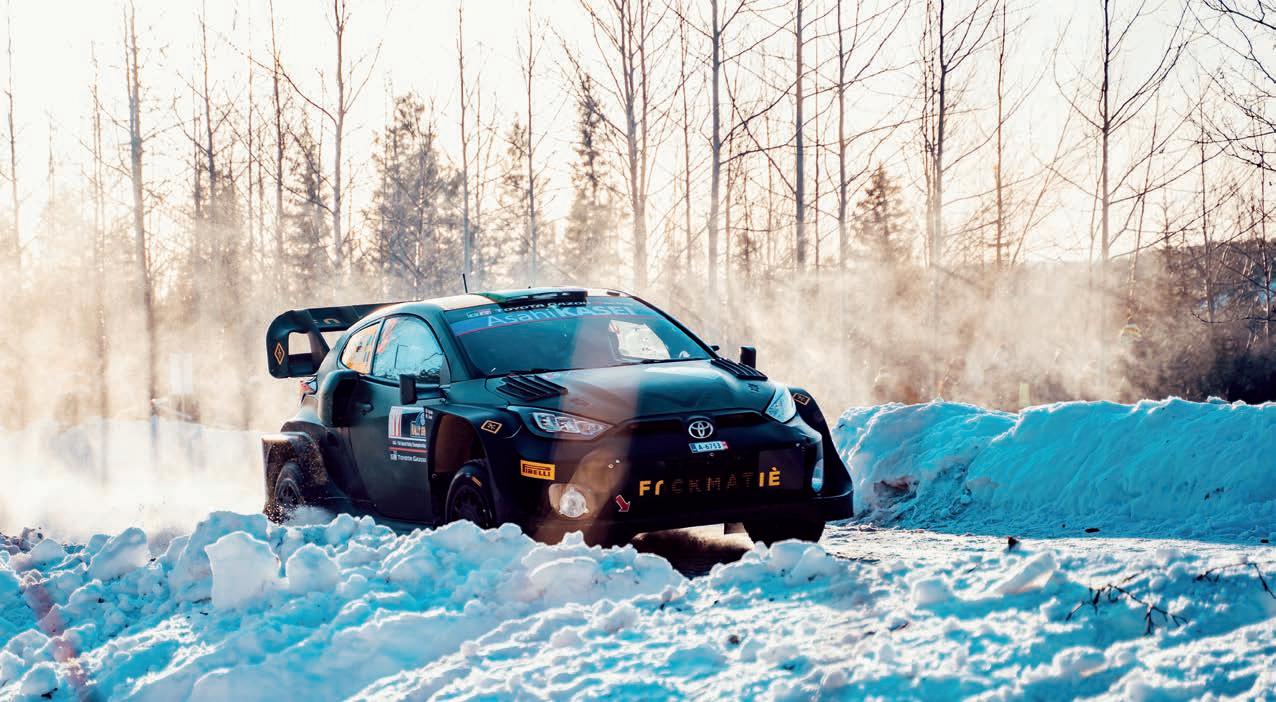
particularly in conjunction with a variety of wing mirror designs (which are not constrained by jokers and can be updated as and when teams wish).
Fowler confirmed that the large scoops run through 2022 were an insurance policy against potential unknowns with the hybrid.
‘The hybrid systems were delivered to the teams quite lastminute.com,’ he says. ‘So we had to be really safe on the installation and we had a lot of headroom, both in terms of cooling and also packaging.
‘[In late 2021] we’d never seen the box in real life before, how all the cooling pipes would be routed to it, and so on. We had a chassis there ready with a rear cooling package with all the pipes and everything ready to plug in but didn’t have the physical box until quite late in the development.’
Over the course of 2022, Toyota optimised its cooling package and strategy, culminating in the revised specification introduced for the 2023 season. ‘We did a much nicer job of the packaging, which had knock-on effects on areas like the rear suspension installation on lots of different topics,’ Fowler explained.
The large air scoops run through 2022 [by Toyota] were an insurance policy against potential unknowns with the hybrid

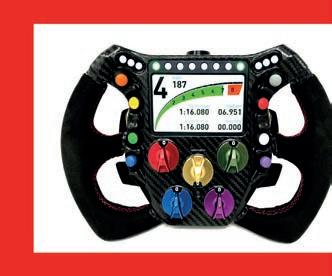



Not all of the changes to the cooling at the rear required a joker to complete, as many of the internal parts fall under what is called a variant option, in effect a free part.
‘We built up a package using all of the homologation options, but only using one joker,’ says Fowler. ‘During last year, we were changing those variants around rally by rally, to make the cooling under the rear end suitable for conditions as we went. In some cases that was necessary, but in other cases, it was more a reaction to things. We were able to package all of that into something more generic for the whole season and then concentrate on more important things.’
Badge engineering
Hyundai, meanwhile, brought a sizeable update package to Monte Carlo at the start of 2023, clearly influenced by Toyota’s developments, leading Fowler to state, ‘the i20 is now a Toyota with a Hyundai badge.’
Starting at the front of the car, the i20 received a heavily revised nose, which worked in conjunction with a new profile to the front wheelarches. This was coupled with a rear wing that, as Fowler alluded to, bears more than a passing resemblance to that of the Toyota.
However, not all in the service park were happy with the updates; both the fact the team was permitted what are clearly quite extreme deviations from the road car form, and the manner in which the modifications were introduced.
Speaking in Sweden, Williams observed: ‘It’s an odd scenario. Let’s just say between the teams and the FIA, there’s been some
discussion. I’m not sure Hyundai are aware of the discussions taking place, but yeah, we’ve certainly had some.’
The first issue centred around the way Hyundai introduced its update, via what is knowns as an ‘out of session’ use of jokers. As outlined earlier, jokers can normally only be introduced at fixed points in the season, following a tightly prescribed procedure. Part of this involves rival teams being able to see the updates in advance of homologation and make any comments they feel are pertinent.
An ‘out of session’ update circumvents this process completely and is really only intended for reliability updates that need to be brought in urgently. ‘They used the out of session quite well,’ admitted Williams. ‘We didn’t see their stuff until it was homologated, at which point we went what the hell? Then began the discussion of how is that legal?’
Bitter pill
For M-Sport, the somewhat extreme nature of Hyundai’s design was a tough pill to swallow. The team had to instigate an almost ground-up re-design of its 2022 car in late 2021, following a heated debate with the FIA over rules interpretation, which saw much time and money wasted. ‘We may be a bit bitter at some of the things that were not permitted back in late 2021. To now see some of those on the [Hyundai] car is a little bit disappointing,’ said Williams.
The new season did not bring with it a fresh aero package from M-Sport though, as Williams explained, this was not for lack of trying. ‘We spent a lot of time last year
working on an aero upgrade package, quite a big one,’ says Williams. ‘When we got pretty much to the end of the study, sat down and looked at all the numbers we had, we weren’t confident in the gains against some of the assumptions we’d made.’
Considerable effort and resource were expended on the study, and Williams remains pragmatic about the outcome. ‘In one respect it is quite disappointing but, on the other hand, what it kind of said is we’re not too bad [where we are],’ he says.
‘We have certain targets we’re aiming for, which were not improving enough. We were not getting the gains in the areas we wanted. There was potential to make some gains, but not ones that would make a difference. In effect, what we were looking for, we’ve not found.’
At time of writing, the 2023 season was two rallies old, and the field seems closer than ever. Hyundai had most certainly forged a potent machine from the i20, while M-Sport with its new star driver, Ott Tänak, secured a resounding win in Sweden.
Toyota, long the performance yardstick, will have its work cut out to keep ahead this year, and it looks all to play for in the driver and manufacturer stakes.
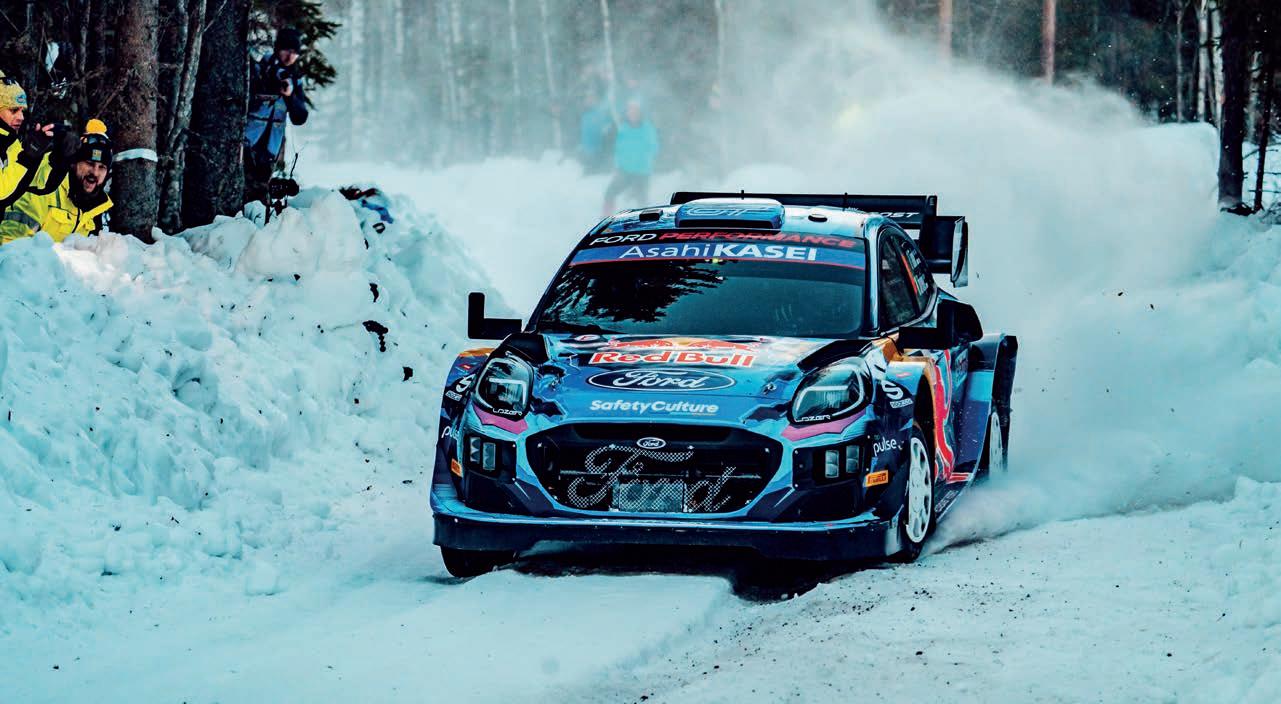
At time of writing, the 2023 season was two rallies old, and the field seems closer than everThough M-Sport spent a lot of time working on an aero upgrade package for 2023, its Ford Puma Rally1 hybrid appeared with the 2022 aero, the team admitting any gains found were negligible










































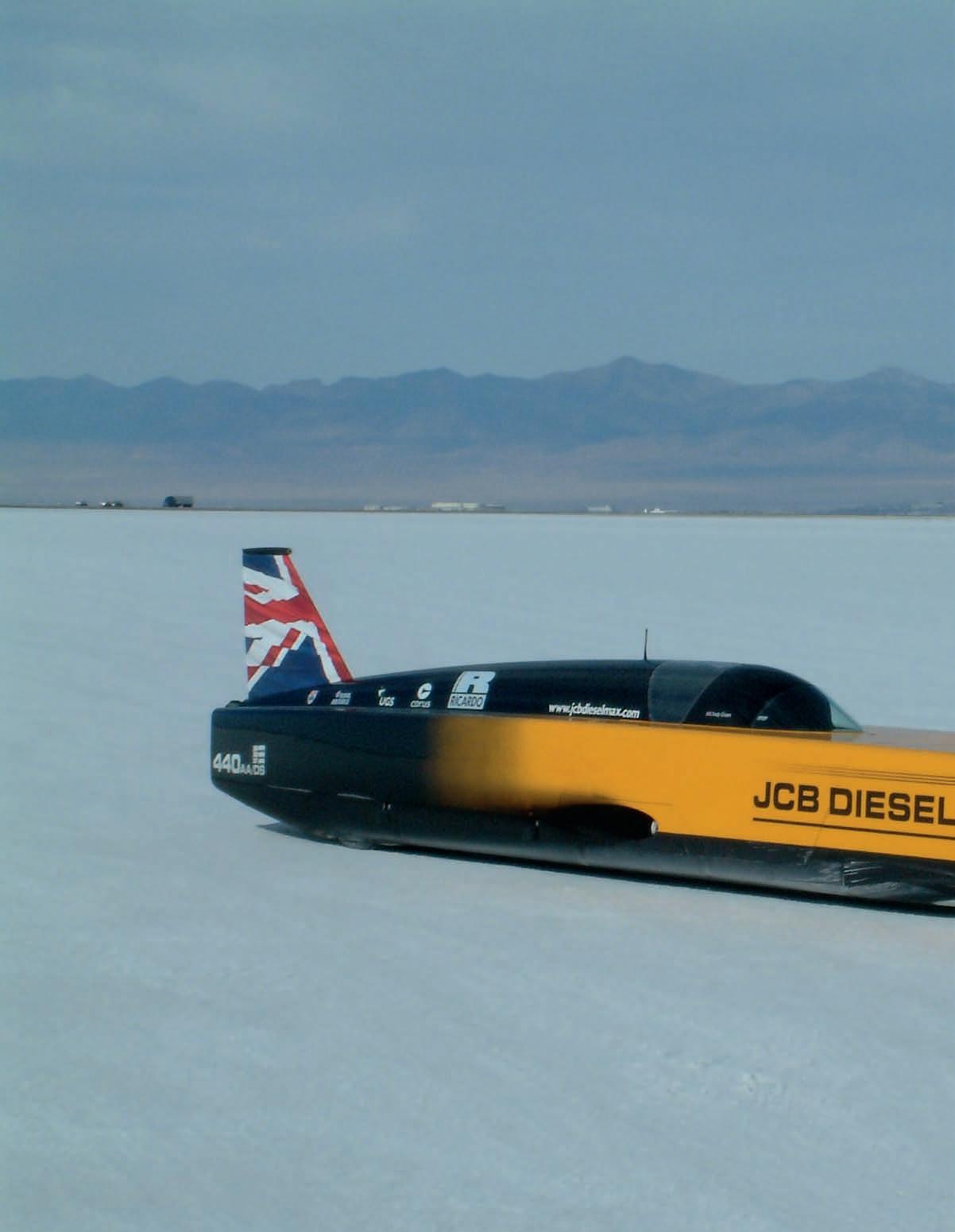
Record contract
Bonneville, where nobody waves the chequered ag
 By ALASTAIR MACQUEEN
By ALASTAIR MACQUEEN
Being asked to set a Land Speed Record with a couple of ‘digger’ engines still ranks as one of the stranger requests I’ve had in my life
At its heart, motorsport is a simple sport. Go fast, don’t crash until you see the chequered flag. Whether that’s at the end of a prescribed distance or time, if you reach it first, or in the quickest time, then it’s job done.
With the exception of one year of my motorsport life, these rules applied. That year was spent setting the diesel Land Speed Record [LSR]. The thought of the chequered flag never entered my head until the final day we set our target record, but then nobody was there to say the job was officially over, nobody to wave that flag.
We could then potentially go out the following day and go quicker still. As it turned out, that was to become the hardest decision of all to make.
To explain how this all came about, we must go back to 2006. I was working in the paddock at Oulton Park in March of that year when I received a ’phone call.
I’ve had quite a few memorable moments at that particular track in Cheshire, UK. As a school kid in the early 1960s, I’d met and talked to my hero, Jim Clark, there. My father was at school in Duns, Jim’s hometown, so there was a connection, and we all chatted happily as he prepared to drive his Lotus 23.
In 1998, I stood half asleep and soaked in Champagne after a McLaren GT race win following an all-night drive back from a Le Mans test with the same car the previous day.
In 1999, I watched my son celebrate his first ever motorcycle race win there, and then went on to have dinner that same evening with acting legend, Sir Tom Courtney. In 2000, I’d spend a full afternoon in a paddock full
of carnage when running a whole race full of Palmer Audis. We had made two earlier attempts to run the race, each one ending in a huge pile of cars at the first turn, but that particular afternoon would go on to become known as ‘Palmergeddon’.
Special car
This time, though, it was design engineer, John Piper, on the ’phone. He was one of the guys Ross Brawn had brought to TWR Jaguar, and he had designed the gearbox / transaxle for the XJR-14. He had also race engineered a car at Le Mans for me in 1991.
He didn’t tell me much, other than to say he’d almost completed the design of a very special car and needed somebody to run it.
The ’special car’ turned out to be the JCB Dieselmax Land Speed Record car. My job would be to oversee the build, plan and implement the test plan, the verification and run the car out at Bonneville Salt Flats. Almost exactly what a race engineer does every day in motorsport.

John’s premise was wonderfully simple: ‘When the car is on stands then I’m in charge. When it’s on its wheels then you’re in charge.’
Suddenly, all other work I was involved in became less important, and I switched focus to August in Utah.
Of course, the main job of the race (or in this case ‘run’) engineer is to be the link between the driver and the team and optimise the speed of the car. This time, though, my driver was the fastest man on earth, and the only one to have exceeded the speed of sound on the ground, wing commander Andy Green. He was also a highly
qualified fighter pilot, a great mathematician, leader of the RAF bobsleigh Cresta run team, keen freefall parachutist and, at the time, base commander of RAF Wittering near Peterborough in the UK. Andy had already cleared with the RAF that we could use the runway there to test the car at up to 200mph prior to leaving for the States, if we avoided the Harriers all would be OK.
Team players
Andy had also put some of his old Thrust SSC land speed team back together, including former LSR record holder, Richard Noble, and astonishing aerodynamicist, Ron Ayres. The latter was the father of the bloodhound

The main job of the race (or in this case ‘run’) engineer is to be the link between the driver and the team and optimise the speed of the carOne of the secrets to the JCB Dieselmax’s success was the exceptional aerodynamics by Ron Ayres, which ensured there was no ‘spray drag’ behind the car. Running verified all Ayres’ theories and calculations Behind the wheel was wing commander Andy Green (right), an exceptional polymath and, to this day, the fastest man on earth
Heat Exchangers


missiles from the Cold War era, and the only man who could keep a car / projectile on the ground as it went supersonic. It was a whole new experience to work with such acclaimed people from outside the world of motorsport.
Ron Ayres is a real legend. He had studied Land Speed Record attempts for many years and been struck by the fact most had come up short of their theoretical speeds when run on the salt. In doing so, he had established a theory of ‘spray drag’. In short, it says that when you run on a loose surface such as the desert or salt, because of the plumes of dust behind the vehicle, it is actually passing through a denser fluid than air. He had even formulated an equation to establish its value.
Dieselmax was built with underbody aerodynamics specifically designed to reduce the spray thrown up by the wheels. There was never a plume, or rooster tail, following this car on the salt. Consequently, as the speed of the car increased, I was able to verify every one of Ron’s predicted aero figures to several decimal places. Really low drag, lift neutral and great stability.
Digger deep
JCB was keen to promote its new 444 diesel engine, which was being used in a variety of its ground-based products.

Being asked to set a Land Speed Record with a couple of ‘digger’ engines still ranks as one of the stranger requests I’ve had in my life. But if I can secure two Le Mans wins with a V12 ‘aeroplane’ engine, anything is possible, if you have the resource, technology and time.
Ricardo on the south coast of England had the job of developing the JCB 444 diesel engines, normally happy to pump out less than 100bhp, into units producing almost 800bhp. That required a little work (!) and, whilst remaining true to the base engine, they increased in size from four to five litres, gained steel pistons, injectors the size of bath taps and sequential turbocharging, with the final turbo much the same size as a dustbin lid.
The two engines ran completely independent of each other, apart from a feed from the throttle pot and gear position signal.
To give the lowest possible frontal area, the engines would sit in front and behind the driver, with the rear engine in a conventional racecar position ahead of the rear wheels, while the front engine sat just behind the front axle line, driving the front wheels.
Calculations indicated the car would be more efficient with no conventional radiators, but a heat exchanger set up through an ice tank housed in the vehicle’s carbon nose box.
Every run with this system was a prototype. Adjustments were being constantly made to allow us to use the full thermal capacity available whilst holding the engine temperature to allow maximum power through each 11-mile pass.

The heart of the car were two independent JCB 444 diesel engines with sequential turbochargers. One sat ahead of the driver, the other behind
The schedule to have the car designed, built, tested and flown to the States for the record attempt was optimistic, to say the least. Inevitably, the proposed six-week build period spread to 6½ weeks, at which point we decided to move the by then almost complete car to RAF Wittering whilst we waited for the completion of the final few components.
The car was put together at Visioneering in Coventry, a specialist engineering firm run by Brian Horner. Formula 1 fans will undoubtedly recognise that surname.
I’d put together a run plan for the car, together with a sign-off document, which ran to some 140 separate systems and partsUK-based Ricardo performance tuned and developed the engines, which increased in output from under 100bhp to around 800bhp each
I’d put together a run plan for the car, together with a sign-off document, which ran to some 140 separate systems and parts. It would work on a traffic light principle and, if there were no red lights after the Wittering trials, we would pack the car off to Bonneville.

First to 200
Working together almost around the clock for 10 days allowed the all-new team to gel and, after over 20 runs, we had achieved over 200mph in the space available on the runway, with only a couple of amber warnings on the sign-off document. That was enough to achieve the green light needed for an assault on the salt.
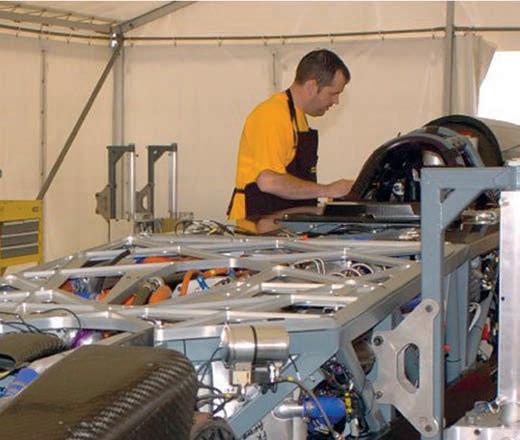

Bonneville is like nowhere else on earth. In the winter, it is a shallow salt lake that dries out in summer to form a dry lake bed with a flat and smooth (-ish, depending on the weather) surface of some 46 square miles. Conditions vary from year to year, and it sits at about 4200ft (1280m) altitude, much the same as the top of Ben Nevis in Scotland.
The grip level on normal tyres is equivalent to wet tarmac, and it took me
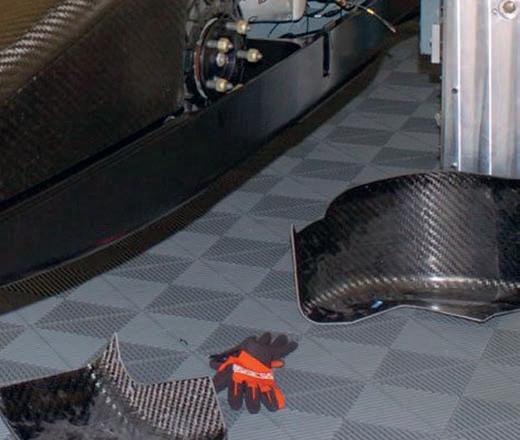

quite some time to get used to a bright white surface, which looks to be but isn’t as slippery as ice or snow. The light levels there are something else, too. Think sunshine on Alpine snow and then double it. It’s somewhere you can suffer sunburn on the underside of your nose, or up your shorts, from the reflection. Ambient pressure is around 860mbar.
One of the biggest issues we faced prior to arriving at Bonneville was finding tyres that would support our 2.7-tonne car at 350mph. We had settled on some 23in Goodyear drag race tyres, which were validated to 300mph, and had then done our own tests to validate them to 350mph in very specific conditions on a rig at a USAF base used to develop the space shuttle tyres. Our calculations told us that with the correct run profile and pressures, one set was capable of two 11-mile runs at that speed and load simulated on the steel roller rig.
Tandem trouble
The Bonneville programme started at the annual ‘run what you brung’ Speed Week as practice. There followed a week of preparation, including changing both engines to ‘record spec’, prior to an exclusive record week with the FIA in attendance. We were based a few miles from the salt flats at Wendover airport in a WW2 woodenframed hanger famous for housing the Enola Gay B-29 Superfortress the night prior to her flight to Hiroshima in 1945.
Speed Week was a big learning experience and, despite all that space, it wasn’t until the final day that the car ran over 300mph. There were all the normal little glitches of running a prototype, but the one that had us most perplexed was to become known as ‘lazy man on a tandem’ syndrome.
In short, we were having trouble getting one or other of the engines to spool up its turbochargers on the salt.
This had not been an issue on the dyno as the engine was always run against the resistance of the dyno brake to gain exhaust temperature, then the thermal inertia would spool up the turbos on request. It was never a problem at RAF Wittering either as the ambient pressure had been about 1000mbar. But now, with only 860mb pressure, one engine would start to spool up, take the load off the other and, without load, it would just give up and go along for the ride, just like the lazy tandem rider.
We tried pre-heating the engines to different levels but, as soon as one took off, the other would become the lazy one. That slight ambient pressure drop had tipped our whole system over the edge.
There are very few people who have ever faced that engineering problem, so we really were pioneering. And we only had that one week in which to fix it.
We plotted our attack on the issue on two fronts. Firstly, we would fit a one-inch diameter boost share line between the two engine plenums so the engine that boosted first would share it around a bit.
We would also get Andy to load the engines against the brakes and have the exhaust gas temperatures displayed on the dash so he could see over 600degC on each engine before allowing them to rev.
Heating strategy
The plan worked and, on the final day of Speed Week, we set a record 317mph.

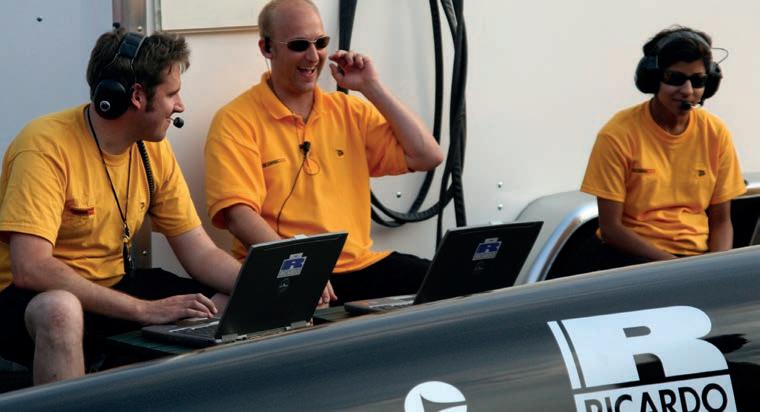
During our week of downtime that followed, we needed not only to rebuild the car, but also to perfect our engine heating strategy by doing some low-speed testing at Wendover airport. Naturally, that didn’t go smoothly either.
The first run with the new engines was halted when the rear engine refused to come
on boost at all. After a few hours of digging into the data, it was spotted that the rear engine was seeing a false neutral signal from the gearbox and was doing exactly what it was told, limiting its revs to 2800.
The following day, an electrical issue in the front loom meant we aborted the first run of the day, but by 10.30 that morning we had a new record, 328mph, with a return run at 342.
There were all the normal little glitches of running a prototype, but the one that had us most perplexed was to become known as ‘lazy man on a tandem’ syndromeWith the car validated to 200mph in the UK, the ultimate record runs were made at Bonneville Salt Flats in the USA Though there were hurdles to overcome on route, the team was elated with the speed and performance, but could it have gone faster?












At the crack of dawn on 23 August, our outbound run was quicker still, at 365mph. The tyres still looked brand new, the cooling was almost perfect, and Andy had not yet shifted into sixth gear.
The turnaround was completed in under 40 minutes, and the car started its return run.
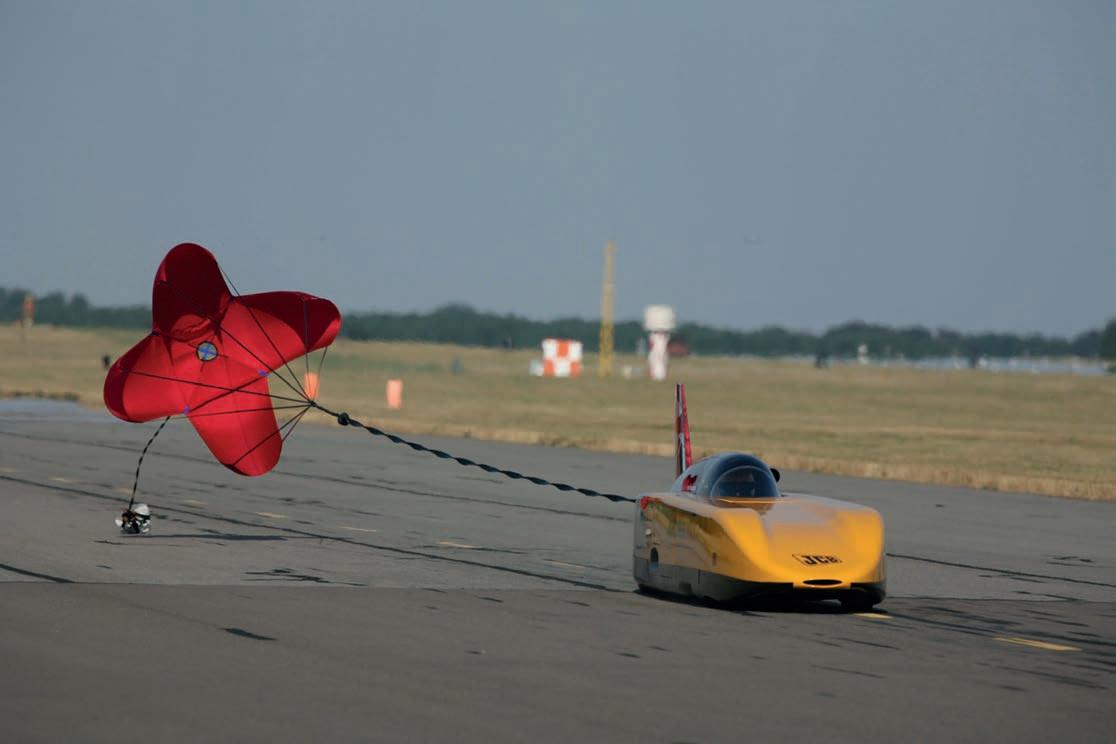
As we chased in our road cars, though, it became clear that the big yellow racecar was not streaking away from us. Andy was on the radio saying the front engine was not boosting, but would give the brake loading one more shot. I thought we had just wasted a good outbound run and my mind shifted to the plan for the following day.
But then, about a mile later into the run than it should have been, the car came on to boost. Talk about turbo lag! Andy then gave it the full beans and passed through the measured mile at 335mph. That’s what a mile less run up does.
Having double checked all the data, the FIA announced the average as Andy came to rest at the end of the run. 350.092mph.
Of course, I teased Andy about his inability to stick to the programme target of 350mph.
Decision time
It was a great day, but it was also very clear the car had the potential to go even faster. The tyres looked in fine shape and we had seen them to 400mph on a ‘free spin’ rig.
We had the team in place. If we hadn’t got ‘greedy’ with front engine start temperature, we could do two perfect runs, and we still hadn’t turned the engines up to ‘11’. Andy had another gear to use. The salt was in the best condition it had been in for years and we had the place booked for another three days. Checking the calculations, 375mph looked possible. As the management team sat and discussed the possibilities, we realised we had been infected by a strong virus the locals call salt fever. Even Andy, normally the most controlled and rational person you could ever hope to meet, was infected.
But, as our adrenaline levels subsided, and more logical thought processes took over, so the prospect of running the car again started to look more unlikely. In the end, we all agreed we could come back with a better car, and new, certified tyres another year, a much better idea than risking Andy the following day.
But it still took us some hours to come to that decision; there was no man with the chequered flag and so we had to decide ourselves when to stop.
The diesel Land Speed Record we set has not been approached in the last 16 years.
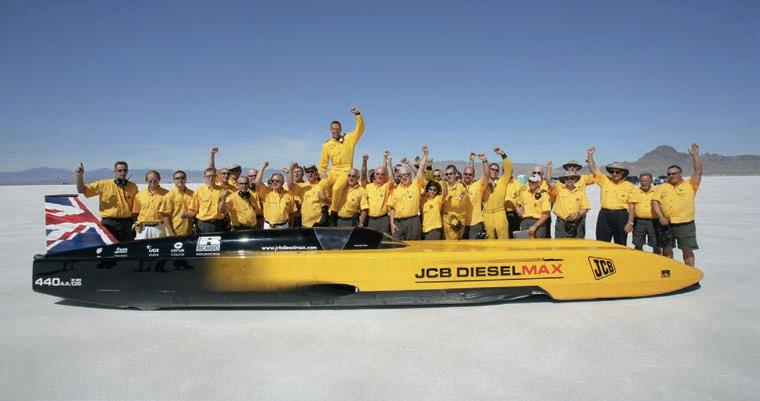
In the end, we all agreed we could come back with a better car and new, certified tyres another year, a much better idea than risking Andy the following dayPrior to the Bonneville runs, the car was tested to 200mph at RAF Wittering in the UK. The problems experienced with turbo spooling in the US did not present here due to higher ambient pressure The team celebrate a new FIA world dieselpowered Land Speed Record, 350.092mph
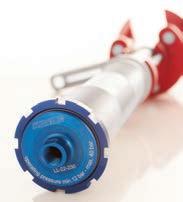
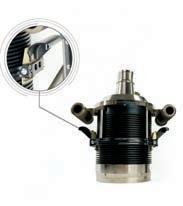








A quantum leap for developing high-performance racecars
Harnessing the disruptive power of quantum computing
Quantum computing could enable efficient simulation for racecar innovation by overcoming the computational bottle neck. Unlike the traditional computer, established on bits and bytes, quantum computing (QC) uses super-positioning and entanglement –theoretical concepts of quantum mechanics – to process information. This property allows quantum computers to perform calculations that are impractical, or even impossible, for classical computers.
QC can also account for uncertainty in its calculations, something unthinkable for a binary machine. In-house quantum computing technology infrastructure has challenges, such as circuit depth, qubit count, and noise interference. Additionally, it
requires significant investment in hardware and is cost prohibitive for most firms.
Enter software venture, BosonQ Psi (BQP), which has developed a proprietary hybrid quantum-classical cloud simulation algorithm software called BQPhy®. BQPhy leverages the power of quantum computing to perform simulations utilising a hybrid infrastructure of quantum computers and classical highperformance computers to highlight nearterm quantum value to simulation challenges.


The software-as-a-service enterprise uses quantum-inspired algorithms to speed up virtual simulations in a proprietary multiphysics and computer-aided engineering (CAE) suite equipped with a high-accuracy solver, making BQPhy the world’s first quantum-powered simulation suite.

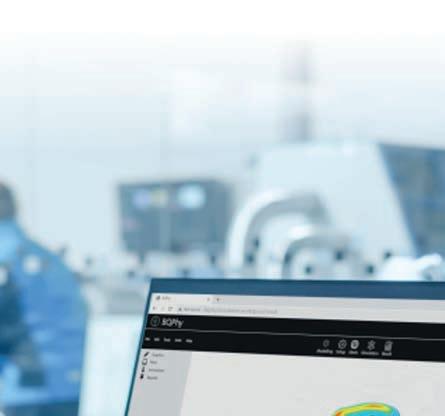
BQPhy finds use in advanced analysis of ways to perform simulations for future innovations faster and more efficiently while from

BQPhy finds use in advanced analysis of materials, structures, thermal phenomena and design optimisation. It explores new ways to perform simulations for future fault-tolerant quantum computers, giving it the potential to usher next-level design innovations faster and more efficiently while requiring fewer computational resources.
With motorsport being an engineering competition as much as a racing contest, engineering teams rely more heavily on simulations from CFD to digital twins and race simulators than ever before to gain a competitive edge. While multiphysics simulations help create optimised designs, engineering teams are constrained by the

help engineering teams are constrained by the





The solutions found using the BQPhy methodology evolved through processes modelled after the elements of Darwinian evolutionMany engineering teams are constrained by computational power for high accuracy simulations, which can be incredibly time consuming
scalability of computational power provided by HPCs to enable complex simulations.
They often have to trade off between simulation accuracy and the time required, given the computational bottleneck that is not easily scalable. With its exponential processing power, BQPhy could enable incredibly efficient and more complex simulations with the same computational resources reducing simulation time and costs, prototyping, testing schedules and production costs.

BQP’s breakthrough approach

The Q-SAAS venture BQP recently released its alpha version of BQPhy with its proprietary quantum-inspired algorithms integrated as part of a CAE solver, leveraging the power of quantum computing and can run on both HPC and quantum computers.


Design optimisation with this computation technique is a digitalised
approach to automatically finding optimal solutions to physics problems while satisfying constraints. The solutions found using the BQPhy methodology evolved through processes modelled after the elements of Darwinian evolution.
Evolutionary computation algorithms are extensively used in complex and continuous optimisation problems. Like traditional evolutionary methods, several candidates are created, and solvers run through the potential options arriving ever closer to optimal with every investigation.
BQPhy’s quantum-inspired technology is encoded into the quantum register and converted into binary data to generate a broader candidate pool. The quantum parameters are then altered automatically from previous run data to create new candidates until the optimised criteria are met.
During the development of BQPhy’s technology, the Rosenbrock Function (a non-convex function, introduced by Howard H Rosenbrock, used as a performance test problem for optimisation algorithms) and Holder Table functions (optimisation problem with multiple local minima, but it has four global minima) were used as test functions to evaluate the algorithm’s performance against classical approaches to find global minima in a complex search space.
BQPhy’s state-of-the-art quantum solvers integrated with industry leaders in quantum hardware provides a full stack experience to the user
The world’s first quantum-powered simulation suite
Eight times less computational resources was required for optimising the weight of this component using BQP solution compared to traditional computing technology
Comparing BQPhy’s technology with gradient-based and stochastic approaches, it converges faster with fewer solutions generated. This indicates fewer computational resources to obtain the optimal solution.
BQPhy key features
BQPhy’s shape optimisation solver enables multivariable optimisation with a large number of constraints. With shape optimisation, engineering teams can optimise the overall vehicle shape, aerofoils, spoilers and other racecar features.

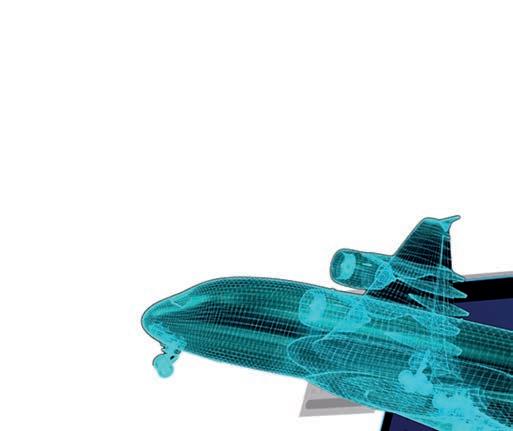
A digitalised approach to automatically finding optimal solutions to physics problems while satisfying constraints
Aerofoil shape optimisation: multi-variable optimisation, indicated in orange, delivers 18 per cent better results with a 40 per cent cost saving compared to traditional methods. The aerofoil in blue is already highly developed for high downforce to drag ratio, but the BQphy QIEO algorithm improves it further, increasing aerodynamic performance by nearly 11

BQhy QIO evolutionary offers a higher exploration rate, implying a larger solution space, and helps evaluate more rigorous constraints. This is like exploring the forest with a headlamp (the classical approach) compared to with night vision, which offers a broader view (QIO evolutionary) algorithm. As can be seen from the results, BQPhy-QIEO algorithmic approach enables efficient simulation

Topology optimisation based on structural and mechanical principles, which can optimise material type and distribution for a given set of boundary conditions and design constraints, is also part of the BQPhy simulation suite. This allows the reduction in ‘unwanted materials’ to maximise the component or system performance.
BQPhy’s simulation suite also features quantum-based structural and thermal simulation solvers. With this, engineering teams can push the envelope to build innovative safety features, advanced braking systems, and efficient heat dissipation systems, among other cutting-edge features, to outperform the competition.
Additionally, engineers can train quantum machine learning algorithms on data from classical thermal analysis simulations to predict materials and systems’ thermodynamic properties based on their mechanical structure. These simulations

are vital to determine ambient fuel temperature, energy transfer efficiency and tyre wear based on driving conditions.
It can help the engineering team by proposing acceleration points out of corners, deployment onto straights and even precise pit stop windows based on the thermal analysis, giving the teams that vital split-second advantage. Technological breakthroughs and rapid development of the quantum ecosystems signal an exciting time for motor racing innovations.
The added advantage: Strangeworks hardware ecosystem
BQP is partnering with Strangeworks, an advanced computing company to gain access to quantum and classical hardware providers. BQP’s simulation suite will integrate the Strangeworks platform, enabling engineering teams to access
a robust quantum hardware ecosystem from within the BQphy software.
In addition to providing cloud access to hardware resources, Strangeworks is building a growing catalogue of applications and services on which the BQPhy software is currently listed. Strangeworks’ is focused on creating easy-to-use solutions that securely integrate with existing workflows. They put the power of choice in the hands of the customers, enabling users to scale their spending and solutions at a pace that matches business needs.
The BQP and Strangeworks partnership means customers can run simulations across multiple backends and start bringing novel solutions to motorsports quickly and efficiently. In conclusion, the quantum revolution is imminent, with several established technology providers and many more start-up companies entering this space in recent years.
Engineering teams looking for a proof of concept to experience quantum-powered simulations using BQP’s advanced simulation suite may contact Rut Lineswala, founder and CTO, at Rut.lineswala@bosonqpsi.com
Technological breakthroughs and rapid development of the quantum ecosystems signal an exciting time for motor racing innovationsper cent Comparing BQPhy’s QIEO evolutionary vs Classical Evolutionary approach, the optimal solution is obtained faster. This implies less computational resource is required to obtain the optimal result

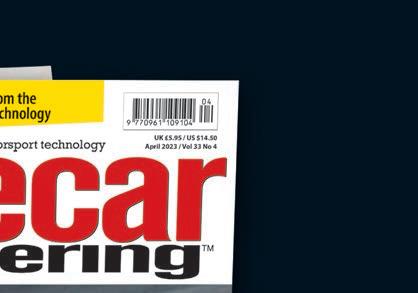








Taking the tube
Tubular steel is one of the most ubiquitous products in motorsport, but with tales of dubious materials on the market and a wide range of metals available, care must be taken when choosing and using pipe. Racecar investigates
By MIKE BRESLINPurchase a fake Rolex and you’re going to be out of pocket and may be late for work. Buy counterfeit high-spec steel for a spaceframe or rollcage build and the results could be much more serious. Because tubular steel, which even in this age of carbon is still at the heart of the vast majority of competition vehicles, is nearly always used in a way that’s vital for driver protection. It’s also used in great quantities. If you lay the tubing that makes up some rollcages end to end it can stretch for 40 metres, for instance.
But is there really a chance the steel you buy is not as advertised? Well, yes, but before we go into that, we need to fully understand what makes high-spec motorsport tubular steel so special in the first place.
Steels used in safety critical structures such as rollcages, or rollover protection structures (ROPS) will be either directly or indirectly mandated by regulations. Indirectly, in that a specified tube size with a specified strength might be stipulated, which often
rules out the use of mild steel. This means that steels used in certain motorsport applications tend to be of a very high standard, often but not always to aerospace specifications.
Top of the pops
Some of the more popular high-spec tubular steels used include T45, 4130, 25CrMo4 and 15CDV6 (see box out on p57 for more details). But to get a general idea of how they’re produced, we will focus on T45 here.

Tim Rose, an engineering metallurgist and a senior research fellow and lecturer in the Department of Automotive Engineering at Cranfield University, a man who has studied the use of steel in rollcages, says of T45: ‘It’s a carbon manganese cold drawn seamless tube. The benefit is that it falls under aerospace specifications, so that the starting material, production, certification and quality assurance is much tighter (and more costly) than, say, commercial tube.
‘It’s also about two times the tensile strength of [regular] cold drawn seamless,

so when homologating a ’cage it allows for smaller OD and wall thickness tubes to be used, which brings down weight. However, size for size, the weights will be the same.’
All steels are alloys – a mix of iron and carbon – but aerospace steels benefit from the addition of a pinch of an extra alloying element. In the case of T45, manganese.
‘This hardens the steel,’ explains Rose. ‘It makes it stiffer and increases its strength, but manganese content will be pretty low, 1.3 to 1.7 per cent of the weight of the material.’
Most tubular steels used in the motorsport environment also gain strength through a process called cold drawing.
‘Cold drawn means the tube is first hot formed through an extruder when the material is sufficiently plastic. Then you wait until it’s cooled down and tested, and then you pull it through a die. This is a strong material, so it requires a horrendous amount of force,’ says Rose. ‘But the process aligns the structure of the material, gets rid of any holes, defects or porosity, and just makes for a much
stronger product, which is then treated as required subject to material specification.’
Though it is often the headline figure, tensile strength is just one of three crucial properties a motorsport steel needs, with yield and extension (or ductility) joining it in this Holy Trinity.
‘If you’ve got a piece of a material the size of a pencil, say, and you were to put that under load – so you fix one end of it and attach weights to the other – the tensile strength of that material is the most weight you could put on it until visible necking [reduction in diameter] starts to occur,’ explains Rose. ‘The moment that occurs, you know the weight that is on it, you know what the cross section is and so that is your tensile strength, in Newtons per square millimetre.’
Breaking point
The above is sometimes referred to, mistakenly, as a breaking point, but that’s also quite a good way to think of it in a way, in that it is a limit that can be reached. Yet how it’s reached is also important.
‘The higher the strength is, the more brittle it becomes,’ says Phil Matts, director product development at well-known UK motorsport steel supplier, Pro Formance Metals. ‘A rollcage, or rollover protection structure like this has also got to be designed so it soaks up energy.’



Which brings us neatly to yield.
‘Yield strength is when you load the material, it will extend, but if you take the load off, it will go back to its original length,’ says Rose. ‘It’s absolutely vital, and if you’re designing efficiently, you try and get to where yield, which is completely reversible, just transitions to plastic, which is irreversible. That’s your optimum point to design at, provided you’re fairly confident you’re not going to load it and turn it into plastic, where it becomes permanently deformed.’
The third property is elongation, which, says Matts, allows the material to bend. Something that is very useful when you’re trying to stuff up to 40m of steel tube inside the production ’shell of a Touring Car.
Tensile strength is just one of three crucial properties a motorsport steel needs, with yield and extension (or ductility) joining it in this Holy Trinity
Basically, elongation is how much it can be stretched out without becoming more brittle or weaker, which brings other benefits beyond forming, Matts insists, using Pro Formance Metal’s own ROPT510 tubing (see box out) as an example of a steel with high elongation properties. ‘It carries an excellent elasticity, which allows the ’cages to be bent and formed, but it will also soak up energies,’ he says. ‘It will soak up more energies than any other tube on the marketplace, because the elastic limits are so much better.
‘Now, if we were to push the tensile strength up, to make it stronger, that will also push the elongation [down], which then reduces the elasticity of the material. And that’s where we didn’t want to go.
‘There are already materials in the marketplace that would do that, like our full aerospace designation BS4T45 to BS5T100 in accordance with BS6S100 condition tubing. They are a lot higher in tensile, but they’re a lot lower in elongation.’
Rigid peformance
The important thing to note here is that a stiff rollcage will bring performance – one BTCC engineer told this writer some years ago that the rigidity of the ’cage was worth the 70kg that came with it. Not all agree with that, though, which means there can be a tricky balance between two conflicting goals: ultimate safety and ultimate performance.

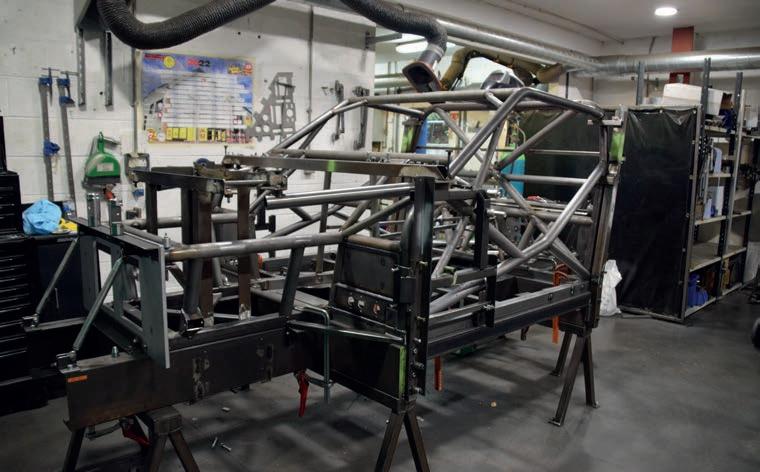
Joe Hickerton is a ROPS (rollover protection system) expert and technical manager at British governing body, Motorsport UK. ‘[A rollcage] is both a safety item and also a performance item,’ he says. ‘It will be used by an engineer to increase the performance of the vehicle, to stiffen the vehicle. Whereas from my point of view, I’m solely looking at the safety. It’s all about transfers of load. You don’t want it to be a completely solid structure.
It needs to absorb the loads of any impact or incidents in a way that transfers those loads away from the occupants of the vehicle.’
Forged steel
As we’ve seen, there are many variables to consider when choosing a tubular steel, but it’s interesting to note that much of the market seems to be driven by geographical and historical preferences. For instance, T45 is popular in the UK, while 4130 is the steel of

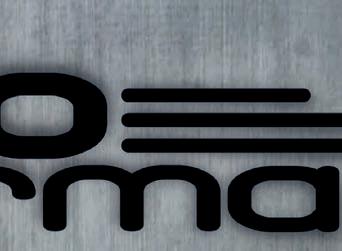




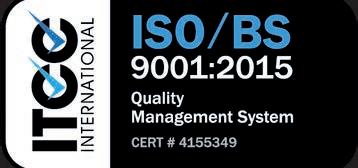

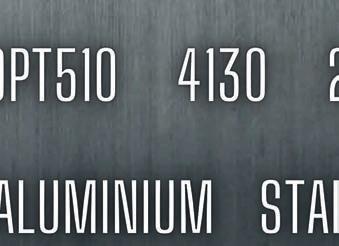




choice in the US and 25CrMo4 in continental Europe. Each has its fans, and its detractors, but all should do the job required of it. What might not do the job is subtitute materials.
‘We’re seeing materials come into the marketplace that are being advertised as one thing, but some are totally different,’ warns Matts. ‘People will buy it off the internet, not even knowing where it’s coming from, and they are buying tubes from production facilities with no understanding of material usages, requirements or what the materials are designed for, which is very dangerous.
‘These tubes then come into the marketplace and are being sold as T45, with surface treatments that were never tested nor approved, such as grinding and polishing, which can lead to surface cracks and failures.’
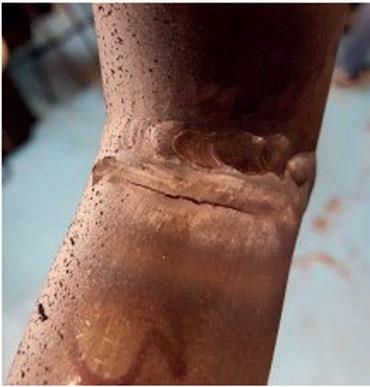
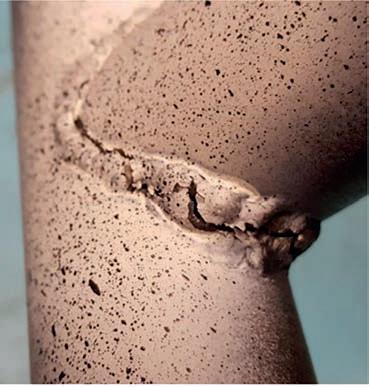
Rose has also come across steel products that are not as high spec as they should be.
‘What has certainly happened in the last 10 years is that there are some iffy products kicking about that don’t appear to be any spec at all,’ he says. ‘It’s well known that China and the Far East have dumped a lot of stuff on the international markets, and they don’t dump their prime product, they dump the run-of-the-mill sort of stuff. And it’s obvious there are unscrupulous people out there that are trying to pass that off as a premium product, and a lot of times it goes unnoticed.’
Rose is also in no doubt this is not just a simple case of misidentification of steel.
‘I think it’s just as straightforward as “we know this tube looks like T45, we know it isn’t, but we’re going to label it as T45 and see you later,”’ he says. ‘I don’t think it’s any more sophisticated than that.’
Passing off
‘I’ve done a couple of failure investigations and have called for the full set of mill certificates [quality assurance documents used in the steel industry that state the physical and chemical properties of a material]. One company had bought some material and made some pressure vessels. I think they made about 10 or 12, and four or five of them bowed, blistered and cracked, and they shouldn’t have. When they showed me the mill certificates, they were all identical, so had clearly just been cut and pasted. I said one of these mill certificates is correct, and it applies to one batch of material, which I don’t think you’ve got. The others are worthless.
‘So, you need to be sure of your supplier, and have confidence that they are also sure of their supplier, if it’s anything safety critical.’
This is not just an issue that affects the club level racecar builder either, insists Matts. ‘We know of a ’cage purchased from a ’cage builder a few years ago by a WRC team. They bought it thinking they had bought a full spec ’cage, but it was this [copy] material.’
If a WRC team can buy a ’cage made from
counterfeit steel, then anyone can, which suggests there’s an obvious safety issue here.
Motorsport UK was unable to comment on this matter at time of writing, but technical manager, Joe Hickerton did say: ‘We would always advise people, if they’re sourcing or building a rollcage, to ensure they know what the material is and to make sure they have traceability and bills of material.’
In some ways, in the case of rollcages at least, the risk of using a sub-standard steel has reduced somewhat because these days regulations often state that ’cages must come from reputable manufacturers who tend to be very careful when purchasing their steel.
‘In the last couple of years, FIA regulations have moved to requiring every new rollcage be a certified design, so moving away from the sort of build it at home approach,’ confirms Hickerton. ‘You must certify the design, so you’re putting on record all the details of what the design is and signing off each individual installation, which is then held on a database. That way there is a potential
audit trail should we need it. There should be full traceability from the raw material all the way through to the installation into the car.’
Welding class
It’s not just the quality of the steel that can be an issue, though, there’s also the quality of the welding to consider. Willie Poole Motorsport, owned by former Mitsubishi and Mazda

‘In the last couple of years, FIA regulations have moved to requiring every new rollcage be a certified design, so moving away from the sort of build it at home approach’
Joe Hickerton, technical manager at Motorsport UK



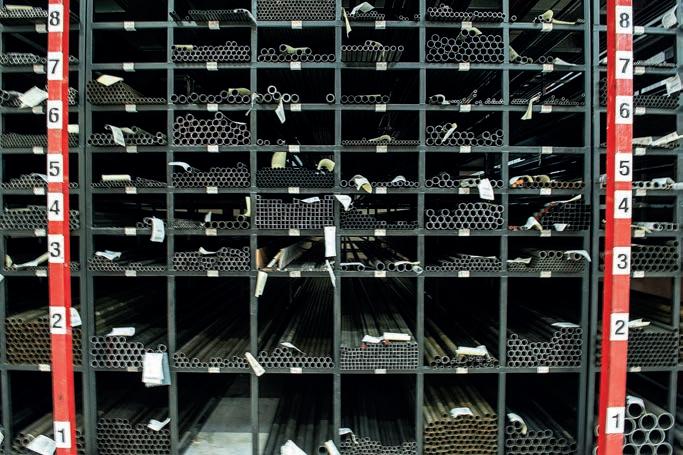

works rally team member, Willie Poole, has made a name for itself building and installing rollcages and also repairing crash-damaged race and rally cars.
‘When you fit the rollcage, you have to make sure you have a full 360-degree weld around the tube,’ Poole says, ‘but there’s a lot of people who fit rollcages and don’t fully weld them. Because they don’t know what they’re doing. They buy a rollcage and think they can do it themselves because they think it’s easy and anyone can do it. And then when they find out they can’t weld it all the way round, they just leave it. So, I’ve had a lot of cars come in for repairs over the years, only to find some of the tubes are only welded three quarters of the way around.’
This is something that Motorsport UK specifically briefs its scrutineers on.
‘The advice we give our scrutineers is that if it looks good, if the welds are of a good appearance and quality, then that’s the first good sign,’ Hickerton says. ‘Whereas if it’s a poor looking weld, then that’s where you need to perhaps be looking a little bit more closely. But it’s also checking the welds are complete, particularly in the roof area.
Mirror mirror
‘We have it from time to time where it’s not very easy to spot without mirrors, but this is the sort of detail we continually try to train our scrutineers to keep an eye on.’
When it comes to welding, Poole prefers TiG (tungsten inert gas) to MiG (metal inert gas).
‘I’ve never MiG’d a rollcage in my life. You get a nicer job with TiG. It’s more professional and I think you get a stronger weld as well. MiG weld, if it’s not done properly, looks as if it’s there, but it’s actually just sitting on top of the metal, whereas with TiG you can see you’ve got a pool there and you’re putting the rod into it so you know it’s fusing together.’
Rose, who began his working life as a welder, has recently completed some indepth studies on the welding of high strength steels, with interesting results.
‘If you’ve got material and the strength and integrity is improved, then that puts the onus of component safety on your joining process,’ he says. ‘So, if you get these double drawn, cold drawn tubes, and the material is highly anisotropic – that is, the grains are all set out in a particular way to achieve high strength – when you weld them you destroy some of that cold work that’s been put in.
‘It’s well known that there’s a penalty to welding, but just how big is that penalty? If you’ve got a tube that isn’t seriously affected, then your weld penalty is five to 10 per cent, if you have got a decent welder on hand. But if you have got a very high strength tube, and you weld it, then no matter how good the welder is, the potential for strength reduction becomes much larger, it’s 10 to 15 per cent.
‘Some [of our samples of high strength tube] cracked,’ Rose adds. ‘Sometimes they have cracked in the weld and sometimes they have cracked in the tube.
So, we’ve got a decent product, but how do we take those six metre lengths of tube and turn them into a safe rollcage or a chassis, or whatever, without compromising the fundamental mechanical properties of that high spec tube?’
The answer is that higher tensile strength tubes need far more attention when it comes to the welding ‘both in joint configuration and in the welding process itself,’ confirms Rose. ‘TiG welding, although one fifth of the speed of MiG, typically wins out here, although it needs a skilled welder to bring the best out of the process. The higher heat intensity and controlled filler addition enable a consistent weld pool to be achieved. This enables decent penetration into the two pieces being joined and reduced defects.’
However, a slower process means more labour time, which means higher costs, which is already often a significant factor with the higher spec tubing that is available.
‘The use of high tensile tubing needs to be balanced against cost and ease of fabrication,’ says Rose. ‘If there is only a small weight saving to be made, then lower strength tubes, MiG welded, may be the way to go. Also, the lower strength material tends to have higher ductility. It’s all a balance.’
Another thing to consider is that some high-strength steels need stress relieving after welding, and this cannot be carried out once fitted tightly inside a bodyshell, advised Matts, so again the materials used in the process need to be chosen wisely.
Whatever tube and welding method is used to construct them, steel rollcages will continue to be with us for the foreseeable future. But is there still a place for spaceframes in this age of carbon monocoques?
Formula future
Steve Wills, whose RSR concern is behind the tube frame Formula Foundation FF-E1 electric racecar (see RE V33N2) is well known for his expertise with this type of chassis.
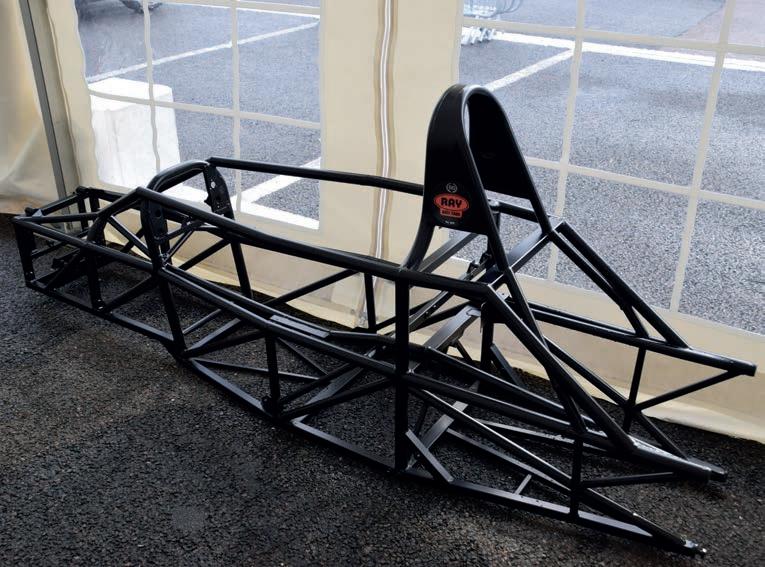
‘I predicted 20 years ago that we wouldn’t be building tube frames today, but because of the marketplace, which is cash dependent, that has not happened.
‘On top of this, tube frame chassis are usually easier to fix after accident damage, while a well-built spaceframe is, arguably, as safe as a full carbon tub, and easily capable of passing tough crash tests, such as the FIA’s Appendix J Article 277.’
So, it seems most of motorsport will be sticking with steel for some time yet. But it should heed this warning from Tim Rose: ‘The need to have full, confident traceability on your steel has never been greater.’
‘The use of high tensile tubing needs to be balanced against cost and ease of fabrication’
Tim Rose, engineering metallurgist and senior research fellow at Cranfield University
The hard stuff – a quick guide to tubular steels in motorsport
Aerospace BS4T45 to BS5T100, in accordance with BS6S100 condition tubing (T45)
This high tensile carbon manganese cold drawn seamless steel has been used on the Spitfire and Hawker range of aircraft, which is perhaps part of the reason why it’s so popular in Britain. But the main reason is that it has a superb strength-to-weight ratio, is ductile and is also weldable without pre- or post-heat treatment. It can also be brazed.
It is an aerospace-grade steel with high tensile strength (900N/mm2 maximum, 700N/mm2 minimum) and a minimum yield of 620N/mm2
4130
Popular in the US, 4130 has an excellent strength-to-weight ratio and is a chromoly steel (aka CrMo or Cr-Moly), which means it contains chromium and molybdenum. Experts say this material is not as easy to weld as others, such as T45, because it needs both pre- and post-welding heat treatment to combat cold cracking. Incidentally, this is why you often see unpainted spaceframes and ’cages in racecars, so it’s easier to spot cracks. Typical figures are: minimum tensile strength, 620N/mm2; minimum yield strength, 517N/mm2 and minimum elongation, 10 per cent. Note: the carbon content is 0.33, however the FIA / MSA UK regulations Section K state 0.3 per cent max so this can fail the requirement for ROPS
25CrMo4
This is a very similar steel to 4130 and is widely used in continental Europe. It has lower quantities of manganese than T45, but higher levels of chromeso will require a stress relieving process.
Note: there are many heat treated conditions, which must be stated at time of purchasing as 25CrMo4 is only the material, not the actual finish.
15CDV6
Used at the highest levels of motorsport, 15CDV6 is a micro-structured chromium-molybdenum-vanadium structural steel that is very well suited for welding and bending, but is also expensive to produce. Depending on the spec, this can have a minimum tensile strength of 1000N/mm2 with a minimum yield of 790N/mm2 and an elongation of 12+ per cent (these numbers are for GT1000 material). Note: while15CDV6 is said to be easy to work with and ideal for complex applications, it is not suitable for home builders.
ROPT510
Where this differs from other high-spec motorsport steels is in it not being an aerospace standard material, which means it costs less. It does, however, easily meet the FIA, SFI and Motorsport UK standards.

Pro Formance Metals, alongside its manufacturing partners, developed this steel as an off-the-shelf material for motorsport use and it has been in worldwide use for over a decade.
Its minimum tensile strength is 510N/mm2; minimum yield is 370N/mm2 and elongation is a minimum 25per cent.
CDS
This is a generic term and while ‘Cold Drawn Seamless’ applies to all of the steels described here, these have particular chemical compositions and heat treatments that set them apart as high-spec materials.
Designed to perform





 By STEWART MITCHELL
By STEWART MITCHELL
























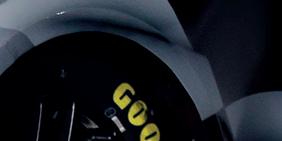


‘Developing a set-up philosophy with the new cars was a learning curve, especially with the rear suspension. Trading off aerodynamic stability for mechanical stability for corner entry is a hard compromise to strike’
Selecting the potent, roadgoing Camaro ZL1LE as the base car from which to develop the Stock Car was driven by close scrutiny and understanding of NASCAR’s design parameters. It doesn’t harm that it’s also Chevy’s archetypal blue collar car, with a huge and loyal worldwide following

The 2022 NASCAR season saw the implementation of the sport’s most significant technical overhaul since its inception. The development of the so-called Gen 7 (2022-present) cars saw thousands of hours of design and testing work over several years, making its debut at the Sun, LA Memorial Coliseum in February that year.
General Motors’ brand, Chevrolet, continued its long-standing commitment to competing in NASCAR into this new generation and its director of NASCAR programmes, Eric Warren, coordinated the Gen 7 Camaro NASCAR ZL1 design effort, as well as its ongoing development.

Warren has been working in NASCAR for over 25 years. Over this time, there have been several significant evolutions of the technical rule book. However, he notes that Gen 7 represents the most momentous shift towards an OEM car design NASCAR has seen in recent history.
Primary driver
‘The primary driver for the new generation of NASCAR Cup cars came from the teams keen to reduce the competition’s running costs,’ says Warren. ‘Secondly, the manufacturers were eager to have a stronger identity connection between the racecars and their road car counterparts.’
The Gen 7 cars introduced a symmetrical body, four-way adjustable independent suspension, a sealed underbody, 18in wheels, rack and pinion steering and a sequential gearbox, along with various other lesser elements. The result is a car that is a far cry from the asymmetric Gen 6 and others that preceded it, which saw historic technology such as beam rear axles and no underfloor aerodynamic features. ‘NASCAR, the teams and the vendors spent a lot of time conducting a cost study to figure out the most cost-efficient way of producing the components, while maintaining a product worth racing and that was attractive and exciting for the teams to run from an engineering perspective,’ notes Warren. ‘The implemented regulations would see more adjustment variables in the Gen 7 car than had ever appeared on a NASCAR Cup car before it to open the scope for a more detailed set-up.
Gen 7 represents the most momentous shift towards an OEM car design NASCAR has seen in recent history
‘The four-way adjustable independent suspension means a much more accurate set-up for the car. There’s been a lot to learn for the teams running these cars throughout 2022, but it’s made for an exciting season for all the competitors.’
Camaro choice
Chevrolet decided its Gen 7 NASCAR would be based on the latest high-performance version of Camaro, the ZL1LE. According to Warren, the choice was as much a technically strategic move as it was a marketing one.
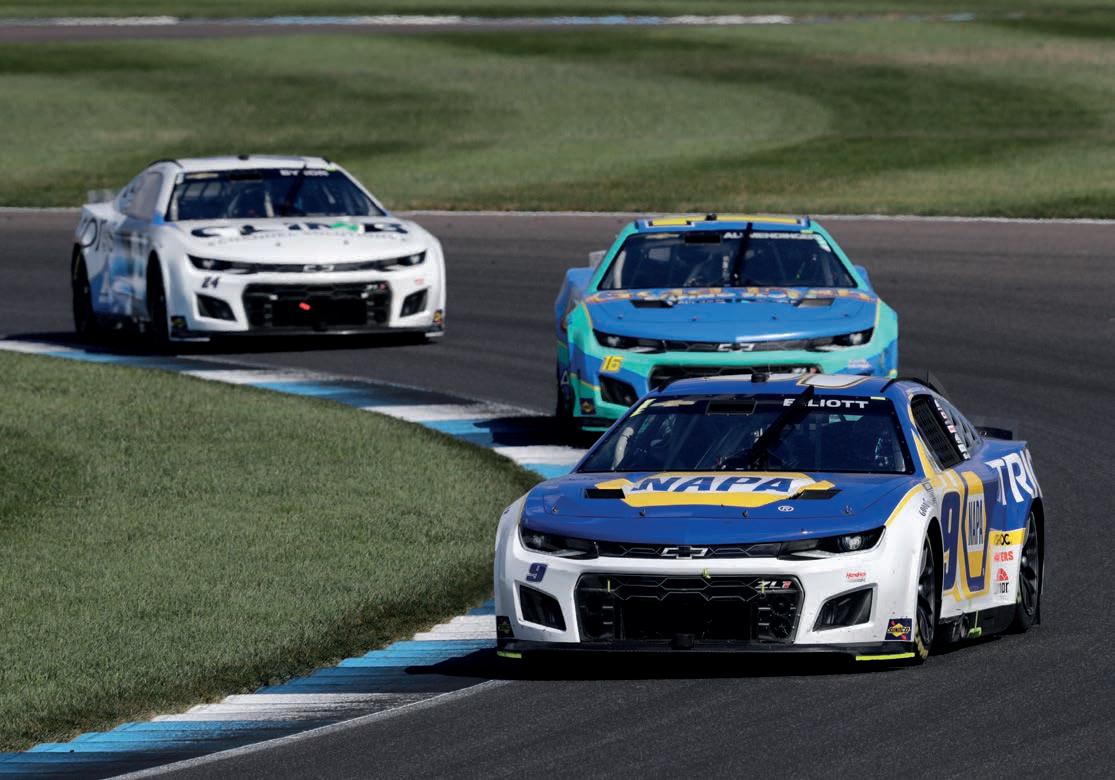
‘The Gen 7 body silhouette changed the shape of the car quite dramatically compared to the previous generation car, going from a saloon to a coupé body shape.
‘We had to be selective, making the NASCAR look like a road car as much as possible, but that selection needed to give us the opportunity to also make it performant.
‘We made sure it was going to be technically advantageous when building the racecar body, and selecting the Camaro was driven by understanding NASCAR’s design parameters, submission and testing process.’
All the OEMs worked on the design and submission process together, and NASCAR lays out an explicit sequence for qualifying the car’s aerodynamic behaviour in the wind
tunnel, but really understanding it and being able to plan the scope for developing the car body to extract performance was critical.
‘As we [GM] developed the car, we were aware of what it would achieve in the submission process,’ says Warren. ‘Within the available performance window, we hit it at the right corner of the box that you want to be in. We are in the lowdrag, high-downforce corner of the box, and let’s just say that others are not.’
NASCAR rules specify a series of standard design dimensions and parts across the car. Around the wheel openings, the lower part of the splitter, the side skirts and the tail is a band that is common across all cars. These areas are the most aerodynamically sensitive, and in previous generations were subject to a lot of tweaking and bending by teams in a bid to find a competitive advantage.
‘Overlaying the production Camaro onto the common elements, we took some of the constraints from the NASCAR rulebook and worked with the GM design team to shape the Camaro into the so-called greenhouse silhouette,’ explains Warren. ‘Though the production Camaro ZL11LE does have some downforce-generating features that are performant for on-track running, the requirements for NASCAR are very different.’
GM’s engineering group and marketing departments went back and forth on several occasions, trying to find a compromise that would suit both parties and be performant, as Warren recalls.
‘We [the racing department] wanted to lower the nose and change the tail geometry to work in our favour. And, although the car body is symmetrical, we still wanted to develop as much side force as possible when it goes into yaw.
‘We made sure it was going to be technically advantageous when building the racecar body, and selecting the Camaro was driven by understanding NASCAR’s design parameters, submission and testing process’
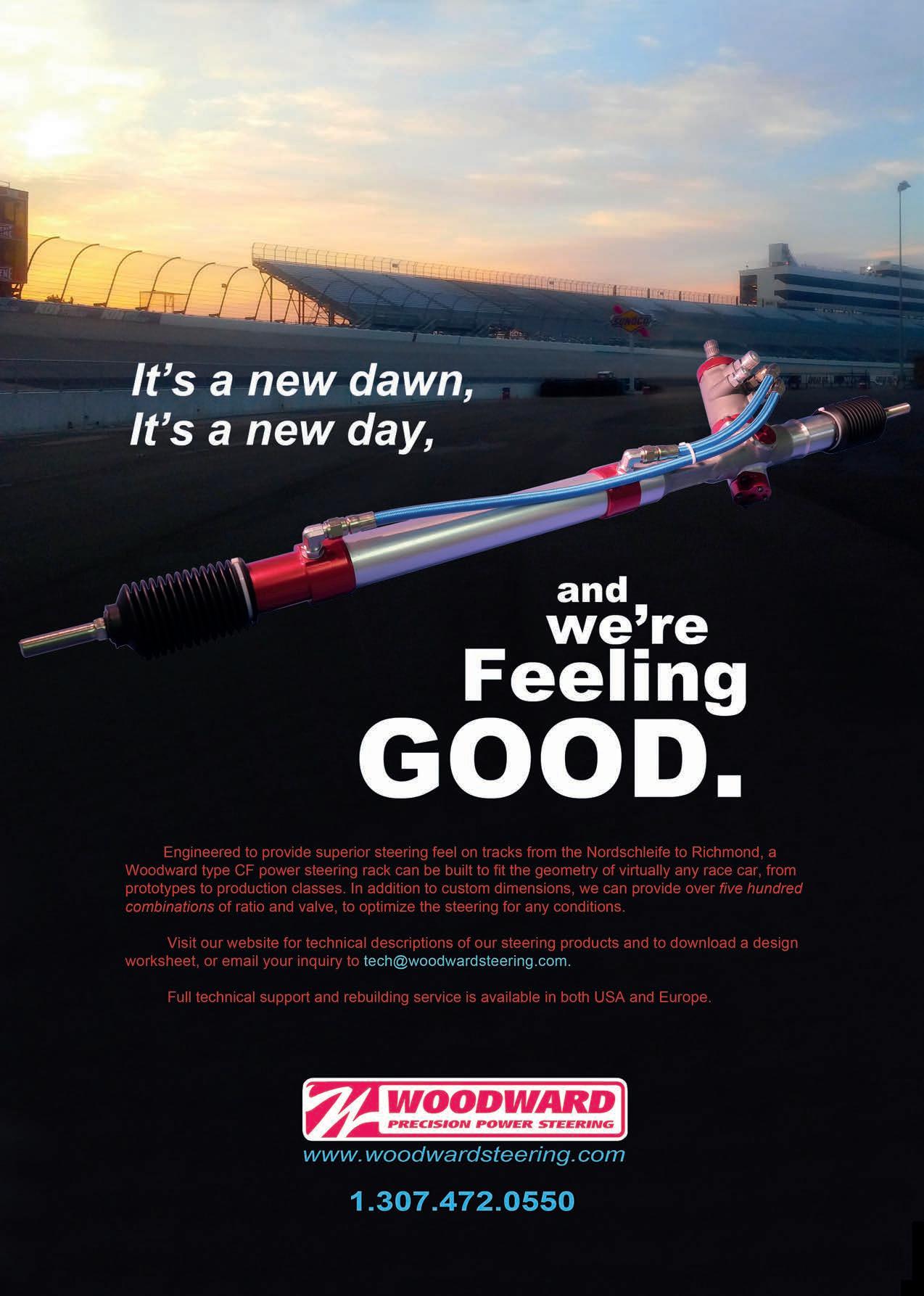

‘We did a lot of work on these features to make them follow the lines and geometry of the Camaro road car as close as possible at a visual level, but there are detailed elements of the NASCAR body that don’t much follow, which help with its aerodynamic efficiency in racing.’
Force of nurture
‘If you set the Chevrolet NASCAR Gen 7 side by side with a street Camaro ZL1LE, they are impressively close. So, from that standpoint, it’s been very successful, but there was a lot of give and take with the features you can see on the NASCAR vs the production car.’
NASCAR’s aerodynamic regime is unique with the size, shape and number of cars competing in extremely close proximity at the speeds they run. In previous generations, the cars featured a live rear axle and truck arm suspension forcing designers to open the underbody, which made controlling the under-car aerodynamics and the wake size very challenging.
‘In the past, we used to run the front of the car as low as possible to seal off the underside for aerodynamic reasons,’ highlights Warren. ‘Teams would spend a lot of time and money developing the components underneath the car to make them as flat as possible, to
aid the mass flow of whatever air did make its way under the body.’
No stone was left unturned. Teams modified everything they could, including the bottom of the engine, steering and lower control arms and suspension components. Anything exposed to the under-floor flow was developed for aerodynamic gains. While the outer surfaces of the Gen 6 cars were carefully controlled, clever teams would engineer their chassis to flex in a certain way under load to work the aerodynamics most effectively. There were considerable aerodynamic gains to be made using this technique.
In some extreme cases, teams would throw away the chassis after each race and build a new one for the upcoming race because of this deliberate induced flexing. Some teams had as many as 16 cars in their fleet and would pick the ones best suited to each individual circuit, or rebuild and develop tailored versions for specific races.

‘Some deemed this extreme over engineering and expensive operation necessary to be competitive in the previous regime,’ says Warren. ‘So, a primary target for the Gen 7 car was to decrease the wake size, ensure the cars could race closer together in the standard package, and remove some of the costs incurred to be competitive.’
Bringing the teams up to speed to understand the under-floor flows with a closed underbody and diffuser was a big task.
Ground control
‘The new cars reward running the diffuser as close to the ground as possible,’ explains Warren. ‘This is a huge departure from what we had always done in this sport.
‘We adjust the ride height at the front and back of the car for the aero balance now, which we never did before because we didn’t have this tuneability before. Understanding the attitude of the car and the ride heights
‘If you set the Chevrolet NASCAR Gen 7 side by side with a street Camaro ZL1LE, they are impressively close… but there was a lot of give and take with the features you can see on the NASCAR vs the production car’





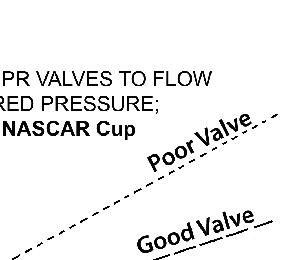













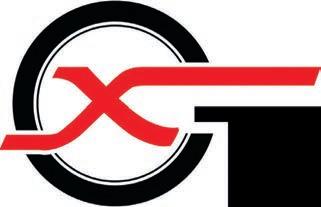



you want has been a huge effort, combining ride height mapping and suspension choice.
‘The tyre / body interaction is another new and challenging development route we are on now. Understanding them is tough as each OEM is limited to just 300 hours in the wind tunnel, and the CFD is also tightly regulated.’
With the Gen 7 body shape, car-to-car interaction is now noticeably different.
Traffic critical
‘Setting up the car to get the behaviour you want when going through traffic is more critical now because you don’t have those same aerodynamic forces you relied on before,’ continues Warren. ‘Multi-car interaction is the focus of our CFD work, and heavy instrumentation for track running – for what testing we get – is essential.’
Real-world telemetry validates the computation work, helping teams understand the behaviour of the cars when passing each other. Teams then develop aerodynamic maps to dial their cars in best to deal with it.
As the lead car runs in clean air, it ends up with more downforce than the cars behind it.
‘It’s easy to get slightly offset from a vehicle in front of you,’ notes Warren. ‘The Gen 7 bodies are affected slightly less by this offsetting influence on the car, so the racing can be tighter.’
Because many elements of the Gen 7 car are spec and can’t be modified, the art of assembling the car is about finding the parts with the closest tolerances that make for the best fitment. Make no mistake, ensuring every tolerance is in your favour is an effort that all the OEMs and teams are putting in under the new Gen 7 regime.
The mass and track width of the car are the same as the Gen 6 version, but the suspension and tyres are different, which leads to different vehicle dynamics. Teams used to rely on the side force and yaw moment of the car to stabilise it on track at high speed, but this doesn’t work with a symmetrical body. Drivers must now rely on set-up to find the corner entry stability they need.
‘Developing a set-up philosophy with the new cars was a learning curve, especially with the rear suspension,’ says Warren. ‘Trading off aerodynamic stability for mechanical stability for corner entry is a hard compromise to strike.
‘This generation of NASCAR sees vast amounts of data coming off the car,’ Warren continues. ‘Teams also have access to data from the other manufacturers, and this is vital to understanding the Chevrolet cars, the enemy, and finding ways to get ahead.’

The data coming from these cars include traces from GPS, throttle, brakes and steering. Teams then compute the
metrics and embed them into simulations that consider the track, its surface model and conditions in great detail.
Development path
‘From these simulations, we can understand the car’s capability and know where one competitor has an advantage over the other to help guide us on what development path to take. We combine that with different machine learning and AI technology approaches to correlate the simulator and digital twin simulations as fast as we can to try to gain, or maintain, an advantage.’
‘This generation of NASCAR sees vast amounts of data coming off the car. Teams also have access to data from the other manufacturers, and this is vital to understanding the Chevrolet cars, the enemy, and finding ways to get ahead’
GEARING UP FOR A NEW SEASON
Öhlins first started working on components for NASCAR in the nineties. Today, we’re proud to be entering our second season as the exclusive supplier of suspension for the Next Gen cars. Since 2022, each team in the Cup Series has competed on an advanced, five-way adjustable version of the Öhlins TTR racing damper, featured in top-level racing such as the IndyCar Series and 24 Hours of Le Mans. Extensively developed and tested in collaboration with NASCAR, our highly adjustable Cup Series TTR damper delivers the precise level of handling and performance required to conquer any track.

NASCAR’s rule book dictates much of the engine architecture, allowing only one type of engine for any car competing. In the current generation of the engine rules, a 90-degree V8 with a compacted graphite iron block and aluminium cylinder heads powers all cars in the NASCAR Cup.
The engine must be naturally aspirated with a maximum displacement of 358ci (5.86 litres) and a maximum bore of 4.185in (106.299mm). Valve actuation must be via pushrods operated by a single, block-mounted camshaft, and only two valves per cylinder are allowed, seated in pent-roof combustion chambers.
Roller lifters actuate the pushrods, and all engines must breathe through a single throttle body mounted vertically above the engine’s centre.
Several independent engine builders and NASCAR teams prepare Chevrolet engines for competition.
‘The engines didn’t see much of an overhaul from a technical perspective going into the Gen 7 era,’ says Warren. ‘However, the body, aerodynamics, and gearbox changes have influenced the engine’s performance.’
Cooler running
At the front of the car, the Gen 7 features a large nose scoop with the radiator mounted directly behind it in a conventional way. Cooling air enters the radiator through the nose and exhausts through the top of the bonnet. That is a considerable change for NASCAR, as the previous generation cars had their engine bays sealed, meaning air around the engine could not evacuate effectively.
‘In the past, you were trying to block the radiator flow off as much as possible because this was beneficial to the aerodynamics,’ notes Warren. ‘In fact, radiator blocking was a higher performance differentiator than peak engine performance in many cases. But this would drive the engine temperatures really high, so the engine departments were spending most of their development resources on high temperature running.
‘It’s been hugely advantageous to flow more air through the radiator and have the exchanged air extracted from the engine bay efficiently with Gen 7. Oil temperatures of 300degF [149degC] were not uncommon in the previous generation, whereas 200degF [93degC] is now the engine teams’ target.’
The lower running temperatures have a knock-on effect on durability and reliability. Gen 7 engines can run longer and perform at a higher nominal output with less degradation during service than before, which is what drove NASCAR to introduce the air extracting bonnet package.
Each team is allowed to build 13 engines for each NASCAR Cup season. A full season, with exhibition races, includes 36 race weekends. Each team must use each one of their engines at least two times throughout the season.
To prevent teams from modifying or rebuilding engines during or between rounds of the series, NASCAR seals the cylinder heads to the block using wire fasteners that the team cannot take off for the duration of service time. If crews remove the wire seals at any point when the engine is in use, they will suffer penalties from the race organisers, often leading to a back-of-the-grid start position for the closest race, or a points deduction if the infraction is discovered after a race.
Although the heads are sealed to the block, teams still have access to all components under the valve cover, valley tray and oil pan, so spark plugs, valve springs and crankshaft bearings can all be changed during or between rounds.
Digital engineering
When it comes to learnings on the car, the Chevrolet NASCAR teams work together with a ‘GM one team’ approach. This means the GM Motorsports organisation engineering group and its technical centre are in constant collaboration to learn and advance the collective knowledge as fast as possible.

The start of the Gen 7 campaign for GM was a success. Chevrolet won the 2022 manufacturers’ championship with 1324 points and 19 wins. However, competition was close. In the 2022 season, the nominal performance difference between the
front and rear of the pack was just 0.75s over a lap, and just 0.15s between first and tenth positions on a 35-second lap.
‘The battle is now more off-track than ever,’ says Warren. ‘Much of the fight is in the background with simulation and modelling. Digital engineering is where we find performance.’
The Gen 7 regulations were designed to be package protected for future generations of NASCAR powertrains, which is looking increasingly likely to include a hybrid drive system at some point. The introduction of hybrid is very attractive for GM and the other OEMs competing in NASCAR as they evolve their road cars down the inevitable path of hybrid and EV power.
General Motors is currently also operating in LMDh with its Cadillac brand and will be taking learnings from that programme into its future hybrid race and road car offerings. This kind of technology transfer will be crucial for GM as it too has committed to a complete EV transition in the future.
‘The battle is now more off-track than ever. Much of the fight is in the background with simulation and modelling. Digital engineering is where we find performance’
For all levels of racing, TotalSim helps you understand your vehicle’s aerodynamics and translates that information to reduce lap time.
HOW TOTALSIM HELPS: Expert knowledge from NASCAR, IndyCar, Formula One and more Race engineering experience Reverse engineering and 3D scanning capabilities
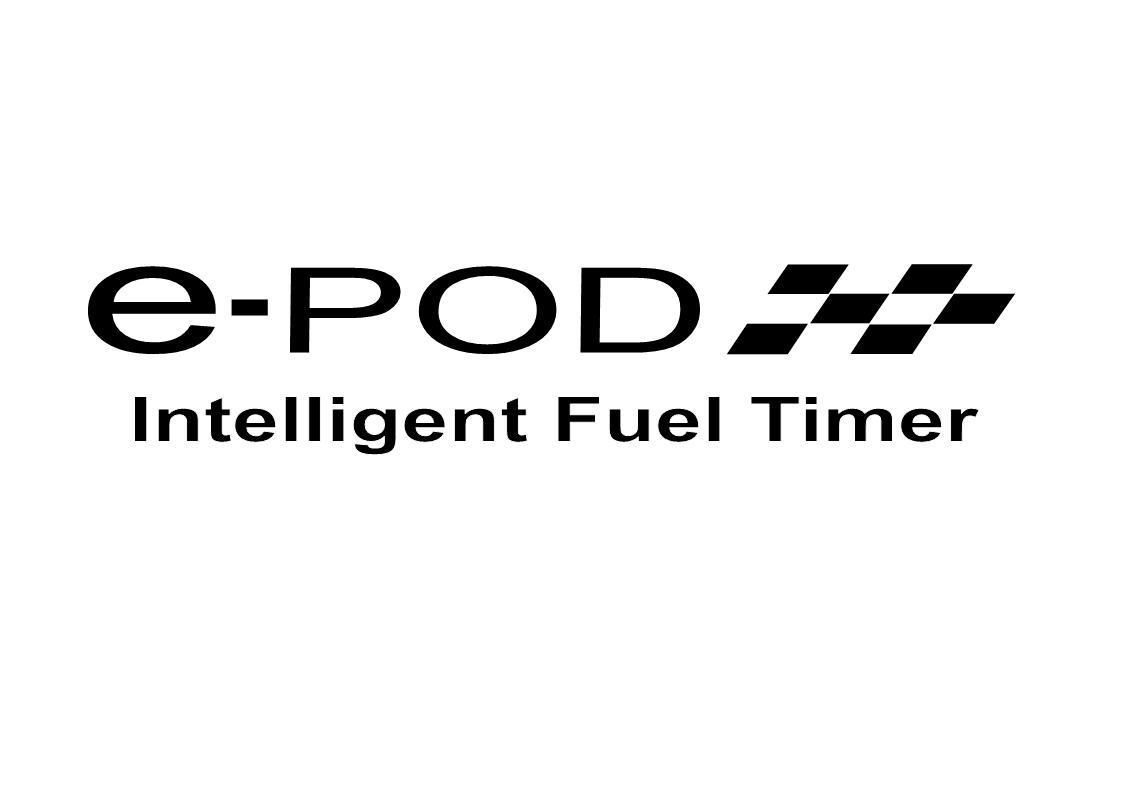

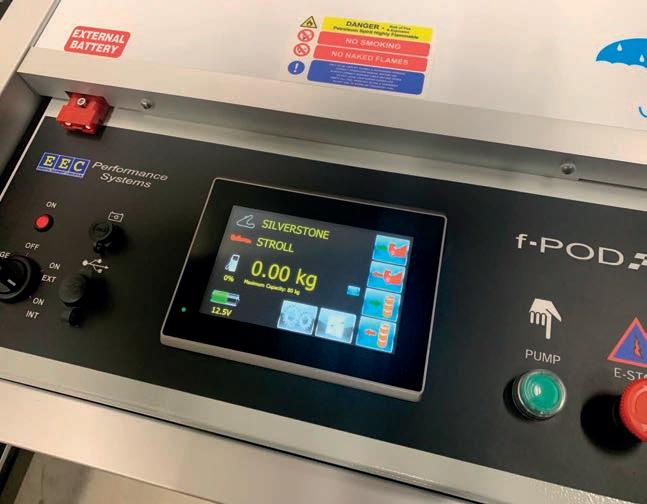
Decades of experience in applying digital engineering and computational fluid dynamics (CFD)
ACTIVE POLYMER TECHNOLOGIES
Design • Analysis • Manufacture
We specialise in the design and development of technologically advanced polymer products for use within motorsport, defence and industry.
Our design activities are dominated by expert use of the latest Finite Element Analysis software.
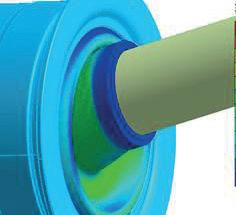



We manufacture high performance polymer products including:

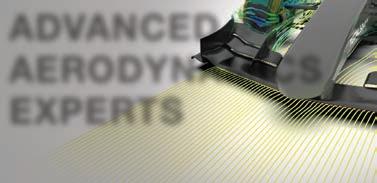
















• Low ProfileCVboots
• High performance PTFE Linedshaftseals
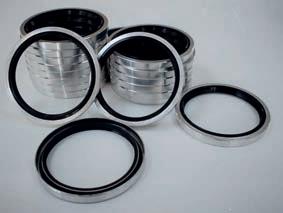






















• Bladder accumulators
• Custompolymersolutions
• AV mounts
For moreinformationvisit: www.active-polymer.com

Tel: +44(0)7756 515772 • Email: support@active-polymer.com

Hidden treasure?
Toyota’s updated GR010 has been on a diet in the latest upgrade package. Technical director, Pascal Vasselon, runs through the details
By ANDREW COTTONToyota has unveiled the second generation GR010 for the 2023 FIA World Endurance Championship. The car has been sympathetically updated, bearing in mind cost constraints and homologation limits, which have prevented Toyota Gazoo Racing (TGR) from going to town on the updates. Nevertheless, the team says its 2023 package is lighter and more serviceable.

The car retains the GR010 name as the chassis and engine are the same, although the latter has been developed for weight saving purposes. The regulations state there can be no improvement in power as it is limited and monitored, with torque sensors fitted to the driveshafts, and there can be little performance gain from aerodynamics due to the cars fitting into a narrow window of the lift / drag graph.
That’s not to say that there cannot be development. Aerodynamics can be improved to widen the operating window of the car and make it behave itself better in a broader range of conditions. The power band of the engine can also be improved, though any performance improvement is limited by the FIA’s ‘joker’ package.
Despite this, changes to the car were surprisingly few, given the original version was built to a set of regulations that has changed dramatically in the last three years. Originally, the minimum weight was 70kg higher than the car raced in 2021. The team could run a closed front differential, and the minimum deployment speed for hybrid power only applied in the wet. There was no cockpit-adjustable anti-roll bar option for the LMH cars either, but that has changed.
Racing overweight
Toyota was only partially able to address the change in weight before the car made its debut in 2021, but the diet sent the balance of the car to the rear, and anyway the team admits it has been racing overweight for two years, although refused to admit by how much. TGR will only say it lost much of the required weight but not how much.
The shift in balance prompted a change in tyre concept, to narrower front tyres and wider rear tyres for 2022, and the team is now locked into that regulation.
‘We fixed the main problem,’ says technical director, Pascal Vasselon, talking of the weight loss for the 2021 car. ‘Nevertheless, our car was still overweight, and was still significantly over the 1040kg, which is the minimum weight of an LMH four-wheel drive. Naturally, for this evolution, we made several weight saving steps where possible.’
This included revising the engine, gearbox and battery, notably areas around the mid-section and rear of the car, in a bid to balance it better and to make it more driveable in a wider range of conditions.
It was something of a surprise that very little was done to the front Motor Generator Unit, given the large changes made to the regulations in terms of how it can be used.
‘The change in deployment speed has massively reduced the benefit of the four-
wheel-drive system, but it did not change anything in terms of sizing and weight because the front motor is still allowed to be 200kW,’ says Vasselon, referring to the rules that limit electrical power output.
‘The load cases are very similar to before, so there was no real reason to do weight saving here. The best weight saving would have been to drop the front motor, but this was not likely to happen.’
Minimal impact
There was little to be done in terms of either mechanical or aerodynamic efficiency at the front of the car. Aero is strictly limited by the Balance of Performance regulations, and so any change there would have minimal impact. Even mechanically there was little evolution at the front.
Changes to the car were surprisingly few, given the original version was built to a set of regulations that has changed dramatically in the last three years
Despite some major changes to the regulations, the 2023 version of Toyota’s WEC car is remarkably similar to the 2021 version it replaces. Detail updates have largely focused on serviceability, along with a weight reduction at the rear

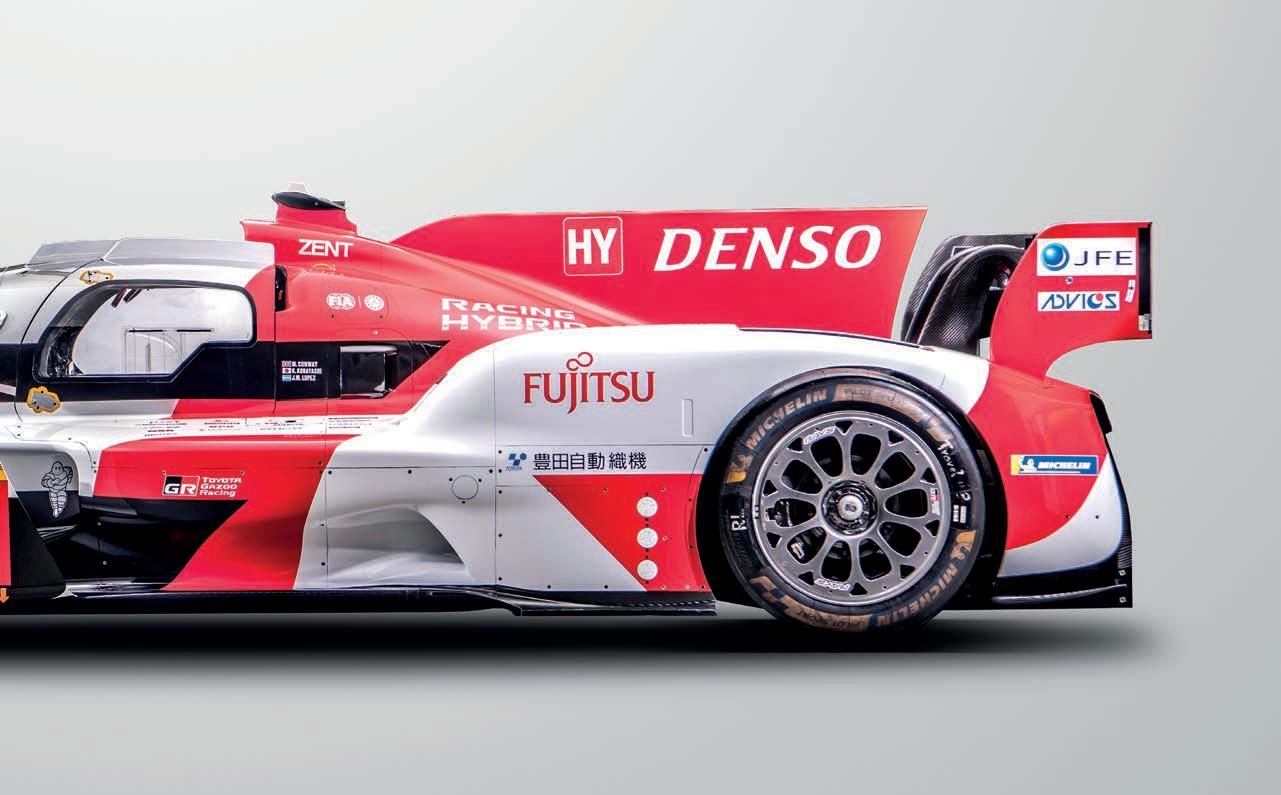
‘There were no grounds to do so based on the regulation evolution,’ confirms Vasselon. ‘Yes, we are constrained in terms of deployment speed, but the maximum power did not change. The differential had to change because we are not allowed to have large transfer rates, but this is a very minor hardware change that has no impact on weight.
Cost constraint
‘All we have done had an additional constraint – it had to be cost effective. Maybe we could have developed the front motor to achieve very slight efficiency improvements, but we didn’t do this, simply because the value for money was not there.’
The team was also constrained by the ‘joker’ system, which allows teams to introduce upgrades to its package within the five-year window of homologation. However, Vasselon was not willing to discuss how many jokers the team had used, as they are only valid for performance upgrades, not for reliability or cost upgrades.
The FIA works closely with the manufacturers on an individual basis to establish if an upgrade is solely performance, and then decides what penalty should be applied to the car in order to maintain the Balance of Performance.


‘You are allowed to implement additional performance factors when you can demonstrate a deficit,’ explains Vasselon.
‘Then you start counting the jokers. The joker parameters are very wide, but this is the regulation.’
Cooling off
The team has changed the aero for the car slightly, introducing smaller rear wing end plates and improving the cooling to the brakes through new vents at the front and
rear. New dive planes have also been added to the front of the car, and the bodywork has been further developed to facilitate quick changes in the pit when needed.
The team has also revised the headlight layout to improve visibility at night.
‘In the past two seasons we have at times been struggling to adjust the brake cooling,’ confirms Vasselon. ‘Brake cooling is critical
on a hybrid car because the level of braking energy is related to your recovery rate, which can be driven by other factors.
‘You have a viability of braking efficiency, which is much higher than on a purely mechanical non-hybrid car. At times we were struggling with brake cooling adjustments because our cooling concept was not easy to blank. Here, we went with a different cooling duct arrangement so we can add or remove blanking very easily.’
While the team focused on serviceability, the biggest cause for concern was the electronics in the car, which have caused delays at multiple races. Vasselon explains that this was more of a system issue of
software than one of hardware, and the team are hopeful they have finally got on top of the problems.
Warming up
One of the biggest changes to the regulations for this year is the loss of tyre warmers in all classes in the WEC. Although this was common in other racing series, such as IMSA’s WeatherTech Sportscar championship, it’s new to the world championship and there has been resistance from some teams, saying it doesn’t help the environment if a car crashes on cold tyres. They also highlight the fact that qualifying has been increased from 10 to 15 minutes to help generate tyre temperature, increasing the time on track and burning more fuel. However, the FIA is trying to reduce the use of tyre warmers and supporters say it could add to the racing.

Tyre supplier, Michelin, offers the same product for both series, despite the fact the WEC tracks are traditionally more abrasive than those in the US. ‘The regulation is the same for everyone,’ says Vasselon diplomatically of the new rules. ‘Even if it sets a challenge to all the teams, we all know it’s a necessary challenge. There is no
discussion on that. Probably the reason why the decision came so late was because we all had to make sure our tyre supplier was ready on time. We also have to consider that [not using tyre warmers is] more of a challenge in winter, especially for us when we are only testing in Europe for cost reasons. Europe is on the cold side in winter, and this makes it more difficult. We will pay attention to managing the cold tyres, but it will be less of a challenge to manage the cold tyres with 35 degrees on the ground at Sebring than at Paul Ricard with two degrees at night.’
The tyres themselves are also different compared to last year, and in the early races Porsche and Cadillac stole a march on the LMH manufacturers, having received theirs in December for a test at Daytona, and then having raced on them in the Daytona 24 hours in January.
That extra mileage in race conditions may help them on the low-grip circuit at Sebring, but the LMH manufacturers have tested on the European tracks, unlike Cadillac, which so far has mostly tested in the US.
‘The tyres definitely require some special handling,’ concludes Vasselon. ‘From the car set-up side, as well as the driver side, but I’m not going to elaborate on it.’
‘At times we were struggling with brake cooling adjustments [so] we went with a different cooling duct arrangement so we can add or remove blanking very easily’The front end of the car remains largely the same as the previous version, Balance of Performance making any nominal aero gains that might have been found largely redundant
Captain’s log
What you need to log, and why it won’t cost you the earth to do so
By DANNY NOWLANAquestion that comes up from time to time from a chassis perspective is what data channels do you actually need? I get asked this on average once every two years and I first wrote about this in 2016, re-visiting the subject in 2018.
As this is actually a very valid question, it is wise for us to re-visit it again here because there is a lot of good stuff to consider.
In short, in order to obtain the useful data you need to engineer a racecar, you don’t need to monitor everything, so it won’t cost you the earth. This also offers a timely opportunity to remind ourselves how regulatory authorities love the idea of dumbing down motorsport on the altar of cost cutting. As we will soon see, not only is this unwise, it is a classic case of cutting off your nose to spite your face.
Before we get started, let’s first clear up one huge misconception that abounds in this business, and that is in order to engineer a car properly, you need to spend a king’s ransom on data acquisition. Not only is this categorically false, it’s a dangerous misconception, particularly in the junior formulae, where damper pots and the like are banned.
Data literate
As a case in point, categories like Formula 4 have been created as the new nursery for drivers, engineers and mechanics learning their craft. As they progress up the ranks, if they are not data literate, they don’t stand a hope.
is why F4 / F3 and Formula Renault cars must run data logging with the appropriate sensors. To not do so will have terrible consequences for the development of the world’s drivers, engineers and mechanics.
Not to mention the fact it will also look completely ridiculous to have a situation where club cars and games like iRacing, rFactor and Project Cars have more data logging that a professional formula car!
The great news is the core of what you need to log on a racecar can be distilled down to 17 channels, as shown in Table 1
Table 1: Core channels you need to log
Channel RoleFrequency
Engine rpm Engine / chassis 50Hz
Engine temp Engine 10Hz
Oil pressure Engine 10Hz
Lateral acceleration Chassis200Hz
Vehicle speed Chassis50Hz
Inline acceleration Chassis200Hz
Vertical acceleration Chassis200Hz
Steering Chassis50Hz
Table -1 isn't just based on text book theory. What you have seen outlined 1is the basis of the ChassisSim monster file and the engine channels port of call of any engine diagnostic you should be looking at when downloaded. Also brake pressure channels are essential for driving monitoring the health of the braking system. Logging gear position thing but honestly you can infer it from data. I've also added the vertical GPS channel because recently I have found this invaluable for completi models that take into account camber and track undulation. As we will further detail this is not going to be a channel list that will break the
Throttle Engine / chassis 50Hz
Front brake pressure Chassis50Hz
This list is not just based on textbook theory. What you see in Table 1 is the basis of the ChassisSim monster file, and the engine channels are the first port of call of any engine diagnostic you should be looking at when the car is initially downloaded.
Rear brake pressure Chassis50Hz
Gear position sensor Chassis10Hz
Damper position FL Chassis200Hz
Damper position FR Chassis200Hz
The first point to beraised is that this information can be used to reverse aerodynamics of the car. I have discussed this on many occasions but present a quick recap. Every damper pot on the car is a load cell. That given by,
Damper position RL Chassis200Hz
Damper position RR Chassis200Hz
Brake pressure channels, meanwhile, are essential for driving coaching and monitoring the health of the braking system.
GPS altitude Chassis10Hz
(1)
Likewise, any driver worth their salt must have the ability to review data and understand what they did. This is what separates the contenders from the competitors.
Logging gear position is also a good thing but, honestly, you can infer it from data.
I’ve also added the vertical g sensor and GPS channels because recently I have found them invaluable for completing circuit models that take into account camber and track undulations.
Reverse engineering
Table -1 isn't just based on text book theory. What you have seen outlined in Table1is the basis of the ChassisSim monster file and the engine channels that arethe first port of call of any engine diagnostic you should be looking at when the car is initially downloaded. Also brake pressure channels are essential for driving coaching and monitoring the health of the braking system. Logging gear position is also a good thing but honestly you can infer it from data. I've also added the vertical g sensor and GPS channel because recently I have found this invaluable for completing circuit models that take into account camber and track undulation. As we will discuss in further detail this is not going to be a channel list that will break the bank.
where is the force of the spring damper unit at the wheel, and movement and velocity of the spring, k is the spring rate or function damper rate or damper function specified at the damper, and MR is the spring expressed as damper/wheel movement. It is assumed the function is when the car is on the ground. In most cases the spring function, spring rate. If bump rubbers are used the spring function k can be easily lookup table. If your fortunate enough to have strain gauges fitted to the hard work in equation (1) has been done for you.
It is assumed the zero of the spring function is when the car is on the ground. In most cases, the spring function, k, is a spring rate. If bump rubbers are used, the spring function can be easily deduced by a look-up table. If you are fortunate enough to have strain gauges fitted to your racecar, then all the hard work in equation 1 has been done for you.
Now the spring force has been determined, we need to determine tyre deflection. In the absence of laser ride height sensors, the tyre deflection is given by equation 2.
The first point to beraised is that this information can be used to reverse engineer the aerodynamics of the car. I have discussed this on many occasions but allow me to present a quick recap. Every damper pot on the car is a load cell. That spring force is given by,
The same logic applies for teaching young engineers and mechanics what to look for in the data so they can engineer the car effectively. Take it from someone who has been in the trenches as both a race and data engineer, this is one of the first skills you must learn. Which in a nutshell
The first point to be raised is that this information can be used to reverse engineer the aerodynamics of the car. I have discussed this on many previous occasions, but allow me to present a quick recap. Every damper pot on the car is a load cell, and that spring force is given by equation 1
ow the spring force has been determined we need to determine tyre the absence of laser ride height sensors the tyre deflection is given (2)

where k is the spring rate of the tyre. This is where things can get a know tyre spring rate is a function of wheel speed, tyre pressure and However to get started I would suggest you use a single approximate going. While not strictly accurate, it will form a basis on which to get can add a more complex analysis later. Also in my experience if the of k is chosen this can actually get you very close.
Where,
s is the force of the spring damper unit at the wheel xs and ͘xs is the movement and velocity of the spring is the spring rate, or function c is the damper rate, or damper function specified at the damper MR is the motion ratio of the spring expressed as damper / wheel movement
This is where things can become tricky. As we know, tyre spring rate is a function of wheel speed, tyre pressure and camber. However, to get started, I would suggest you use a single approximate figure. While not strictly accurate, it will form a basis
where is the force of the spring damper unit at the wheel, and is the movement and velocity of the spring, k is the spring rate or function and c is the damper rate or damper function specified at the damper, and MR is the motion ratio of the spring expressed as damper/wheel movement. It is assumed the ero of the spring function is when the car is on the ground. In most cases the spring function, k is a spring rate. If bump rubbers are used the spring function k can be easily deduced by a lookup table. If your fortunate enough to have strain gauges fitted to the car, then all the hard work in equation (1) has been done for you.
Once the deflection of the tyre is known the user can deduce how much the car compresses under this load. This deflection can be deduced
ow the spring force has been determined we need to determine tyre deflection. In the absence of laser ride height sensors the tyre deflection is given by,
The core of what you need to log on a racecar can be distilled down to 17 channels
spring rate of the tyre. This is where things can get a bit tricky. As we rate is a function of wheel speed, tyre pressure and camber. started I would suggest you use a single approximate figure to get you strictly accurate, it will form a basis on which to get going and you complex analysis later. Also in my experience if the appropriate value this can actually get you very close.
on which to get going and you can add a more complex analysis later. Also, in my experience, if the appropriate value of kt is chosen, this can get you very close.
Once the deflection of the tyre is known, the user can deduce how much the corner of the car compresses under this load. This deflection can be deduced by equation 3.
deflection of the tyre is known the user can deduce how much the corner of compresses under this load. This deflection can be deduced by,
Where,
di is the compression of the corner of the car for corner i xsi is the spring deflection for corner i wmi is the wheel movement for corner i
The convention for the car corners is at the discretion of the user, but the convention I use is one for left front, two for right front, three for left rear and four for right rear.
Once the user has deduced the corner deflections, the ride heights can be calculated. The front and rear ride heights, rhf and rhr, are given by equation 4
Fig-1 -Example of correlation for a V8 Supercar on a street
And to think all this was generated using only the data provided in Table 1. It did not, as many think, require a $100,000 data logging suite.
Circuit model
As always actual data is coloured and simulated is black. The the second trace is throttle, the third and fourth traces are dampers is steering. The morale of the story is all this was generate provided in Table 1. It did not require a $100 000 data logging
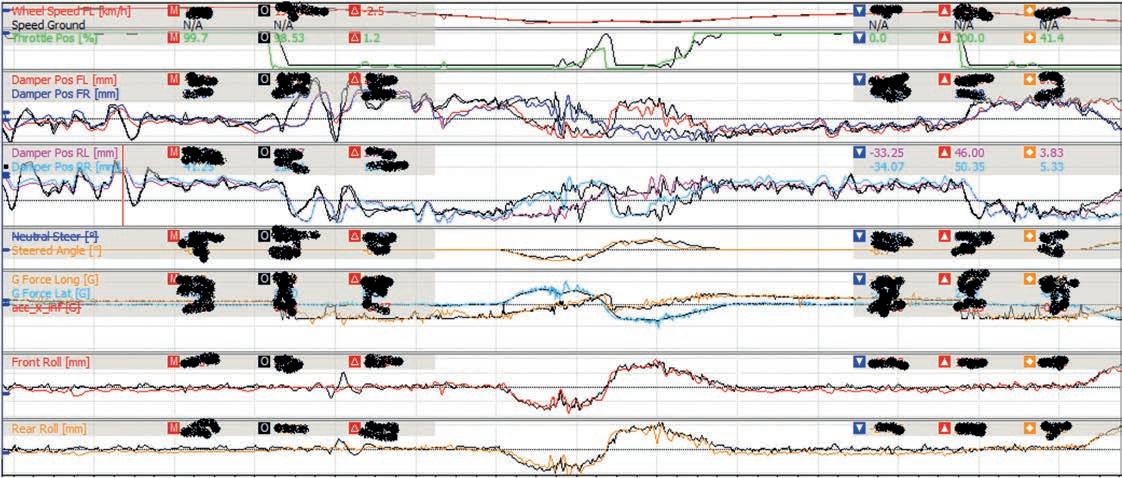
You can also readily create a circuit model from a car fitted with the channels outlined in Table 1. Firstly, the lateral acceleration you can deduce the curvature file, which describes the path the vehicle takes. The methodology for this is given by equation 6
Also you can readily create a circuit model with a car fitted in Table -1. Firstly the lateral accelerationyou can deduce describes the path the vehicle takes. The equation for this is Here we have
is the compression of the corner of the car for corner i, is the spring deflection for corneri, and is the wheel movement for corner i. The convention car corners is at the discretion of the user. The convention that I use is 1 is the front, 2 is the right front, 3 is the left rear and is the right rear.
Where,
CLA (sometimes called CZ / CzT) is the lift coefficient CDA (sometimes called Cx / CxT) is the drag coefficient awf is the factor of downforce on the front T(rpm) is the engine torque in Nm gr is the gear ratio (in terms of torque multiplication from engine to gearbox) rt is the rolling radius of the tyre
Where,
iR = Curvature (1/m)
iR = curvature (1/m)
ay = Lateral acceleration (g)
ay = lateral acceleration (g)
V = Vehicle Speed (km/h)
V = vehicle Speed (km/h)
cv_sign= Sign of corner (+1 for ay being positive -1 for a left hand turn)
the user has deduced the corner deflections the ride heights can be calculated. front and rear ride heights rh and rh are given by,
I have presented on multiple occasions an F3 hand calculation example, and what I have just shown forms the basis of the ChassisSim aero modelling toolbox.
and are the initial ride heights. These can be either drop heights or heights from the floor. The choice is really up to the end user and whether they clarify the aeromap by either drop or floor heights.
Where, rhf 0 and rhr0 are the initial ride heights. These can be either drop heights or ride heights from the floor. The choice is up to the end user and whether they want to clarify the aeromap by either drop or floor heights.
The other thing you can do with the data in Table 1 is use it to reverse engineer the tyre model of the car. You can do this by doing a bunch of track replays and changing the tyre model to minimise the differences between actual and simulated g. This is the basis of the ChassisSim tyre force modelling toolbox, and the results are shown in Figure 1
cv_sign = sign of corner (+1 for ay being positive for a righthand turn, -1 for a left-hand turn)
This is one of the best kept secrets of data analysis. The roa reverse engineered from the dampers (the ChassisSim bump excellent case in point). Lastly you can reverse engineer the vertical g accelerometer and GPS data. It is actually a spin we just sub az for ay and look at the vertical curvature from by the GPS Altitude. We simply compare this to the normal az and the difference is the road camber. That's how straight
that we have clarified the ride heights and forces for this particular point the aerodynamic forces associated with this point is given by,
Now that we have clarified the ride heights and forces for this particular point, the aerodynamic forces associated with this point is given by equation 5
Now this is one of the best kept secrets in data analysis. The road surface profile can be reverse engineered from the dampers (the ChassisSim bump profile modelling is an excellent case in point).
However the real question to answer is what is the price? The exorbitant as you would think.Let me present two options be Motec the other Magneti Marelli. The break down of prices presented in Table -2
As always, actual data is coloured and simulated is black. The first channel is speed, the second trace is throttle, the third and fourth traces are dampers and the fifth trace is steering.
Table -2a-Breakdown of prices fordata logging-Motec
(sometimes referred to as C are the lift and drag coefficients, awf is the fa is the engine torque in m, gr is the gear ratio (in ter multiplication from engine to gearbox) and r presented on multiple occasionsan F3 hand calc example. What I have just presented basis of the ChassisSim aero modelling toolbox.
other thing you can do with the data presented in Table -1 is to use this data to engineer the tyre model of the car. ou can do thisby doing a whole bunch of replays and changing the tyre model to minimise the differences between actual
Lastly, you can reverse engineer the road camber from the vertical g accelerometer and GPS data. It is actually a spin off from equation 6. Here we just sub az for ay and look at the vertical curvature from the road surface provided by the GPS altitude. Then we simply compare this to the normal curvature calculated from az and the difference is the road camber. That’s how straightforward it is. Bearing in mind what I said earlier about king’s ransoms and the cost of the earth, the real question to answer is what is the price of all this? To answer that fairly, let me present two options you can go with.
One is MoTeC, the other Magneti Marelli. The breakdown of prices, in Australian dollars, is presented in Tables 2a and 2b
Table 2a: Breakdown of prices for data logging, option 1 – MoTeC
Item Price
MoTeC ADL 3 $5000
Three-axis accelerometer $1200
Damper pots $400
Steering sensor $200
Throttle sensor $200
Temp sensor $200
Pressure sensor $400
Brake pressure sensor $197.50
GPS package $400
Table 2b: Breakdown of prices for data logging, option 2 – Magneti Marelli
Item Price
But pay this expense once on all your data logging gear and every minute you spend testing on track afterwards instantly becomes more valuable.
Of course, what we have just covered is only the bare bones to get you started with data logging. If you want to take things over the top and have everything you could possibly need, allow me to refer you to Table 3
Over the top
Equip yourself, and your racecar, with all these channels and they will give you everything you need to not just race engineer the car, but to be able to develop it. Let’s break this list down a bit.
Firstly, laser ride heights and the suspension loads complement the damper pots quite nicely. The suspension loads, also known as strains, similarly complement the damper pots nicely, and this combined with the suspension movement will allow you to nail down the tyre spring rates.
Table 3: Extra data channels to take you all the way
Channel RoleFrequency
Pitot speed Chassis50Hz
Suspension load front left Chassis200Hz
Suspension load front right Chassis200Hz
Suspension load rear left Chassis200Hz
Suspension load rear right Chassis200Hz
Front laser ride height Chassis200Hz
Rear laser ride height Chassis200Hz
Internal tyre temperature
front left Chassis10Hz
Internal tyre temperature
front right Chassis10Hz
Internal tyre temperature
rear left
Chassis10Hz
rear right Chassis10Hz
Internal tyre temperature
External tyre temperature
front left
External tyre temperature
front right
Chassis50Hz
Chassis50Hz
External tyre temperature
rear left Chassis50Hz
Magneti Marelli
DDU310 dash logger $5350
Three-axis accelerometer $395
Damper pots $450
Steering sensor $225
Throttle sensor $127.50
Temp sensor $65
Pressure sensor $185
Brake pressure sensor $197.50
GPS package $1150
Whichever road you take, the investment is around Aus$10,000, including tax (approx. £5665 / US$6860). Not outrageous for everything you’ll need to effectively engineer a racecar, especially bearing in mind these are also the Rolls-Royce options. There are systems like AIM that can get you going for even less, and I would invite Cosworth Electronics to put in its own costings.
Bottom line
The Confederation of Australian Motorsport (CAMS) is capping the cost of Formula 4 at Aus$170,000 (approx. £96,300 / US$116,675) and a rolling chassis will cost you in the order of Aus$60,000 (approx. £33,990 / US$41,180).
If you still think that sounds a lot, think of it another way. $10,000 would roughly cover a couple of days of testing. Too high? Be honest with yourself here, and factor in flights, accommodation, car transport, sustenance for driver, engineer and two mechanics as well as the cost of running the car. It soon adds up.
I could have added laser ride heights left and right to this already extensive list but you can nail that down with just the two laser ride heights at the front and rear that I have mentioned. However, these sensors do come with a word of warning: do not skimp on these products. Laser ride height sensors and strains are a bit like romantic movies. When they work they are fantastic, when they don’t work they are awful, so choose wisely.
What the tyre temperature sensors do is allow you to fully understand what the tyre on your racecar is doing. Ignoring tyre temperature effects with race tyres is like denying there is a river in Egypt. Foolish, at best. Knowing the internal and surface temperatures reveals what is truly going on with the tyre, and is why I put so much trouble and effort into incorporating this in the ChassisSim tyre model.
Lastly, yaw rate will finish the picture. The reason is because it allows you to determine what is going on with sideways velocity, and nail down the picture of the stability index I have written about on multiple occasions.
Returning to money for a moment, the strains and laser ride heights will set you back about Aus$1000 each, and the tyre temperature monitoring a further Aus$5000. A good yaw rate sensor is about Aus$1000 so, if you tack all that onto the original expenditure of around Aus$10,000, you can go all out for another Aus $13,000.
Pricey, perhaps, but given that a GT3 car is in six-figure territory, what’s an additional few grand?
External tyre temperature
rear right
Chassis50Hz
Yaw rate sensor Chassis50Hz
GPS altitude Chassis10Hz
My final two cents on the matter is simply to say you will live and die by the quality of your sensors. If you are a running a club car, or something like a Formula Ford and want to get started, you can use cheaper sensors. But this only buys you time. Once you are at F4 level, or above, do it once and do it right.
Just as a couple of examples, Texense Sensors provide a great range of sensors, from damper pots and steer sensors to accelerometers, and its US branch is very knowledgeable (and not as expensive as you might think). When it comes to tyre sensors, and tyre pressure monitoring systems, bf1 systems are well worth a look.
Conclusion
In summing up, not only is data logging essential, both for understanding and running your car, but also to educate yourself on the essential skills you need as you progress up the motorsport ladder.
You only need a handful of channels to achieve meaningful results, and the correct combination of them will allow you to reverse engineer further parameters on the car, making it a perfect complement to tools such as ChassisSim. The combination of the two will allow you to extract the maximum performance from your racecar.
Laser ride height sensors and strains are a bit like romantic movies. When they work they are fantastic, when they don’t work they are awful


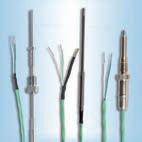
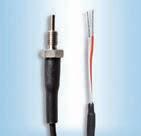










IN BRIEF
The Detroit Grand Prix, held on the weekend of 2-4 June on a new downtown street track, will see Geobrugg mobile debris fence system protect spectators around the track. The race weekend, which is free to spectators, will feature IndyCar, IMSA Michelin Pilot Challenge, Indy NXT and Trans Am.
The Automobile Club de l’Ouest has followed other racing series in prolonging existing technical regulations for LMP3 to the end of 2026, ensuring the four selected chassis constructors will have their cars remain eligible in ACO-organised series for a further four years.
The FIA has expanded its FIA Race Directors and Stewards Development Pathways through the launch of its new FIA High Performance Programme for Officials. This comprises a group of 24 trainees, including eight stewards and 16 race directors, along with experts and mentors. The trainees will attend FIA motorsport events to shadow and observe senior officials who will act as their mentors.
Bridgestone has confirmed its ‘alternative tyre’ for the IndyCar series will use rubber derived from the guayule shrub at all five street circuits of the 17-race season. The company will also use synthetic rubber made from recycled plastics in all of its race tyres for the 107th running of the Indianapolis 500 that takes place in May.

New Pirelli wets don’t require pre-heating
Le Mans 2023 entry list
The 100th edition of the 24 Hours of Le Mans will have the largest field of Prototypes in the top class since 2011. No fewer than 16 Hypercars are confirmed among the 62-car grid, representing seven manufacturers.
The category has seen a massive increase in popularity as the LMDh class cars, nominally based on an LMP2 chassis but with manufacturer engine and aero kit, is eligible to race in both the FIA WEC and IMSA’s WeatherTech Sportscar Series. Even within the LMH group of cars, designed and built from the ground up, the cost of competing in the top class with these cars has plummeted compared to the old LMP1 cars, while return on investment has increased due to the global regulation set.

‘The Hypercar class reached an impressive 16 cars, which is the highest seen in the top class at Le Mans in over a decade,’ said Endurance Commission president, Richard Mille. ‘This is exactly what we envisaged in the early days of developing the Hypercar concept.’
The top class will also feature Ferrari for the first time in more than 50 years. Also making its debut is Colin Kolles’ Vanwall Vandervell 680, which will feature in next month’s edition of Racecar Engineering, and Peugeot’s 9X8, which missed last year’s event in order to prepare for the FIA WEC campaign after Le Mans.
The British JOTA team has made the list with its Porsche 963, the only privateer Porsche
in the top class, as Sam Hignett’s outfit takes on the factory team run by Penske Motorsport.
Cadillac will have three of its LMDh class cars at Le Mans, with two run by Chip Ganassi Racing and a third by the Action Express Racing team.
Alongside the Hypercars, the Automobile Club de l’Ouest has confirmed 24 entries in LMP2 and 21 in the GTE-Am category. The LMP2 grid is made up entirely of ORECA chassis, each powered by Gibson engines. The British company will power more than 40 per cent of the entire Le Mans grid this year.
There is also an entry for Hendrick Motorsport with the GM Camaro based on the NASCAR Gen 7 which is still in development.
F1 to ditch tyre warmers for wets?
Formula 1 is set to abandon the use of tyre warmers for its wet weather tyres from the Imola Grand Prix in May onwards, after Pirelli developed a compound that means teams can use the tyre without the need for heating blankets. It is part of a strategy that has seen other FIA series lose pre-heating systems for their tyres in a bid to improve the environmental image of the sport.
At the first meeting of the Formula 1 Commission this year, it was confirmed that, subject to approval, a new Technical
Directive would be issued that will allow teams to develop their cars outside of the Aerodynamic Testing Restriction and outside the cost cap in order to accommodate the new tyre. The change will be made with the agreement of the teams, and track testing will begin during either the second or third quarter of the 2023 season.
Other measures on the Commission’s agenda, which have to be passed by the FIA World Motorsport Council, included the introduction of a winter shut
down period for competitors and power unit manufacturers and a change to parc fermé conditions during Sprint race weekends, allowing greater scope to change components prone to damage. The Commission proposed changes to various circuits on its schedule, including improving visibility on corner entry in Saudi Arabia, re-surfacing the entire Azerbaijan and Miami circuits, increasing the space between the pit stalls at Zandvoort and confirming a new pit building will be built at Qatar.
McLaren launches 720S GT3 EVO
McLaren has launched the updated version of its GT3 challenger, the 720S GT3 EVO, which will be homologated for competition in 2023. The car will be eligible to compete in races around the world on national and international levels, and will aim to build on the success of its predecessor, which has proven to be quick, and has won titles in Asia, the US and in Europe.
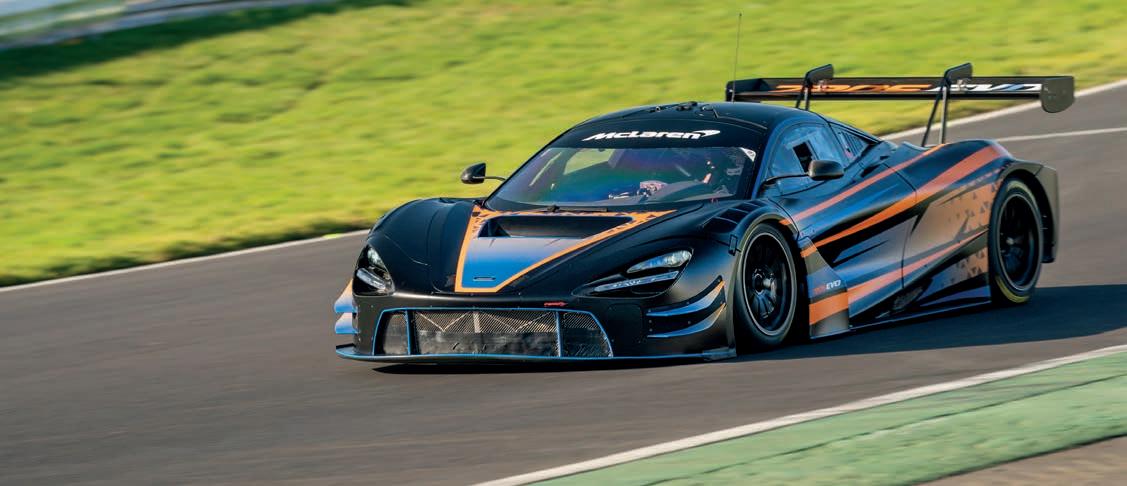
The EVO has several key bodywork improvements, the company tells us, including the front bumper and rear splitter being fitted with quick-release fasteners for easy removal and replacement. Aero has been improved too, increasing downforce, as well as shifting the overall balance of the car forwards.
The development team is hoping this will improve the car’s performance in traffic, as well as over a stint.
A front bonnet gurney also helps with balance and improves cooling, while the auxiliary lamp positions have been changed for better night time visibility in longer-distance events.

The rear wing pylon mechanism is now more easily adjusted, and the rear wing gurney is taller to enhance downforce without upsetting overall balance.
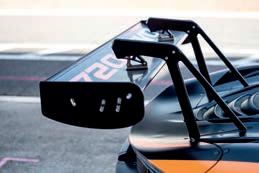
Under the skin, the car has also had something of a revamp. New Öhlins TTX40 four-way adjustable dampers with high frequency pistons have been introduced and the front and rear upper
wishbones changed, with the front now adjustable to improve tyre management options, a key factor in making the car more competitive in Balance of Performance formulae.
The rear suspension has improved geometry to suit upright changes, while the uprights themselves are also new, with the front featuring a bolted brake caliper for quick changes of the whole system as a unit and a built-in track rod clevis, making it more robust in wheelto-wheel contact situations. This also applies to the rear upright, which also benefits from new geometry for tyre management to increase set-up options.
Finally, the car has closed face bells for improved brake disc durability.
‘The McLaren 720S GT3 has been an incredible success in GT3 racing since its phenomenal debut four years ago, leading the Gulf 12 Hour race for several hours,’ says Ian Morgan, director of motorsport for McLaren Automotive. ‘In that time we have maintained a close relationship with our customer racing teams and have incorporated many of their recommendations into the new EVO package, improving consistence of performance and serviceability, which will ensure the McLaren 720S continues to set the pace in GT3 racing for many more years to come. Teams running the existing car can purchase the complete update kit, while the EVO itself is available to order now.
Three-phase safety for 24 Hours of Le Mans
The Automobile Club de l’Ouest has changed the safety car procedure for its showcase event at Le Mans in June in a bid to make the racing better. The 13.6km Circuit de la Sarthe requires three safety cars to manage the 62 cars, and races have been won or lost by falling behind the ‘wrong’ safety car. Balance of Performance makes it harder still for cars to make up any lost time and so the ACO has introduced a format that will allow cars to close up behind one safety car before a restart.
There will be three phases of the new restart. First, the field will bunch up behind one safety car. Second, cars that have their class leader behind them will be allowed to pass the sole safety car. Third, cars will align in their respective groups before the green flag falls. The only exception to this rule is if the race is in its final hour.
The plan will only be introduced at Le Mans, the one circuit on the WEC calendar that requires more that one safety car to neutralise all competitors after an accident.
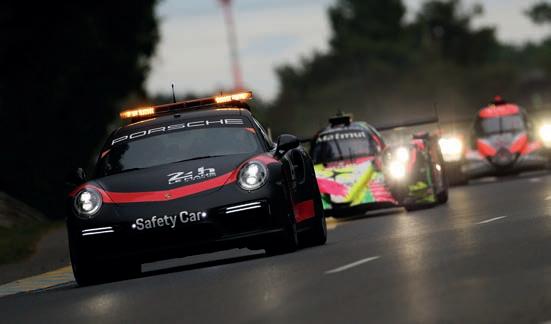
NXT Gen steps up production
The NXT Gen Cup, which races cars based on the electric Mini Cooper SE road car, has stepped up its production to 20 cars for this season, which starts at the Swedish Falkenberg track in July.
It is the first 100 per cent electric junior Touring Car cup, and the cars are bring prepared at the Lestrup Racing Team facility in Sweden.
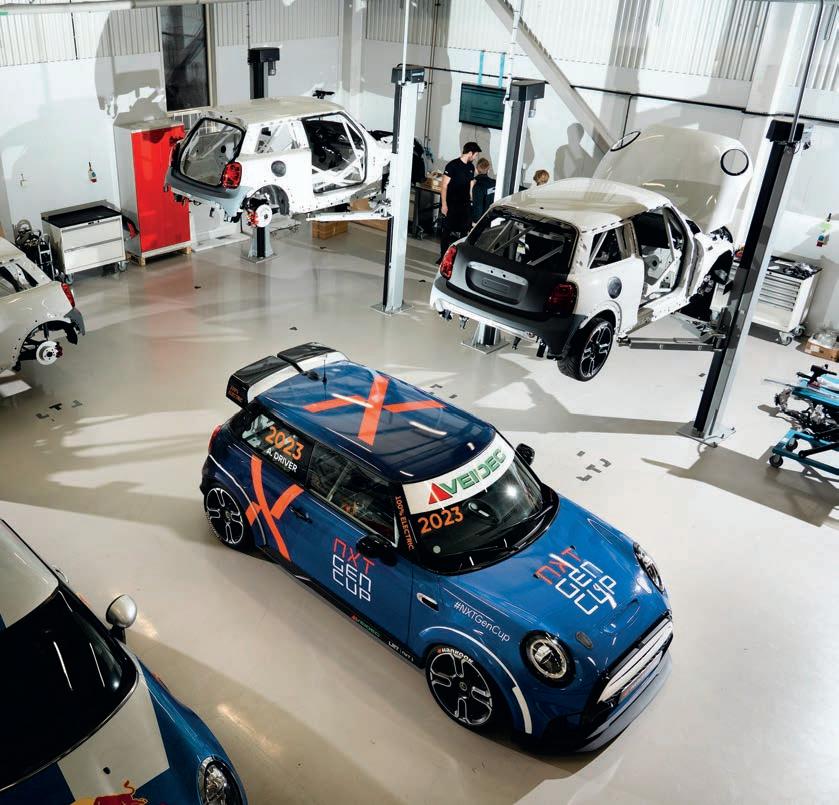
‘We received 20 new bodyshells in October last year from the Mini plant in Oxford, UK, and we are working at full capacity to turn these into the LRT NXT1 racecars,’ says Fredrik Lestrup, co-founder of the series.
‘The development phase is focused on a wide array of areas such as battery performance under intense race conditions, tyre performance and general durability. We have put thousands of kilometres on the prototypes, work that will continue alongside the production phase, as well as during the racing season to continuously improve the cars.’
The cars are powered by a 30kWh battery with an electric, liquidcooled motor that produces around 230bhp, according to which circuit it races on. The front-wheel drive cars also feature a push-to-pass function and are said to be able to complete 20 minute races at full pace thanks to the battery development.
Mahindra
maladies in Cape Town
Mahindra, and its partner, ABT Motorsport team, were forced to withdraw from the fifth round of the FIA Formula E Championship in Cape Town, South Africa, after a rear suspension problem manifested itself following the second free practice session.
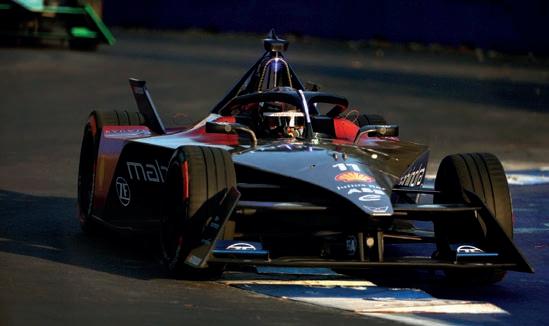
The cars had shown promise during early running during the weekend but Mahindra then established there was a problem, thought to be flexing, in the rear suspension.
‘Mahindra Formula E team have confirmed their withdrawal from the ABB FIA Formula E World Championship qualifying sessions and race in Cape Town due to rear suspension safety concerns,’ read a team statement issued at the event. ‘A thorough investigation

on the suspension elements of the Mahindra M9Electro racecars will take place on the team’s return to the UK. The decision also affects their customer team, ABT Motosport. The
safety of our drivers and extended teams is of the utmost importance.’
The rear suspension is one of the few free areas of design within the new Gen 3 cars and so was the
responsibility of Mahindra’s design team. However, according to some unconfirmed reports, it was an externally supplied part that failed on the bumpy street course.
The decision to withdraw the teams from the race meant the entry was depleted by four cars on the series’ debut at the South African circuit.
Tomorrow’s World
Motorsport and engineering has an exciting future. Be part of it
As we start this motorsport year, let’s reflect on the past and enjoy the significant changes to our business landscape ahead.
Our sport has great history. Le Mans is 100 years old this year,1946 saw the first Formula 1 race and 1948 the first NASCAR race. Surprisingly, in that time, very few individuals have truly led motorsport. In the USA there’s the France family, while in Europe we’ve had decades of Ecclestone, Mosley and Todt.
Moving into 2023, these series are all changing, but will these changes benefit those heavily invested in the motorsport industry? Will the closer relationship in US and European sportscar racing add value to the supply chain? Will pure electric racing grow, or will hybrids come to the fore? How valuable is the increase in popularity of Formula 1 on TV and social media? Is the increasing number of viewers why so many new automotive brands are engaging with the sport? So many questions, but also so many opportunities in the next decade.
Energy efficiency
It’s hard to believe, but the MIA’s first Energy Efficient Motorsport (EEMS) conference took place 20 years ago. I well remember Audi’s Ulrich Baretzky telling a disbelieving audience that their diesel-powered car would win the 24 Hours of Le Mans. And in 2006, it did just that.
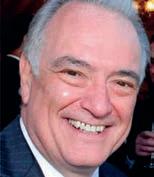
The novel concept of ‘energy efficiency in motorsport’ was widely welcomed across our industry.
We are now seeing subtle changes in the valuable, historic relationship between motorsport and mainstream automotive. Since Henry Ford used his race winnings to fund his new company, there have been close links between major automotive brands and the racetrack. Initially, motorsport departments were inside the production facilities, which then evolved into specialised competition departments within R&D. More recently, independent, specialised motorsport engineering companies are contracted to bring competition success to their brands.
These quick, efficient, agile, fast-response technology providers increasingly supply many other sectors, from aerospace to defence.
Outsourced motorsport-based suppliers move quickly to embrace new technologies at a development and delivery speed major companies cannot match. Next year’s development starts this year.
These fundamental changes, in just two decades, have led to the high-performance motorsport industry and supply chain that exists in the UK today. Links between automotive and these specialist suppliers remain close as the former becomes increasingly focused on plug-in electric vehicles – a solution favoured by governments around the world as they seek an emission-free future by 2050.
Motorsport will continue using its wellcontrolled, safe, racing environment on ‘private’ tracks or off-road facilities and not increasingly controlled highways. These enable us to test, develop and demonstrate radical solutions –hydrogen, alternative fuels, hybrids and the like.
Motorsport is a beacon for innovation. Its ability to resolve issues and provide solutions extremely fast is in high demand, which will not decline. Time is precious, with so many alternative solutions being considered, and the perfect test bed and demonstrator for these will prove to be our world-leading motorsport supply chain. Looking forward 10 years, I see an exceptionally successful period for motorsport. Our industry has matured well and is now an innovation-centred, mobility-focused one, based on high investment in R&D and attracting substantial inward investment.
Fast growing
And, at long last, motorsport has become fully engaged in the sports entertainment business, which is further great news for our industry. F1 is one of the world’s most popular and fastest growing sports entertainments, its recent expansion in the USA being mirrored in the Gulf States and Asia.
The Liberty Group acquired Formula 1 just six years ago yet already have a 24-race calendar, including a Las Vegas Grand Prix. Live attendance and viewing figures for 2022 confirm its outstanding success, and this year looks even better, with the British GP virtually sold out already.
The very freedom of competition development offered in motorsport could well become one of our primary assets securing future success.
March 21 is an important date. It is the date of our timely and valuable MIA Net Zero Motorsport conference – an open forum for you to debate, share ideas and discuss ‘Tomorrow’s World of Motorsport’. I hope you can join 150+ executives from leading international motorsport businesses at the British Motor Museum, Gaydon in the UK. There, we intend to discuss and clarify the changing landscape ahead and share knowledge of the exciting business opportunities that are fast arising because of it.
Data capture and its utilisation is central to this entertainment. Our audience is better informed by the technology of motorsport and keen to delve into the complexities of that data. Social media and a variety of other resources will attract and retain a new, young, technology-based audience.
March 21 is therefore the right time for you to meet, question and hear from Formula 1, Mercedes AMG, Dallara, ARAMCO, IMSA USA, TRD USA, AVL, WAE, WMG, Cosworth, Xtrac, Bosch and many others. We will also hear views on the future world of motorsport from engineering student representatives from Cranfield, Bath and Warwick Universities.
Full details of the MIA conference, forum, and other events, are at www.the-mia.com. Our aim is to get this exciting decade off to a good start, so I look forward to meeting you there. Good luck in 2023.

Our industry has matured well and is now an innovation-centred, mobility-focused one, based on high investment in R&D and attracting substantial inward investmentJake Galstad Motor manufacturers such as Cadillac have forged ever-closer relationships between road and race through recognisable design cues in IMSA’s Sportscar racing series
Editor Andrew Cotton @RacecarEd
Email andrew.cotton@chelseamagazines.com
Deputy editor Stewart Mitchell @RacecarEngineer
Email stewart.mitchell@chelseamagazines.com
Sub editor Mike Pye
Art editor Barbara Stanley
Technical consultant Peter Wright
Contributors
Mike Breslin, Lawrence Butcher, Alastair Macqueen, Danny Nowlan, Dieter Rencken
Photography James Moy
Group sales director Catherine Chapman
Email catherine.chapman@chelseamagazines.com
Head of sales operations Jodie Green
Email jodie.green@chelseamagazines.com
Advertisement manager Lauren Mills Tel +44 (0) 20 7349 3796
Email lauren.mills@chelseamagazines.com
Marketing executive Bret Weekes
Email Bret.weekes@chelseamagazines.com
Publisher Simon Temlett
Managing director James Dobson
Chairman Paul Dobson
Slippery when cold
There’s a fair amount of debate surrounding the use of tyre warmers in Europe at the moment. Even Formula 1 has got in on the act now, with Pirelli confirming it is able to produce a wetweather tyre for this season that does not need to be preheated before being fitted to a racecar.
In US racing it’s common not to have tyre warmers, but in Europe their use is widespread. Oddly enough, though, the US racing scene typically has less aggressive track surfaces and so, logically, heating tyres on a running car should be more challenging.
Much of the current debate in European racing centres on the environmental impact of tyre warmers, with a move towards banning them for that reason in all racing.
Secondly, while the level of driver skill at Le Mans is high, there is the issue of closing speeds. A pro on hot tyres will be travelling significantly faster than an amateur on cold tyres, and that could lead to drama, particularly in the dark. That one could at least be solved relatively easily. It was pointed out to me that a spotter at pit exit could identify a driver leaving the pit by their helmet, relay the information to the pro and give them every chance to take action to avoid an accident. It’s an extra level of complexity, but reducing the risk of an accident is not complicated.
Email:

This is not necessarily led by the series organisers. Michelin forged the way in the World Endurance Championship by looking to end the need for tyre warmers, and then received support from the organisation to implement a ban for this season.
According to folklore, Michelin’s cause was championed by Endurance Committee chairman, Richard Mille, who drove through the decision using the line that if people could not afford to heat their homes, then racing teams should not waste energy heating tyres for racing.
Michelin had since said it’s not an issue to build tyres that heat up quickly and that can last for a double, or even triple, stint during an endurance race. Typically, tyre companies are looking for 500-700km of running on a set of tyres at Le Mans, so having a fast heat cycle, coupled with that sort of longevity, presents the tyre manufacturers with a technical challenge. But it’s one they seem to want in order to improve the product, and their company image.
The road ahead
There are a few issues with this plan, though. One is that Goodyear was tasked by the organisers to produce a harder compound tyre for the LMP2 cars, while also at Michelin’s request losing the use of tyre warmers. After extensive testing, the company found it could produce a tyre that would do what was required. All good, you would think, but then came the teams, and they were less impressed.
Firstly, there is a higher risk of an accident on cold tyres compared to warm ones, and the repair costs would have to be borne by the teams, not the tyre companies that pushed for this change.
The next problem is one of sustainability. One could easily argue on that score that four tyres should last more than 700km, but that would be missing the point. As a result of needing to heat the tyres for a qualifying run, the WEC has extended its qualifying session by five minutes. That’s all cars, running on a track, for five minutes longer than originally planned. Admittedly, the cars now run on renewable fuel that emits less CO than traditional fuel, but that’s still a lot of cars running for longer just so we can get rid of tyre warmers, because they’re bad for the environment.
Added value
What will happen in Formula 1? Wet weather tyres work at lower operating temperature than slicks, but then the track surface will be colder if it’s wet. Assuming the go-ahead is given to running without blankets in the wet, I’ll look forward to when Pirelli get to build a new slick tyre that does not need pre-heating.
While endurance racing drivers and teams have the option to double stint tyres, leaving hot tyres on the car as part of the strategy, F1 drivers won’t. They will change tyres and deal with the handling issues on their out laps, whatever the lap time loss. It will be good fun watching them, and interesting to see who can best handle a car with low grip as the tyres come up to temperature. And I am certain that it will lead to a paddock full of grumbling, which is always fun for media and fans alike.
So, is banning tyre warmers good for racing in general? It is a small scratch on the surface when it comes to saving the planet. That argument only looks good on paper. However, the drivers will have to cope, and tyre companies will relish the technical challenge. What else should they do other than improve their product through racing?
ANDREW COTTON EditorAs with most things in racing, it is a small scratch on the surface when it comes to saving the planet










